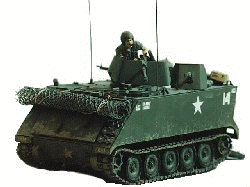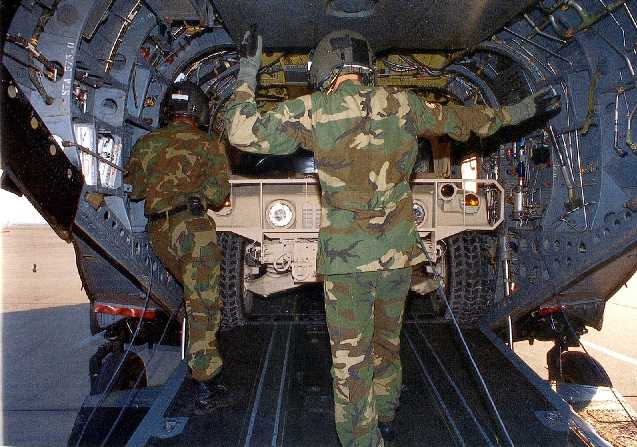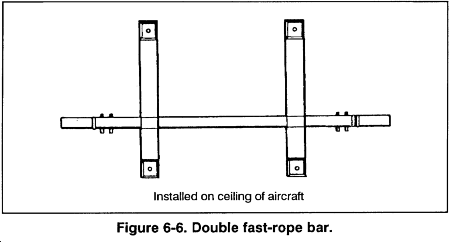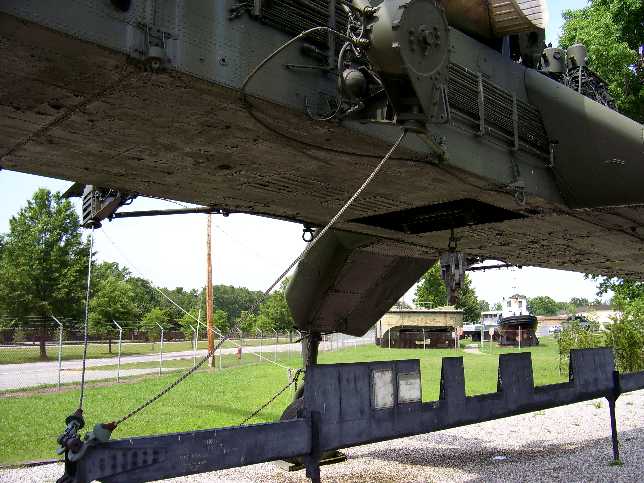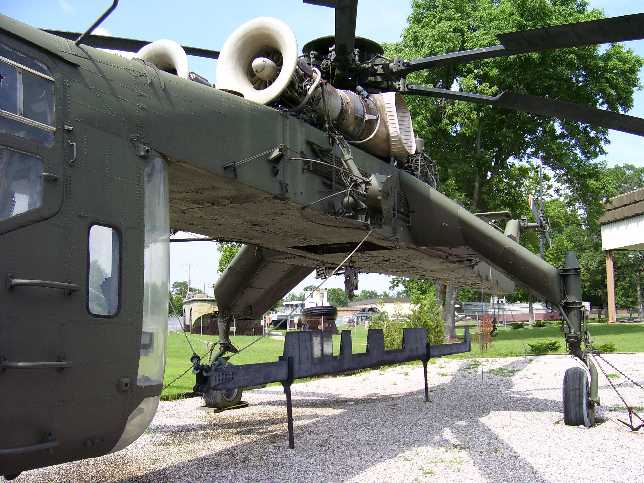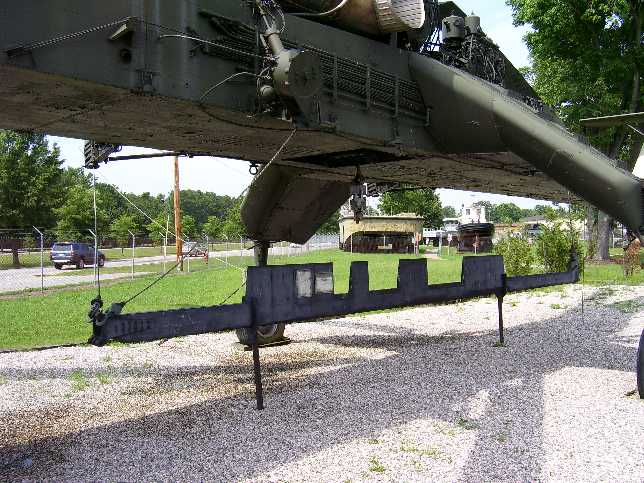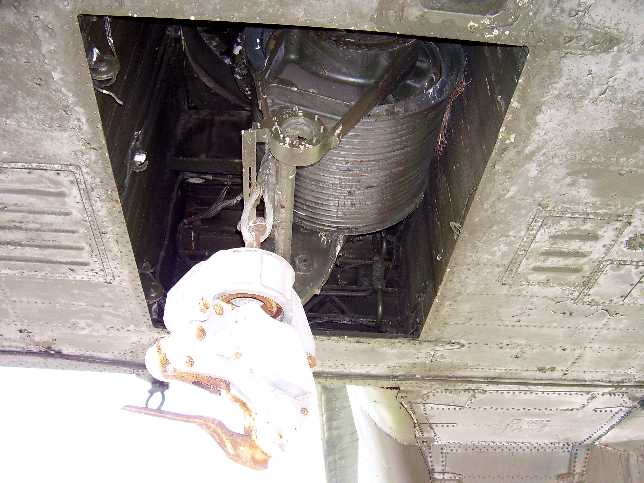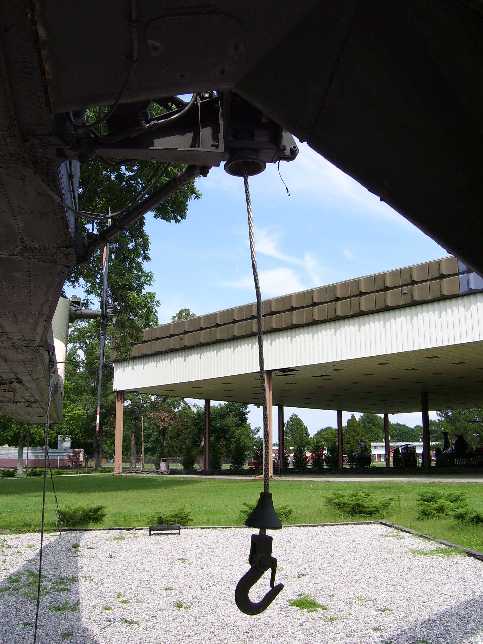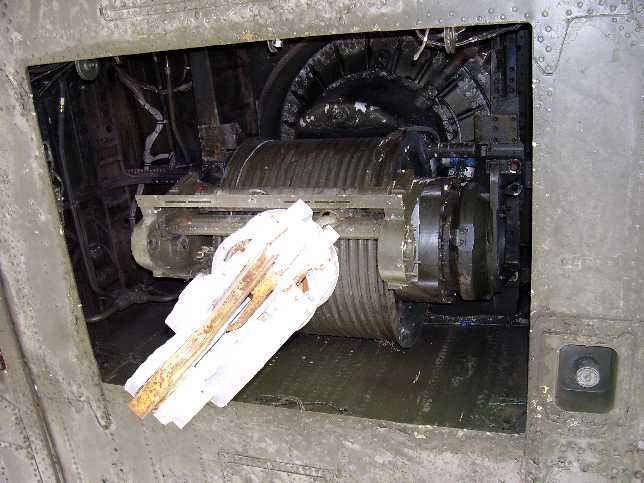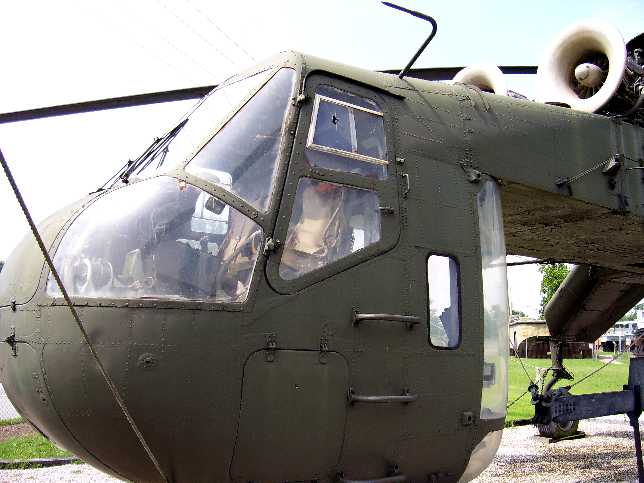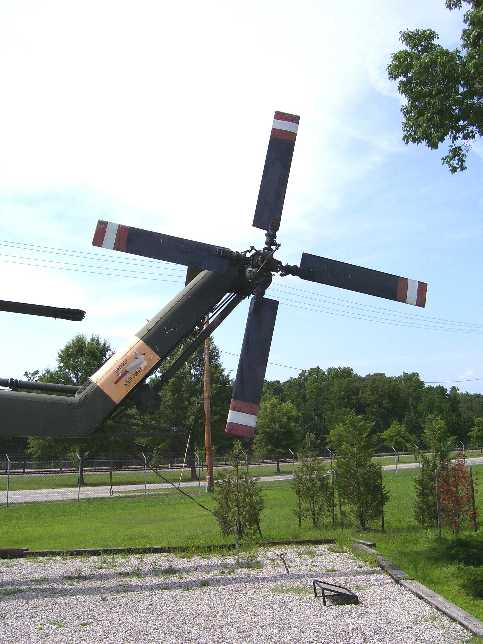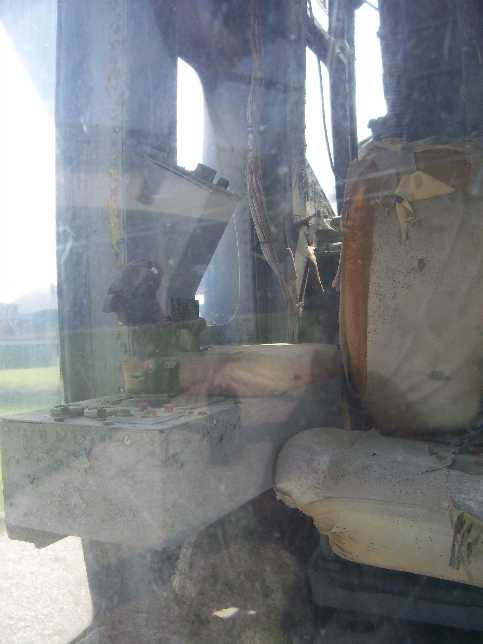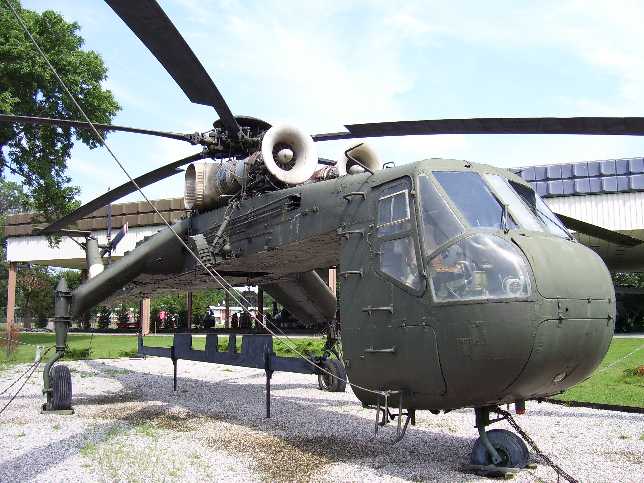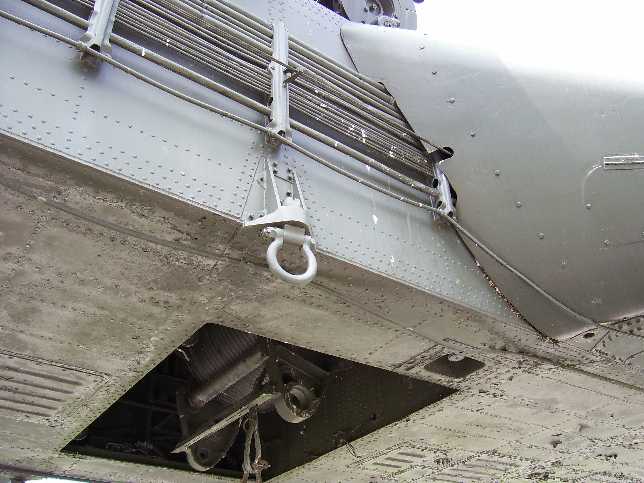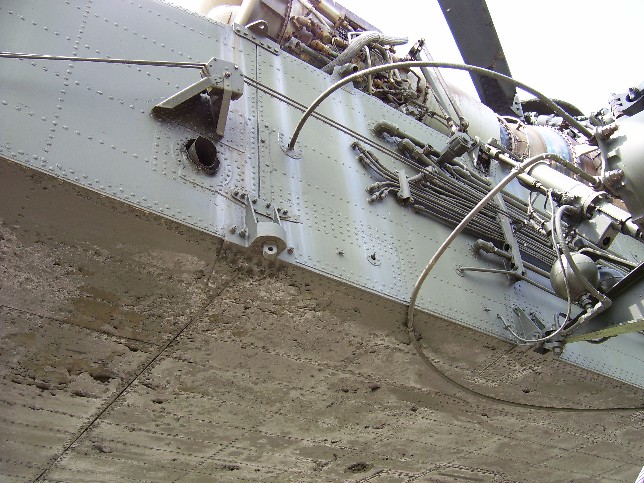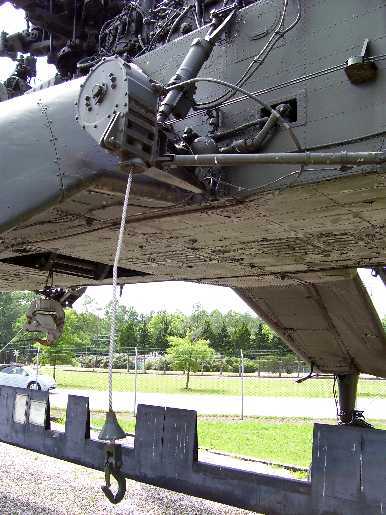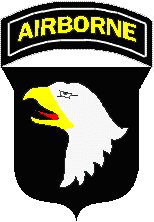 Better Air Assault Tactics
Better Air Assault Tactics
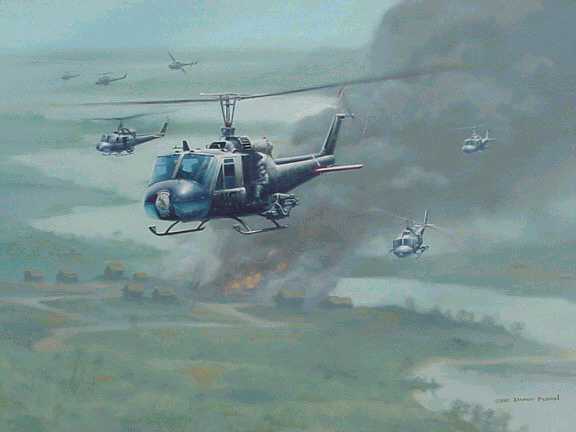
Hollywood: Apocalypse Now
 www.youtube.com/watch?v=XjYhTnh6Zaw
www.youtube.com/watch?v=XjYhTnh6Zaw
1956. Suez Canal. The first large-scale helicopter Air Assault.


Details: www.britains-smallwars.com/suez/helo.html
45 Royal Marine Commando onboard Royal Navy Ships are to fly ashore to link up with British and French Paratroops already on the ground from an earlier fixed-wing aircraft parachute assault to regain control of the vital world waterway. The French Paras jumped on the east side of the canal to take Port Fouad, and south of Port Said on the west. The 3d British Parachute Battalion jumps in to take an airstrip and marches east to take Port Said on the west side of the canal. 45 Commando is to Air Assault directly afterwards into Port Said, where a bitter city fight erupts. It was the world's first amphibious combat helicopter "Air Assault". 41, 42, Commandos came ashore by conventional landing craft backed by 6th Royal Rank Regiment Centurion heavy tanks and French AMX-13 light tanks. In a matter of hours the Suez Canal and a strip of land 25 miles south are in Anglo-French control before the cease-fire.

A few years later, farther west, in strife-torn Algeria, French 1st Regiment Estrangere' Parachutist under legendary leader Col. Michel Biegard were doing the same things using H-21 "Flying Bannana" helicopters to land troops to encircle guerrillas. The French even armed Piasecki H-21 and Sikorsky H-34 type helicopters with rockets and machine guns to sweep the landing zones for the H-21s. These battles are well described in Jean Larteguy's books, The Centurions and The Praetorians, the former made into a fine film called "Lost Command", starring Anthony Quinn and George Segal. Order the video:
Another must-see is Chandelle magazine's Robert Johnson's excellent study and beautiful artwork COIN: French Counter-Insurgency Aircraft, 1946-1965!!!
 French Paras in Algeria action pics!
French Paras in Algeria action pics!
S-58 delivering leopards to a mountain top
Troop leader jumps from a H-21, PLF!
Armed S-58: bazookas and rockets
S-58 lands to pick-up French Paratroops
1/72 scale model of an armed H-21




A decade later, the U.S. Army was flying H-21s to ferry South Vietnamese (Army Republic of VietNam or "ARVN") troops into battle against the Viet Cong (VC). NOT the USMC.
The First Military (or of any type) Helicopter: Achieved by a young Lieutenant in WW1, 1918--NOT by Sikorsky




During the war, Lieutenant Stefan von Petroczy of the Austrian Army Balloon Corps initiated a project to develop a tethered, armed aerial observation platform that could be quickly reeled in when needed far safer than large hydrogen-filled balloons. Under the technical guidance of the now legendary Theodore von Karman, with assistance from Ensign Wilhelm Zurovec, a 650kg full-size machine, referred to as the PKZ 1, was begun in Budapest in October 1917.

A 190 hp Austro-Daimler electric motor was used to drive two propellers in front of the observer and two behind. The electrical power was transmitted through a cable but still the motor weighed 195 kW. Four test flights were made in March 1918 up to a height of 6 meters, but the motor burned out, preventing further tests.
The PKZ 1 was followed by the 1400 kg PKZ 2, primarily developed by Zurovec. The triangular structure used three 100hp Gnome rotary engines powering two counter-rotating propellers. The engines were soon replaced with 120hp Le Rhone engines and flight tests resumed that May. The vehicle was flown over 30 times, eventually with a second observer, and reportedly achieved a tethered height of 50m and an endurance of 30 minutes. A crash during a military demonstration ended the project and the conclusion of the war terminated further study. The PKZ 1 and PKZ 2 demonstrated that the thrust to weight deficiency could be overcome and that useful vertical flight could be attained. Since they were tethered, however, they did not in any way attempt to address the controllability challenges.
Air Assault: the Germans were the first, then the U.S. Army--NOT marines to use helicopters in combat...

 www.youtube.com/watch?v=w0flSwzjnMA
www.youtube.com/watch?v=w0flSwzjnMA
 www.youtube.com/watch?v=ztiPjVGolXw
www.youtube.com/watch?v=ztiPjVGolXw
However, let's set the record straight--the Germans had functional helicopters when WWII began--long before the vain, boastful marines began to revise history to fit their ego and bureaucratic Iwo Jima-re-enactment racket agenda. After some interruption from allied bombing, they had a twin-rotor, Air Assault capable of delivering a squad called the FA-223.
The existing Fa-223 helicopters carried on in demonstrating the usefulness of vertical flight aircraft. Two of the Fa-223s were used in maneuvers at the mountain warfare school in the Alps near Innsbruck during September 1944. Ships V14 and V16 were utilized to supply the mountain troops. The aircraft flew 83 missions, flying on 29 of the 30 days. The one day of non-operation was due to fog so thick the pilot could not see the tips of the rotors. Seventeen landings were made on sites that were 4500 feet or more above sea level, including three on the Dresdener Hutte, at an elevation of 7600 feet.
The extensive maneuvers demonstrated the helicopter had a place in mountain warfare. The Fa-223 could lift 1100 pounds of provisions to a remote site at an elevation of 6500 feet in just seven minutes, a feat that would require twenty men, a day and half of strenuous climbing, to accomplish. in one fifteen minute round trip flight from the base at Mittenwald, a mountain howitzer and its ammunition were lifted on a cable below the helicopter, then flown to, and safely lowered to a position just below the Wornergrat peak. The gun had to be winch lowered, because there was not enough room to land.
The Fa-223 was used as a troop transport during maneuvers and carried as many as 12 troops in addition to the pilot. Four men were carried inside the cabin and eight were carried on tractor seats fastened to the outriggers.
When the mountain maneuvers ended on October 5,1944, the head of the Mountain Warfare School enthusiastically endorsed the Fa-223 and everyone expected that there would be a push for production of the Drache. Instead, on October 11th, an order was received from the Air ministry to stop all work on the Fa-223 and transfer all Focke Achgelis personnel to Messerschmitt. The Me-262 jet fighter required all the skilled labor available for production and as the Allies closed in on Germany from east and west, factories were being set up in remote areas, away from the bombing devastating German industrial plants.

In December, the Air ministry did an about face and ordered Focke Achgelis to be reestablished at Tempelhof Airport in Berlin and to begin producing the Fa-223 at a preposterous rate of 400 per month! This lunatic order was issued despite the fact that all tooling had previously been destroyed in bomb raids and there were nowhere near enough aircraft workers left to perform such a task, even if the tooling did exist, but professor Focke once again went to work setting up a helicopter factory.
Five of the seven Fa-223s built at Laupheim were still flyable and three of these were turned over to the Luftwaffe for use by its recently activated helicopter squadron Transportstaffel 40. this unit was formed in early 1945 at Muhldorf, Bavaria, and operated a mix of Focke Achgelis Fa-223s and Flettner Fl-282s. The organization under the command of Hauptmann Josef Stangl moved to Ainring near the German-Austrian border and then to Styria in Austria to preform artillery observation, liaison, and transport task in support of the hastily improvised Luftwaffe division, north Alp. Once in Austria the unit began a retreat back to Ainring in the face of the advancing U.S. 80th infantry Division. Some of its helicopters were captured along the way, others were destroyed by their crews, after forced landings. The two Fa-223s and the few Fl-282s that made it back to Ainring, were captured by the on rushing U.S. forces.
Meanwhile, the Tempelhof produced Fa-233E was delivered to the Luftwaffe and by "Order of the Fuhrer" on February 25, 1945. Ordered to fly to Danzig, it took off from Tempelhof the next morning to proceed on its mission. Due to dodging storms, Allied bombing attacks, advancing allied forces, and having to search for fuel, the helicopter's pilot did not arrive on the outskirts of Danzing until the evening of march 5th. There, because of advancing Soviet forces, it was now impossible to fly into the center of Danzing as ordered. While awaiting orders on where to proceed, the crew got word that a fighter pilot had gotten lost in a snowstorm and had made a crash landing. Lt. Gerstenhauer took off in the Fa-223 and proceeded to search the area. The helicopter crew spotted the downed Me-109 with the injured pilot still in the cockpit. They rescued him and flew him back to the base for medical attention. By this time, Danzing was falling to the Russians, and the Fa-223's crew took off to try to reach a safer haven. Fuel was still a problem and when they did find a fuel stockpile, they realized that the Allies push had captured or destroyed all the friendly airfields along their projected route. After topping the tanks off, they loaded a 55 gallon drum of gasoline and a hand pump on board, took off and overflew the Soviet forces. When they finally put down at the German base at Werder, they had flown a total of 1041 miles on this escape mission. After a rest, the ship was flown to Ainring to join Transportstaffel 40, only to be captured by American troops.
Three Fa-223s were in final assembly at Tempelhof, along with 15 partially assembled ships, when the Soviet forces captured the Berlin airport.
Post-War
The Americans turned over Fa-223E V14 to the British for evaluation. At the time of its transfer, V14 had logged 170 flying hours, more than any other helicopter in the world. On July 25, 1945, ex-Luftwaffe Lt. Gerstenhauer (officially a POW), flew V14 with Sqn. Ldr. Cable, RAF and Lt. Buvide, USNR, from Germany, to the French coast and then on to England where they landed at RAF Beaulieu. This was the first crossing of the English Channel by helicopter, but while undergoing flight evaluations in England, V14 was destroyed, due to a mechanical failure in the drive system.
The Fa-223 that had made the Danzig trip was painted with U.S. markings and was scheduled to come to the United States for flight evaluation. it is not known if it ever actually made it to America, but there were other Fa-223 survivors.
In addition to the Tempelhof assembly line, a second Fa-223 production line was being set up in occupied Czechoslovakia. After the war, two of its partially completed airframes were assembled and flown at the Avia plant.
The French government took possession of two partially completed Fa-223 airframes, several BMW Bramo 323 engines, a partial set of Fa-223 blueprints, and key Focke Achgelis personnel, including Heinrich Focke, and transported this war booty from Germany to the SNCASE aircraft plant at Argenteuil. The two Fa-223s were then made flight-worthy and flown under the French designation Se 3000.
Heinrich Focke and his engineering team also designed a small single rotor, single-seat helicopter for the French. in the early 1950s, Focke and his designers moved to Brazil where they constructed several helicopters. in 1956, Dr. Focke and most of his team returned home to Germany, to once again start up helicopter development.
YOUTUBE user Grommo who found the rare German helicopter footage, writes about the USMC Korean war non-sense:
www.youtube.com/watch?v=6SrUyNG4fYA
"Are the Korea claims taken seriously by anyone nowdays?Yes. there were even helicopter units, and two Fa223s stationed at Münster as a rescue unit but many of the helis were used individually. 5 of the earlier Fl 265s were made and operated in submarine hunting and convoy protection in the Baltic between 1939 and 1940 (before Sikorsky had even flown the Vs300). Fl 282 was in production in 1940 and used in the Aegean and Adriatic, Baltic and Mediterranean by the Kriegsmarine.
Fl282s spotted the attack of the 1st and 2nd White Russian in far Pomerania but German defenses were too weak to thwart the attack. They were used for artillery fall spotting and 3 Fl 282s stationed at Berlin- Rangsdorf did artillery spotting in defence of berlin in 1945.
The Fa223s at Münster(not Müssen) also did recovery of airframes and engines. In one case in 1944 one carried the 1.3 ton engine of a downed Fw190 32kms back to a base.
Fa 223s also did civilian rescues."
German and Japanese AutoGyros in COMBAT
Japanese Navy KA-1 Autogyros (copies of American Kellett KD-1A) operated off of the Army amphibious assault carrier Akitsu Maru in the Sea of Japan sank a U.S. submarine with depth charges during WW2.
Some German U-Boats operated a towed autogyro to act as a spotter for convoys...
The Focke Achgelis Fa-330 Bachstelze ("Wagtail") was a type of rotary kite, essentially an unpowered Autogyro. They were towed behind German U-boats during World War II to allow a lookout to see further, giving the submarines a better chance of escape in a war that was becoming increasingly dangerous to them.
Because of their low profile in the water, the submarines could not see more than a few miles over the ocean. Extremely vulnerable on the surface, the U-Boats often could not escape from destroyers because of the limited warning they had. To solve this, the German admiralty considered a number of different options, including a folding seaplane (Arado Ar-231). In the end, they chose the Fa-330, a simple, single seater Autogyro kite with a three-bladed rotor. It could be deployed to the deck of the submarine by two people and was tethered to the U-boat via a 150 metre cable. The airflow on the rotors as the boat would motor along on the surface would spin them up. The kite would then be deployed behind the U-boat with its observer/pilot aboard, raising him approximately 120 metres above the surface where he could see much further (typically 25 nautical miles (46 km), compared to 5 nautical miles (9 km) visible from the conning tower of the U-boat).
The pilot and craft were considered expendable. In the case of an aircraft attack, the U-boat captain would be forced to abandon them on the surface; the tether would be released and the Fa-330 would descend slowly to the surface.
When not in use, the Fa-330 was stowed in two watertight compartments aft of the conning tower. Recovering, dismantling and stowing the Fa-330 took approximately 20 minutes and was a difficult operation.
As Allied air-cover in other theatres of the war was considered too much of a threat, only U-boats operating in the far southern parts of the Atlantic and the Indian Ocean used the Fa-330. Despite its advantages, the use of the Fa-330 only resulted in a single sinking when U-177 used one to spot, intercept and sink the Greek steamer Eithalia Mari on 6 August 1943.
The Allies first learned of the device when U-852 was scuttled following air attacks. The remains of the U-boat, including an intact Fa-330 came ashore and were taken and inspected by British forces. After the war, the British government did successful experiments towing Fa-330s behind ships and jeeps, but the development of the helicopter quickly drew the focus of the military. U-boats that deployed Fa-330 kites included at least: U-177, U-181 and U-852
U.S. Army takes the lead....in WW2, 1944--NOT marines in 1950 Korea
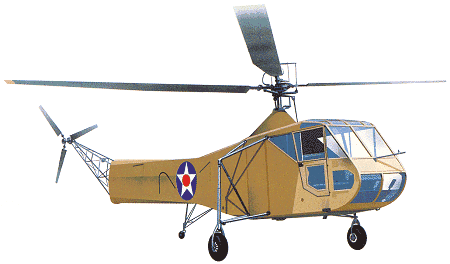
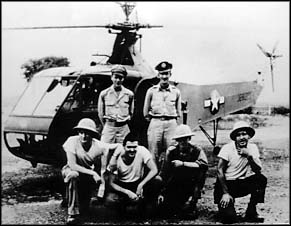
What began in WWII with Igor Sikorsky's R-4 being used by the U.S. Army to make the first combat rescue in Burma, grew to full-scale medical evacuations using Bell 47 OH-13s and some large-scale Sikorsky (S-55) UH-19 troop movements in Korea (see below). Before proceeding we need to correct some revisionist propaganda emanating from the egomaniacs at headquarters marine corps.
What the Lying, Disloyal-to-the-other-services, marines don't admit about Korean War Helicopter Use
1. U.S. Army units were doing large-scale COMBAT troop assault while they were doing just administrative moves

2. The U.S. Army was the first to move large numbers of troops (5, 000) from ships-to-shore...and didn't need any of the mythical "special training" marines say they do...no mention of this in USMC self-ego "history" books...

The U.S. Army was also the first to field turbine engined helicopters. The U.S. Army was the first Americans to ARM helicopters beginning with the OH-13. The marines wallowed around with low-power, piston-engined helicopters and refused to arm them; they even opposed the AH-1 HueyCobra being built, though they brag about it now being "their idea" now! (like the Russians claim baseball is "an old Russian game", though that too, was the creation of a U.S. Army Civil War General!). Next time, you see a marine egotist bragging ignorantly about how "their Cobras are so great" smile because if it wasn't for the U.S. Army these assholes wouldn't even have turbine helicopters, armaments and Cobra gunships. During Vietnam, marine UH-34s armed with only a door gun had to be escorted by U.S. Army Huey gunships to clear the landing zones of enemy after the marines begged the Army to bail them out. General Gavin, a former enlistedman who became an officer was not happy that we had to fight the enemy in Korea for the most part in only 2-dimensions as he faced the closed-mindedness of those who do not want to employ good leadership and share power with junior ranking Soldiers to execute 3-dimensional warfare:


---Lieutenant General James M. Gavin from his 1954 Harper's magazine article, "Cavalry and I don't mean Horses"
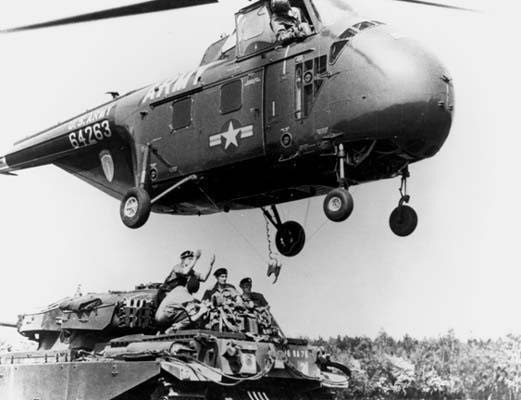
For the "official" history of Air Mobility, VIETNAM STUDIES AIRMOBILITY 1961-1971 by Lieutenant General John J. Tolson, DEPARTMENT OF THE ARMY, WASHINGTON, D. C., 1989, Library of Congress Catalog Card Number 72-600371, First Printed 1973-CMH Pub 90-4
www.army.mil/cmh/books/Vietnam/Airmobility/airmobility-fm.html
is a good starting point. However the full story must factor in the enemy's actions which in 1975 defeated our firebase & helicopter CONcept of OPerationS (CONOPS). Amidst all the reformer eagerness to Air Assault troops into battle to exploit "vertical envelopment" tactics, the enemy was not standing by, idle. Helicopters need large, open areas to land on in formations, otherwise they land in ones or twos piecemeal, a slow build up of combat power. The open LZ as a large, danger area was exploited by the VC to defeat the ARVN at the epic 1963 battle of Ap Bac despite the best efforts of Army advisor LTC John Paul Vann to have our helicopters land at least effective small arms fire range (300 meters) away from the enemy held treeline.
The recently deceased (Dec. 8, 1998, age of 89) General Hamilton Hawkins Howze, is credited with developing U.S. Army helicopter warfare tactics used in the Vietnam War and beyond since he's more kosher to the snobby establishment than the egalitarian Gavin who actually deserves most of the credit for getting Army helicopter mobility (and fixed-wing Airborne mobility with General Lee in WW2).
"The way the Army fights today" is due to Howze, said Bell Helicopter Textron spokesman Bob Leder. Howze was a vice president of the company after he retired from the Army in 1965. [EDITOR: a real prejudiced statement if there ever was one].
In 1962, Howze presided over a military panel, the Howze Board, that issued a landmark report that called for aircraft, mainly helicopter, to carry Soldiers into battle, resupply them and remove the wounded.
"The Huey (helicopter) was to our riflemen roughly what the horse was to the old cavalryman, close by and ready," Howze said. [EDITOR: dishonest statement. The helicopter IS NOT close by; the horse stayed with the trooper in battle, the helicopter flies back to its safer base]
Howze was born at West Point on Dec. 21, 1908, while his father, Maj. Gen. Robert L. Howze, was commandant of cadets. His grandfather, Brig. Gen. Hamilton S. Hawkins, participated in the charge up San Juan Hill during the Spanish-American War, and his great-grandfather, Dr. Hamilton S. Hawkins, was an Army surgeon who died in the Mexican War. Howze won a Silver Star for service in North Africa during World War II and later commanded the 82nd Airborne Division and the XVIIIth Airborne Corps. [EDITOR: being part of a family legacy, Howze was seen as an "old school" type not likely to overturn the status quo]
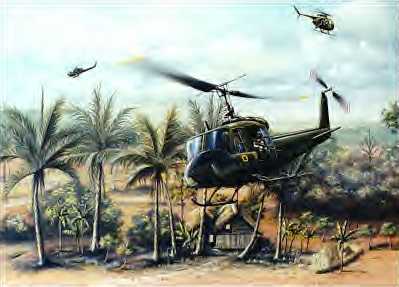
The U.S. Army response led by the Howze report was to create an "Air Cavalry"--an "Air Mobile" flying but only partial, combined-arms-team with "Aeroscouts" to recon ahead in Light Observation Helicopters or "LOACHES" (OH-13, OH-6 or OH-58s), AH-1 "Cobra" gunships with 2.75 inch Hydra 70mm rockets, machine guns, cannon to clear away the LZ for the incoming "slicks"--UH-1 "Hueys" carrying light infantrymen a squad at a time.
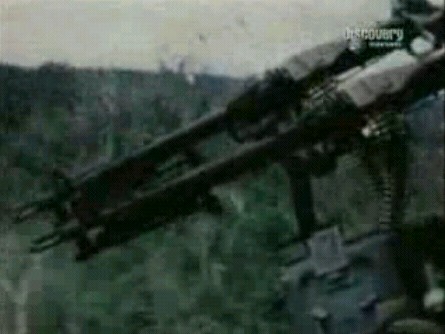
Even twin-M60 7.62mm medium machine guns were ineffective shooting through vegetation and forced the helicopter itself to close to the ground (less than 1, 000 meters) placing IT in range of all the enemy's medium caliber and larger machine guns
In practice, LIGHT ROCKETS AND MEDIUM CALIBER MACHINE GUNS would prove NOT ENOUGH to clear out enemies in closed terrain where the vegetation blocks a clear path for such light fires to reach the often dug-in enemies. Close Air Support (CAS) fighter-bombers from the USAF would have to be called in that have 20mm cannon shooting high explosive shells and drop HE bombs, but these single-seat aircraft fly too fast and can't see what they are bombing so Airborne Forward Air Controllers (AFACs) in slower observation planes effected "Stand-Off Directed Air Support" (SODAS) which continues to the present day without AFACs and only ground FACs with infamous results--we are killing more civilians and making their relatives into rebels than the enemies we originally intended to kill. Failures in Vietnam spurred us to employ slower, more agile, armored CAS aircraft like the A-1, OV-1, OV-10 and A-37s but all of these aircraft were retired as-soon-as-possible (ASAP) after the war as being bad for fast fighter-bomber pilot ego, leaving the Army with the same slow, weak firepower slow, loud conventional-type helicopters that came up short in Vietnam to try to make do (Fuck It, Drive On) today on an even more lethal, non-linear battlefield (NLB). What we need to do is Get It and Drive On (GIDO)--get faster helicopters and sturdy CAS/MAS fixed-wing observation/attack planes in direct U.S. Army service to fight efficiently on the NLB.
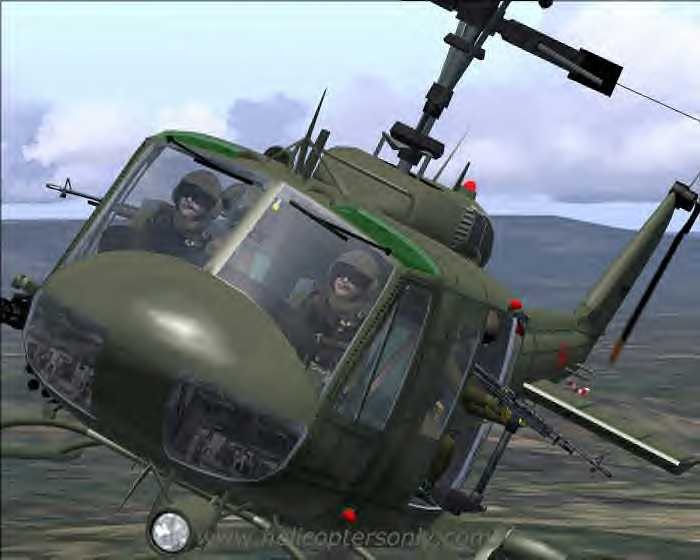
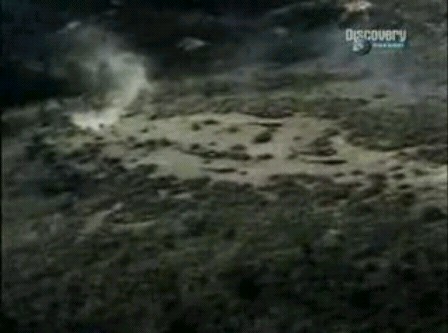
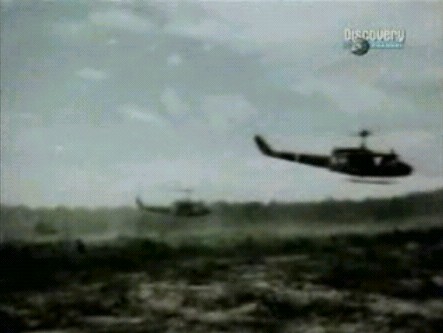
WE DID SOMETHING RIGHT: SMOKESCREENS FROM Huey HELICOPTERS, NOW WE DON'T

One thing the WW2 generation knew from their experiences with the Army Airborne in the Pacific thanks to General Kenney--was to lay SMOKESCREENS to blind the enemy's optically-aimed weapons.
Smokescreens: where are they today?
If your helicopter fire support is weak in high explosive effects, and the USAF fighter-bomber egomaniacs are flying too fast, your salvation might be the smokescreen. This is more true today than ever before with precision-guided missiles---yet TODAY'S USAF, Army and marines do not have any aircraft smokescreen capabilities!! WTFO? Look how the IDF heavy tanks were decimated in the recent invasion of South Lebanon---where were the tactical smokescreens to blind ATGM gunners?

1. Large, open danger area selected to airland vulnerable, fuel-laden helicopters packed with foot-slogger troops: NOTICE NO PATHFINDERS ON THE GROUND TO SURVEIL AND MARK THE LZ TO INSURE ITS ALL NOT A TRAP
2. Lacking firepower, a temporary fire base is established for short-range, 105mm tube artillery howitzers to offer some fire support to the weak foot sloggers
3. Manned scout helicopters look for signs of the enemy
4. Weak 105mm artillery shells pepper likely enemy ambush locations on edges of woodlines but cannot comprehensively clear and pre-detonate all possible land mines peppering the landing zone itself
5. Command & Control helicopter with the Ground force Commander on-board views the situation and adjust accordingly before committing his troops to the airlanding
6. Helicopter gunships prove some mild supporting fires to suppress any enemies that appear on the LZ

1. Here the most beneficial thing to learn is depicted: A SMOKESCREEN is layed by a Huey to mask the edge of the LZ so optically-aimed weapons like 12.7mm HMGs, AKMs, SKSes etc. are thwarted in the critical seconds so the helos can land: a technique we have failed to do ever since resulting in heavy losses on Grenada (1983), Panama (1989) and Somalia (1983). Creating an Army Aviation Branch of uber rotorhead egotists hasn't resulted in more professional competence--just more excuses and chest-beating. Maybe we should create a force of Hueys just for the purpose of laying smokescreens for our UH-60s, CH-47s that can't?
REAL LIFE PROOF:
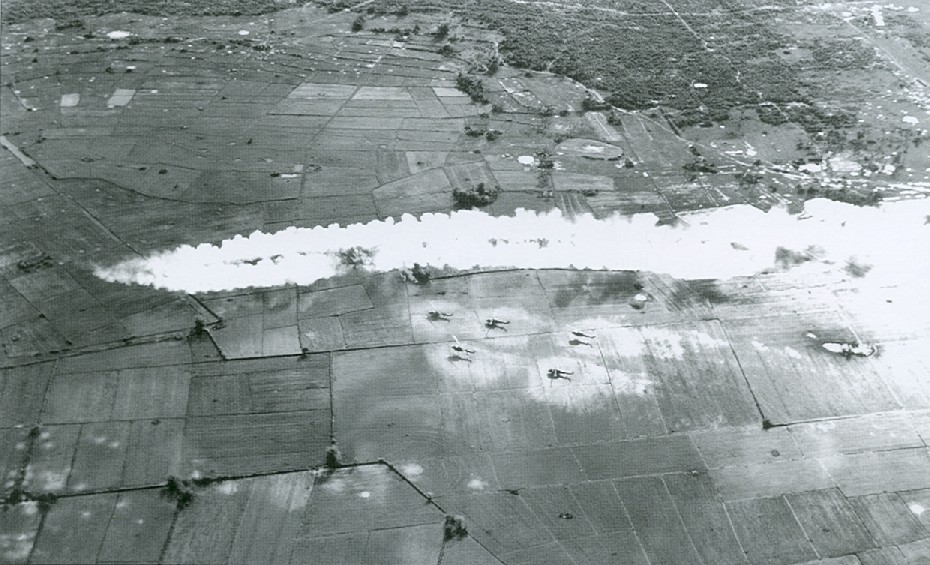
2. The fuel-packed, sardine can helos land as many at a time as possible to create masse since only a few men can be carried in each; at least the Army doesn't try to pack in a platoon like the cheapskate lazy USMC does and create bloated targets for the enemy to ignite and incinerate our Soldiers...
Bloated USMC CH-46 Burns Up Gyrenes Trapped Inside

3. Another wave of light infantry narcissist victims in bound to airland after first wave hopefully survives and gets off the exposed, open area, LZ
4. Scout/Attack helicopter teams scour the area for signs of the enemy to engage
5. USAF fighter-bombers try to engage enemies more resilient than what the light Army gunship armaments can destroy; they fly too fast and this work is better done by real CAS aircraft like the A-1 SkyRaider, A-37 Dragonfly and today's A-10 Warthogs...
6. Grasshopper STOL observation/attack aircraft like the O-1 Bird Dog control CAS aircraft; yet another right practice today's incompetents fail to do and we suffer horrendous casualties because of it
7. MEDEVAC choppers await to pull out the wounded and dead who try to fight the enemy even or at a disadvantage M16 vs. AK47 (AKM) + RPG....
Art by Adam Hook from the 2007 Osprey Elite book, Vietnam Airmobile Tactics by uber light infantry foot-slogger narcissist and false history disinformation propagandist, Gordon Rottman, we ignore his faulty text for the most part in all his books with his anti-mechanized force prejudice, whoever is supposed to do the fact-checking, isn't.
Foot-Slogging After Helicopter Insertion: Preventable Weakness
The first force of this type, the 1st BN, 7th Air Cavalry debuted in battle at LZ X-Ray in the Ia Drang valley led by then Lieutenant Colonel Hal Moore to ambush the North Vietnamese hiding in the nearby mountains. Catching the NVA by surprise, the "Sky Soldiers" stood off several counter-attacks but then the main weakness of the Vietnam Air Assault paradigm was realized. However, the force that replaced Moore's unit, moved out on foot towards new LZs, laden with heavy equipment and weapons, the force was ambushed by the NVA which on the terrain of the battlefield were MORE MOBILE. Once on foot, Air Assault infantry fights the enemy "even" or if the enemy is better at managing the Soldier's load or has vehicles, at a disadvantage.
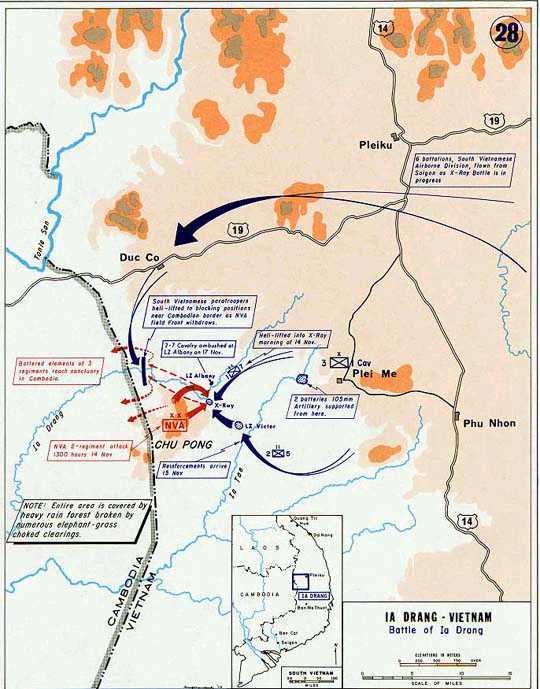
LTC Moore's After Action Review (AAR) of the Battle for LZ X-Ray (PDF file)
Reality: UH-1 Huey & the Battles for LZs X-Ray and Albany, 1965
PART 1: the first U.S. military turbine helicopter, the Bell UH-1 "Huey" is created in 1955 by the U.S. Army
www.youtube.com/watch?v=3WbRSQzU8_I
PART 2: (now Lieutenant General) Colonel Moore explains he chose LZ X-Ray to get most men in most lifts possible, short-range 105mm artillery preps the LZ, followed by ARA helo massed 2.75" rockets and 7.62mm medium machine guns
www.youtube.com/watch?v=9DSVIzxIqSU
PART 3: LZ X-Ray landing unopposed: could have flown in light armored tracks by SkyCranes, could have acted as bullet shields for exposed outnumbered 5-to-1 foot sloggers, Americans have piss-poor individual camouflage, Moore vows no replay of Custer here!, combat thrilling but getting hit is horrific, Americans surrounded, at hot LZs just throw stretchers into Huey and get the hell out, 400, 000 wounded flown out by helo MEDEVAC,
www.youtube.com/watch?v=CqGgz7Kun7Y
PART 4: 7.62mm door medium machine gunners hosing down civilians, enemies start teaching classes how to lead helicopters to score hits on them, 4, 800 helo crewmen killed, 2, 000 helos shot down, biggest armor need is being shot thru helo bottom, FIDOthink: you are a deadman going into a hot LZ, CH-54 Skycrane lifting damaged Huey back to base, LZ X-Ray sure suicide to fly back into it
www.youtube.com/watch?v=N-Ag4Nmcb80
PART 5: non-secured LZ because our foot sloggers cannot dominate enemy foot sloggers in greater quantities, if you love your comrades so much why not use those SkyCrane helos to deliver some M114 or M56 Scorpion or M113 Gavin armored tracks to secure the LZ? Moore didn't wimp out from a C&C helicopter overhead, he was on ground leading-by-example, SkyRaiders called in to save the day, armed OV-1s attacked enemies, too, twin M60 MMGs on Hueys, ground troops can't pursue enemy vulnerable on foot amidst CAS and have to pull back, more FIDOthink that friendly arty is going to kill some of our guys instead of GIDOing some light armored tracks to harden them so when close to the enemy our fire only hurts the bad guys, no such things as a dismounted infantry equivalent to tank's scratching eachother's back, trooper says SkyRaiders and ARA helos saved his life, YET WHAT DID WE RETIRE?
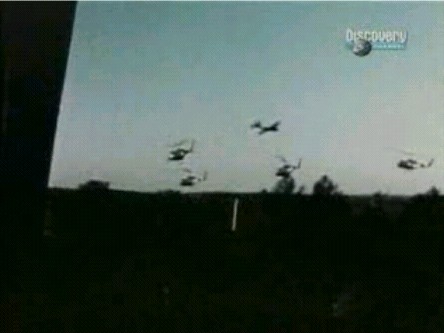
Video clip shows armed OV-1 Mohawk providing CAS to LZ X-Ray troops, TFB, Air Force!
www.youtube.com/watch?v=G--EWskeaYw
PART 6: troops pinned down, dig-in for night, tracers can give your position away at night....so....why don't you put together a "night belt" of 7.62mm without the tracers so you can fire back at night without giving your position away?, mad minute in the morning to deter infiltrators, Moore's men sweep battlefield and pick-up dead enemy weapons, Galloway sorrowful at all the American dead in ponchos, a decent human, Moore expresses survivor's guilt, caveats that air-mobility was not being used to the fullest to envelope the enemy
www.youtube.com/watch?v=avmKKThn9fg
PART 7: slow ammo crate tossing and collapsible water jug break bulk, fuel blivet refuel, B-52 strike of Vietnam war, 2/7 CAV has to walk out of LZ X-Ray to avoid B-52s, ordered to wear helmets and flak jackets, get ambushed on foot in meeting engagement, no M113 Gavin tracks to break brush or make first contact with enemy, wiped out, too intermingled with NVA to get fire support in on enemy, company commander concludes war sucks but doesn't have any sense of how WE MUST do it better
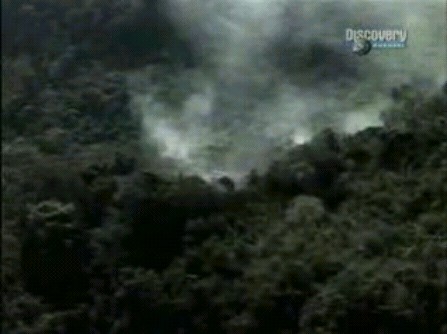
Closed terrain around LZ Albany not wise to be walking through without M113 Gavin light armored tracks breaking brush ahead and giving moving shielding in event the main body of foot sloggers gets bumped into by the enemy
www.youtube.com/watch?v=_FAkUJlsWz4
PART 8: NVA figure out belt buckle hugging tactics, direct fire is what matters in the close fight, technological bashing BS, WE DID NOT EMPLOY SUPERIOR TECHNOLOGY vis-a-vis the NVA if at close range we are fighting him EVEN M16 vs AK47, LBJ increases U.S. troops without SOLVING THE PROBLEM AND COMING UP WITH A WINNING WAR FORMULA THAT STOPS ENEMY INFILTRATION THROUGH CLOSED TERRAIN and has SUPERIORITY IN THE CLOSE FIGHT, flying around helicopter foot-sloggers non-linearly does not hold territory to stop infil from North, war of attrition follows, Air-Mobility used as a superficial panacea by politicos, prolonging the war (sound like troop surge BS in Iraq?), CMH winner Bruce Crandall rightly concludes we should have come up with a winning CONOPS if were going to lose so many men
www.youtube.com/watch?v=tyd3k2C7pTs
In fact, the need to have a large open area which to land helicopters causes the battalion to move out to nearby LZ Albany, where they are ambushed by the NVA hiding in trees. Read PFC Jack Smith's account of the battle here:
Or read the best-selling book by General Moore and Joe Galloway:
We were Soldiers once and young
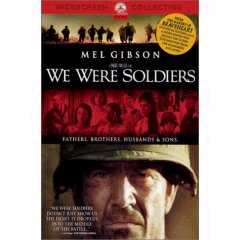
Or see acclaimed film:
WWSOAY starring Mel Gibson, Sam Elliot, Kerri Russel, Madeline Stowe
This graphic account explains why "foot-slogging" is not desirable and how we need something better than carrying an ax in your rucksack to cut down trees like PFC Jack Smith's comrades do to enable helicopters to land in dense vegetation. Its also clear why we need a gunshield that attaches to the end of Soldier weapons to deflect bullets away from their bodies so they do not become bleeding casualties. This includes the M9 Wire-Cutter Bayonet so you can fight even if you run out of ammunition. It also highlights the need for carrying enough field pressure dressings and having Combat LifeSaver trained Soldiers in each fireteam with all-purpose all-terrain carts (ATACs) to transport wounded out and ammunition in with less personnel.
Then, the next year, the marines stumbled into the NVA the same way during Operation Hastings using crowded LZs and bloated CH-46 helicopters (USMC thinks less, bigger platforms means more trigger pullers when really it results in huge targets for the enemy to kill more marines in one strike):
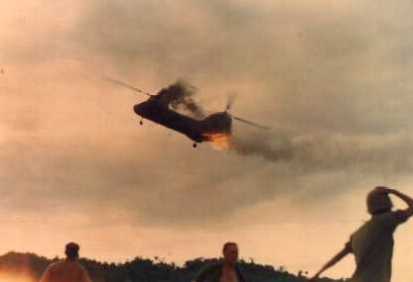
"On July 15 at first light, a squadron of CH-46 helicopters. Resembling mammoth grasshoppers, lifted off from Dong Ha with members of the 3d Battalion, 4th marines (3/4) of the 3d marine Division. Their operational zone was the Song Ngan Valley, within rifle range of the DMZ. The first wave of helicopters set down in the river valley without incident. Sniper fire ended hope for a quiet landing as the second wave swooped toward the LZ. The third wave met disaster. In the LZ, choked by jungle, two helicopters collided and crashed. A third, trying to avoid them, rammed into a tree, killing two marines and injuring seven. Snipers downed one more. Lieutenant Colonel Sumner Vale, the battalion commander, remembers the grisly sight of several panicked marines being slashed to death 'by the helicopter blades as they were getting out of the helicopter.' The Song Ngan Valley earned that day an infamous place in marine lore as 'Helicopter Valley.' It was an ominous beginning.
Then they began to foot slog........
"Vale's 3rd Battalion initiated a sweep through the valley, while the 2nd Battalion landed at the other end about three miles to the northeast. The 3rd was to serve as a blocking force on a suspected infiltration route. The 2nd commanded by Lieutenant Colonel Arnold Bench, moved southwest to take Hill 208 overlooking the 3d's position The almost impassable jungle combined with oppressive heat slowed the 2nd's progress to a crawl. By mid-afternoon it had covered barely two miles. Captain J.W. Hilgers vividly recalls the difficulty of negotiating the terrain particularly the thick vegetation: 'Though we knew our location, we could not see where we were going, trusting only to our compasses. The heat with no breeze and unlimited humidity was devastating.'
Delays erased whatever tactical surprise General English had counted on. And the marine battalions, now isolated behind NVA advance positions, were quickly thrown on the defensive. At four in the afternoon, after unsuccessfully trying to cross the Song Ngan, Vale radioed that his men were 'under heavy fire' and were in trouble." By seven-thirty the 3rd was surrounded, awaiting the inevitable NVA night attack. It did not have to wait long. Shortly after eight, an NVA company tried to overrun Company K's position, igniting a wild three-hour fire fight. "It was so dark," said Captain Robert Modrzejewski, "we couldn't see our hands in front of our faces, so we threw out trip flares and called for a flare plane overhead. We could hear and smell and occasionally see the NVA after that. When the firing stopped, we heard them dragging the bodies of their dead away, but in the morning, at the first light, we found twenty five-bodies...... On the basis of the dragging we had heard... we figured we got another thirty of them, which we listed as probably killed."
The 3rd's problems were not over. The next evening, still unable to ford the river, the marines dug in while the NVA picked up where they had left off, lobbing mortars at their perimeter. At this point the 2nd Battalion changed the direction of its advance to assist the 3rd. When it finally did reach Vale's unit, the 2nd too was pinned down by the intense mortar attacks. The marines returned fire, directing ear-shattering air and artillery strikes to within a few hundred yards of their own positions, and killed a hundred of the enemy, some at close range with pistols and even bayonets. After two more days of incessant bombardment, the 2nd and 3rd got new orders: pull out.
In the early afternoon of July 18, Vale and Bench moved their units toward the eastern end of the valley. Captain Modrzejewski's battle-weary Company K stayed behind to destroy the crippled helicopters at the LZ. Instead of pursuing the main body, the NVA massed to attack Company K. Around two-thirty, several hundred NVA infantrymen charged the LZ, blowing bugles and whistles and waving flags. Company K stubbornly held its ground. The 1st Platoon, cut off in the confusion, bore the full brunt of the assault. First Platoon Sergeant John McGinty and his rifle squads threw everything they had at the NVA force but it was not enough: "We started getting mortar fire, followed by automatic weapons fire from all sides.... [Charlie] moved in with small arms right behind the mortars.... We just couldn't kill them fast enough." So close were the NVA to overrunning the company that Modrzejewski called air strikes virtually on top of the marines' position. One marine forward air controller, less than fifty feet from the enemy, had to plunge into a nearby stream to escape being burned by a napalm strike. The shower of bombs and napalm sent the enemy scurrying for cover. In three hours of close combat, the bloodiest of the entire operation, a beleaguered Company K suffered over fifty casualties, with some marines hit in five or six places. When reinforcements from Company L arrived to cover withdrawal, Modrzejewski 'men "formed a column of walking wounded ... and then proceeded upstream, where the wounded were evacuated that night." For their actions, Modrzejewski and McGinty each received the Medal of Honor.
The 2nd and 3rd Battalions had not seen their last of Helicopter Valley. General English, after evacuating the wounded, immediately sent these battalions back to the valley from the south to join the 1st Battalion of the 1st marines commanded by Colonel Van Bell, in blocking NVA infiltration. All the battalions saw action in a deadly game of cat and mouse. A marine summed up NVA tactics: "a probe followed by an attack with mortars, automatic weapons and small arms, then disengagement's and flight." What happened on Hill 362 is a classic example.
On July 17 Lieutenant Colonel Edward Bronars's 3rd Battalion, 5th marines, began patrolling south of Helicopter Valley. A week into the patrol, Bronars ordered Captain Samuel Glaize's Company I to establish a radio relay station atop Hill 362, three miles below the DMZ. After hacking its way to the crest with two-foot-long machetes, Glaize's 2nd Platoon descended the other side of the hill to scout defenses. It had not gone far when it met a hail of mortar and machine gun fire. "They had everything zeroed in on the trail," First Sergeant Bill Chapman recalled. Other platoons rushed to aid the 2nd but were ambushed. Soon the entire company was trapped near the crest of the hill by a steady mortar barrage. "We could only dig small trenches," said Second Lieutenant Robert Williams. "We put a wounded man in with a man who could fight. Every third man was wounded, but they still tried to man the weapons.
It was a harrowing night for Company I as NVA Soldiers probed to within fifteen to twenty feet of the marines' perimeter. Corporal Mack Whieley remembered, 'The Commies were so close we could hear them breathing heavily and hear them talking.' For Private First Class Michael Bednar, it was hell. Struck by a bullet, he fell near another wounded marine just as some NVA Soldiers emerged from a clump of trees. Both marines played dead, but the NVA wanted to make sure. After the Soldiers plunged a bayonet into the marine beside Bednar and he groaned, they shot him through the head. Three times the [enemy] Soldiers jabbed Bednar with bayonets but he refused to cry out. Leaving him for dead, the Soldiers snatched Bednar's cigarettes and watch and moved on to other wounded marines. According to another wounded survivor, Corporal Raymond Powell, 'it was damn near like a massacre'.
The next day, U.S. artillery struck at NVA emplacements. Helicopters whirred in to remove the wounded, including Private Bednar, who had managed to crawl back to his lines 'with his guts hanging out.' Glaize's unit suffered a casualty rate of 45 percent-eighteen dead and sixty-five wounded. As for the force of NVA, the New York Times reported that it 'vanished into the countryside.' ...In all 126 marines were killed and 448 wounded.
The Death of Air-Mobile Cavalry by Battlefield Failures with today's narrow "Air Assault" Mentalities
Vietnam: We Were Heroes
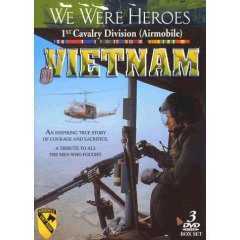
www.amazon.com/gp/product/B000066C6V/qid=1149392402/sr=11- 1/ref=sr_11_1/104-7588159-9575144?n=130
VIDEO: Meet the Air-Mobile Cavalry Division
www.combatreform.org/airmobiledivision.wmv
Studying events, the 1962 Howze Board Report and the Air Mobility propaganda videos of the time (see 3 DVD set above) its clear now what went wrong with the Air Mobility 1st Cavalry Division and how the cheap USMC imitation was even worse. First, the sheer arrogance and hubris of the Air Mobility advocates to REPLACE GROUND VEHICLES WITH HELICOPTERS is enough to make anyone puke. The eagerness of the weak military mind to want to make a "new" unit and "new" ego club based on a "new" platform and technique is unrelenting. The basic foundational Air Mobility idea that THERE IS LARGE AMOUNTS OF CLOSED VEGETATED TERRAIN ON THE EARTH THAT NO GROUND VEHICLE CAN TRAVERSE IS ABSOLUTELY FALSE. The true percentage of no-go terrain for our best light tracked vehicles would be 1% but these areas are SURROUNDED BY CLOSED TERRAIN THAT IS "GO" for light tracks meaning we need them with us at all times. Light tracked armored fighting vehicles (AFVs: AKA "tanks") like the M113 Gavin can break brush ahead and move through closed terrain which the official Air Mobile propaganda films on the DVD set above shows after bitter experiences on the ground in Vietnam compelled the Air Mobile fanatics to seek this help. From this faulty or deliberately false assumption that there's this massive amount of no-go terrain for ground vehicles on planet Earth, comes the next faulty assumption, that we can use vertical take-off and landing (VTOL) helicopters that are loud, slow, mechanically fragile and fuel hungry to REPLACE completely light tracked ground vehicles that are simple, quiet, AND CAN BE THERE 24/7/365 with the infantry...like the horse of old, but far better.
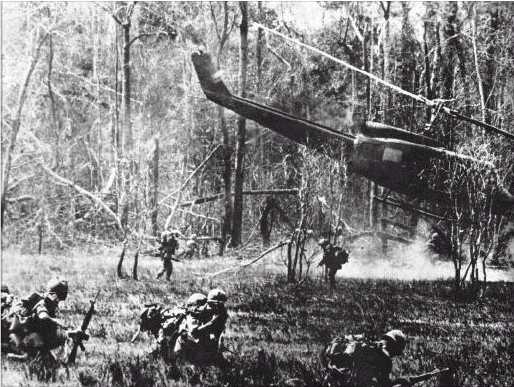
The helicopter CANNOT STAY ON THE BATTLEFIELD, its time overhead is measured in minutes, and when its gone, the infantryman is orphaned. This idea that the helicopter can shuttle supplies in and wounded men out is a dangerous handicap and absolutely fatal to depend on to the point of carrying only ammo and a couple canteens of water into battle. If the enemy shuts down the ability to airland helicopters, you are screwed as Blackhawk Down! 3 decades later shows us again, and we ignore the lesson yet again.
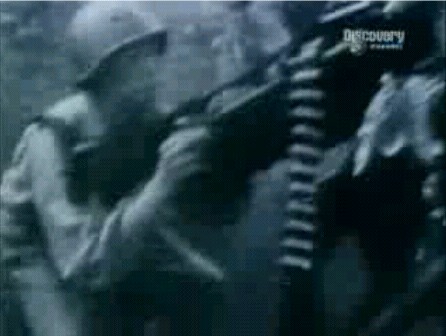
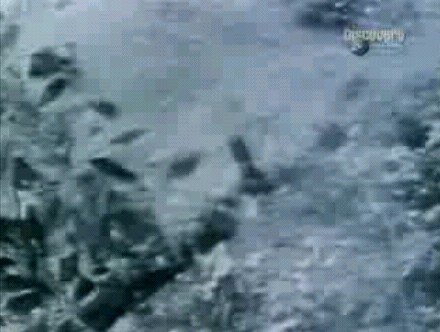
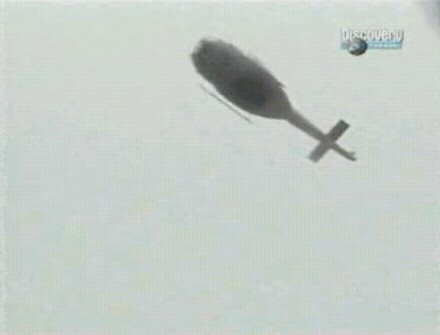
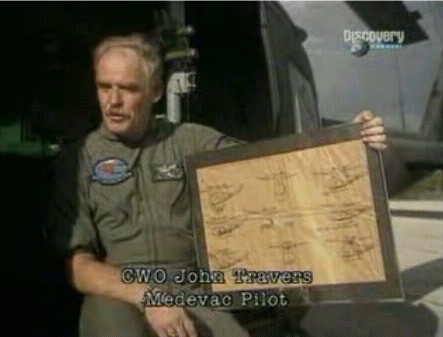
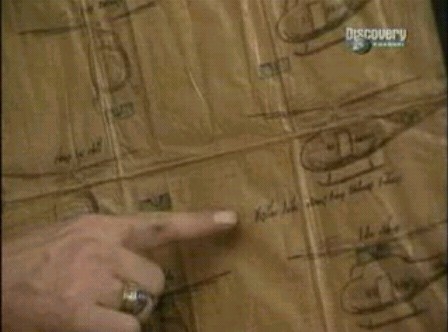
Later on in the Vietnam war, the enemy began anticipating likely open area landing zones and setting up ambushes with 12.7mm (.50 caliber) heavy machine guns and man-portable, surface-to-air-missiles (MANPADs) that by 1972's Operation Lam Son 719 in Cambodia, dozens of helicopters were knocked out of the sky in flames.
American Stinger MANPADS SAM
One theory is the Air Mobile types deliberately lied about helicopters doing everything in the Howze Board Report in 1962 to squeeze more money out of Congress through supporter, Secretary of Defense MacNamara to get more helicopters. Whatever the excuses were, they created a flawed force structure that was seriously vulnerable once the helicopters dropped them off.
Major J.W. Barton writes in: "Army Multiplier, The Birth Of Air Mobility" a 1988 CSC report:
Secretary McNamara was given his newest technological invention, the Airmobile Division. Trucks were reduced from 3452 to 1100 and helicopters were increased from 100 to 459. (15:22) Had a veto or diluting view been allowed, the Secretary might have taken notes from a Viet Cong manual captured in 1962 outlining the disadvantages of airmobile tactics:-Operations separate forces from population
-Separation from villages retains insurgency infrastructure
-Necessarily small forces lifted can be counterattacked
-Enemy strike elements are unfamiliar with terrain
-Easily surrounded and defeated
-Ambushes easily employed against landings
General Gavin had already experienced this problem with parachute inserted Airborne Paratroops in WW2 and had created the solution for ground mobility and staying power: the Airborne Armored Multi-Purpose Vehicle Family; a light tracked armored personnel carrier (APC) which became the M113 that could be parachute airdropped in to give armored mobility, plenty of supplies and superior firepower superior to the enemy.
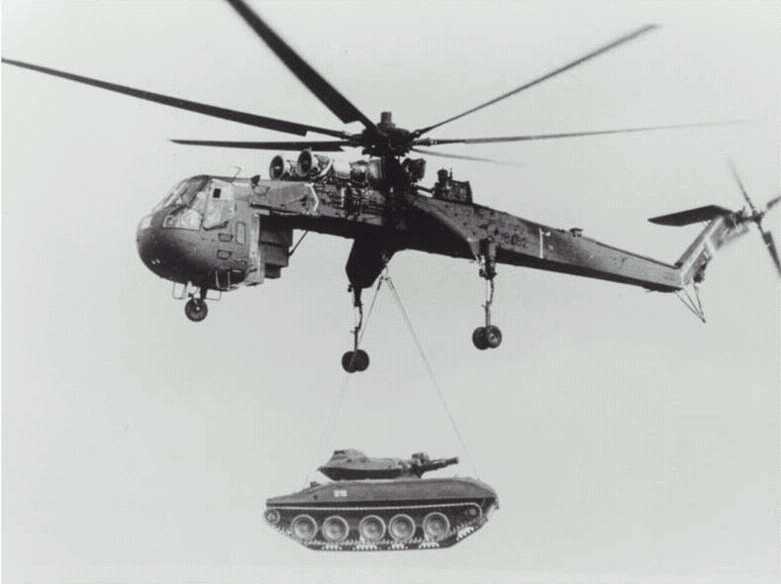
CH-54 SkyCrane lifting 17-ton M551 Sheridan tank
However, when Gavin retired in 1960, Air Mobility developments were taken over by pure light infantry egomaniacs like Kinnard who neglected to insure the CH-47 Chinook and CH-54 SkyCrane helicopters were utilized to move M113s in their Air Mobile Division because they were anti-ground vehicle in their hubris. If the as-is M113 was too heavy, Kinnard and other anti-vehiclists didn't even think of shrinking it a bit, what they wanted was the infantryman/cavalryman (remember the 1st Air Cav was just the infantrymen of the 11th Airborne Division re-named) to be the center of attention with a lot of crutches all around; tube artillery, helicopters, and supporting arms from the other services. It was a clusterfuck built around weakness. In fact, the M113 was not even supplied to Paratroopers as intended for C-130 and larger USAF aircraft delivery when the Pentomic Army reorganization was replaced with the uninspired everyone-stay-in-their-own-ego-club ROAD reorganization plan.
The sickening hubris of the Air Mobility ego clubbers can only be matched by their hypocrisy; for all their TALK about helicopters replacing ground vehicles they "hedge their bets" by still having hundreds of wheeled trucks, jeeps and M734 MULE ATVs that can do support functions in favorable terrain but pose no threat to the central egotism of the walking infantryman/cavalryman.
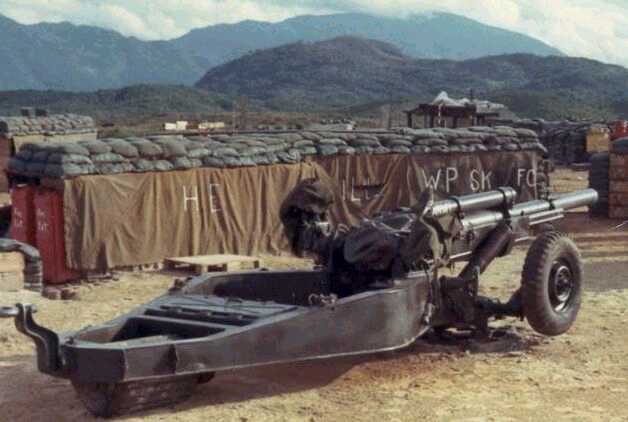
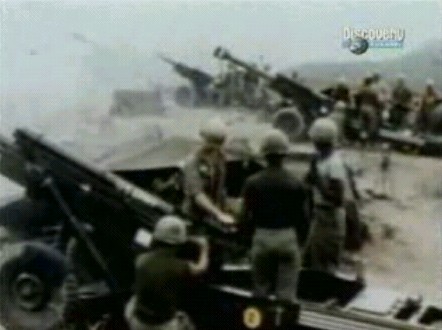
M102 short-range 105mm howitzers
In the 1950s it had become apparent that light forces with their short-range howitzers couldn't defend themselves. Notice the quote below from the official Army history and the BS requirement to do garrison "From Here to Eternity" crap.
www.army.mil/cmh-pg/books/Lineage/M-F/chapter10.htm
The "Screaming Eagles" conducted a series of individual unit evaluations rather than one divisional exercise. Lt. Gen. Thomas E Hickey, the test director, judged the new division suitable for short-duration airborne assaults, with improved prospects for survival and success during either an atomic or a conventional war. However, he noted major deficiencies in the direct support artillery-its short range and lack of lethality; in logistical resources, which were less effective than in the triangular division; and in the total strength of the division. The division was so austere that it could not undertake garrison duties and maintain combat readiness.
Maybe if we did less garrison crap and more warfighting training and THINKING we'd have had the air-transportable LONG-RANGE artillery guns to defeat the communists?
If their towed short-range 105mm artillery can't do the job they are quick to call in USAF air strikes to prop up the ego club set-up. They TALK a good game about being "self-sufficient" but are quick to whine for help when overwhelmed as typical light infantry narcissists do, just so long as the help can be quickly forgotten and the myth of their own invincibility can be returned to. However these wheeled vehicles could not be close to the infantry after helicopter delivery and help them adequately, so as the Vietnam war progressed the Armored (ground) Cavalry in M48 medium and M113 Gavin ACAV light tanks began working together after separately forming up on the ground, even though the CH-54 SkyCrane was capable of lifting the M113 and the early-model CH-47 Chinook at least for a short distance. They were in different ego clubs so the possible "Air-Mech" synergism was not used.
Air Cavalry, 1965
________________________________
Aircraft + infantry with M16s
vs. enemies with AK47s/RPGs/land mines (1965 buzzword to CYA incompetence: booby traps)
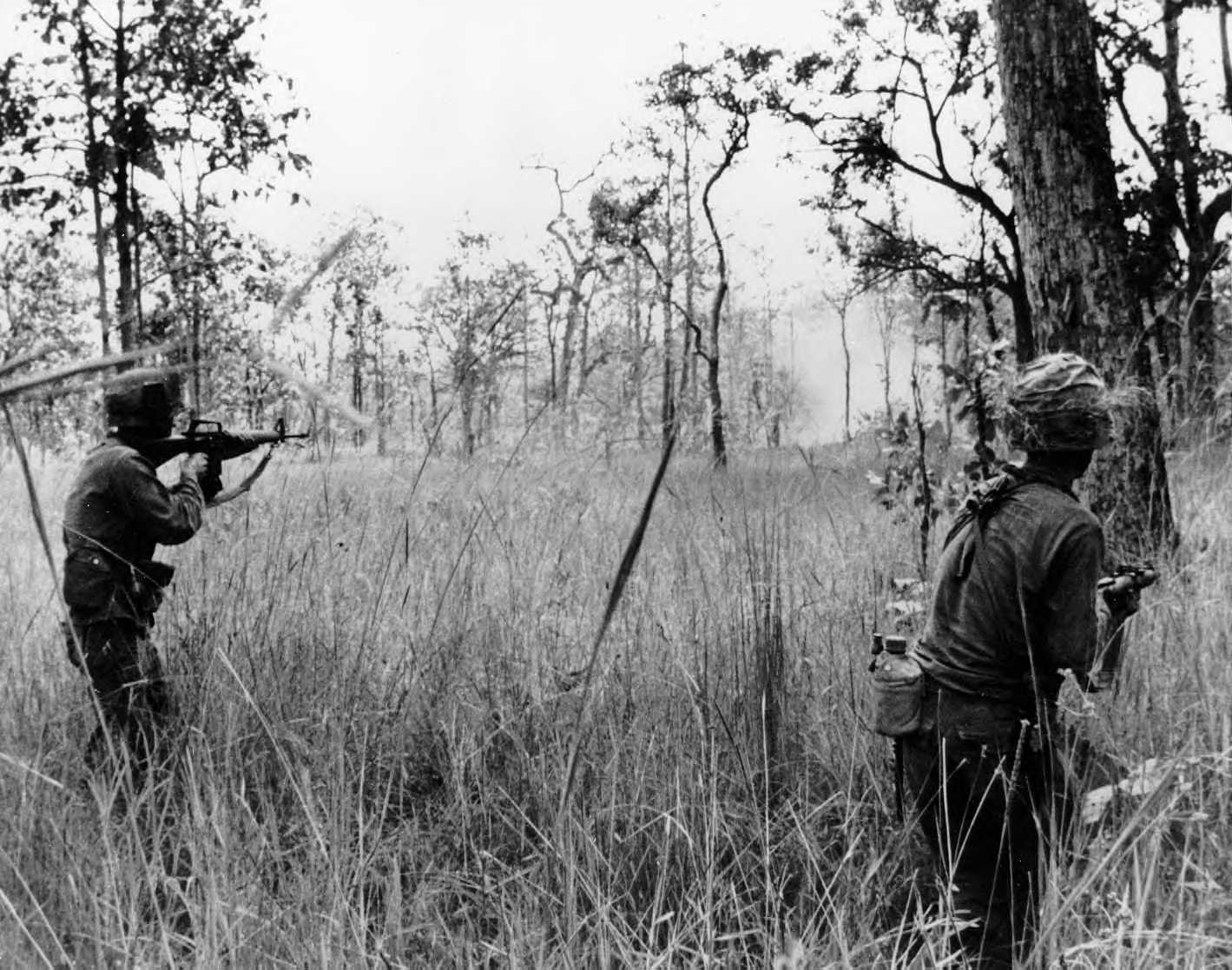
Here is one account of thousands of units that used helicopters to be "Air Mobile"---notice the fragility of their force structure covered up with large doses of ego narcissism and c'est la guerre FIDO fatalism [bold face]:
www.skysoldier.org/Hollands_Hump_Report.htm
3 September 1996
John Hollands Report
B/1/503rd INF 173rd ABN Brig (Sep)
3rd Sqd 2ndPIt 1965-66MY RECALL OF OPERATION HUMP (Hill 65) Nov 8, 1965
When we arrived on the LZ, the Hueys were unassed in the normal chaotic fashion for an area assumed to be hot or full of enemy. But in short order, the troops were formed into their respective units and vacated the landing zone for the security of the jungle. [EDITOR: what about this BS claim that units airland "intact" after helicopter delivery and are allegedly faster to assemble than after parachute delivery?]
When the companies had assembled, we began the tedious task of patrolling the dense, hot, and very humid jungle in search of Viet Cong. We patrolled for a couple of days with no enemy contact at all. At nights we'd sit into defensive perimeters with half on full alert while the other half slept. This kind of routine will quickly wear down the best of Soldiers because we stayed on edge expecting to fight the enemy instead of the difficult elements presented by this unforgiving terrain. [EDITOR: are you not supposed to be "free of the terrain" according to Air Mobility hubris thanks to the helicopter?']
Then on the morning of November the 8th, while we were patrolling our areas of operations all kinds of automatic weapons fire resounded from over the ridgeline where our sister company was operating. We began joking about Charlie Company finding a sniper in the trees and blowing the branches out from under him. Little did we know that they had stepped into an ambush and was getting their shit shot away while fighting for their lives. We were ordered to advance over the ridge and support them but as we began to move artillery started bursting in the treetops and raining frags down on us. A few of our platoon were wounded by shrapnel and couldn't be evacuated because of the denseness of the jungle. So the platoon was split leaving some of us behind to care for and defend the wounded while the rest advanced to Charlie companies support.
We set into a small clearing about twenty by thirty meters in area. It elevated to our right and was densely surrounded by foliage with a dry ravine at the bottom of the elevation. This ravine would be the assembly point of the few left living. Security was placed facing the trail we'd just come up and forward where the rest of the platoon had just gone to support Charlie Company. I was to the right of the trail we'd came up with dense undergrowth partly hiding me when I saw what looked like Americans coming up the trail. These bastards were wearing fatigues, helmets, back packs, and walked as though they were expecting friendlies in the area. I whispered to my squad leader SSgt Theodore Shamblin that it looked like friendlies were coming up on our rear. He looked through the undergrowth and also mistook them for our troops then hollered Bravo Company 2nd platoon and it was a deadly error on both our parts. While facing back down the trail that put the rise to our left and that's where the enemy immediately set up their RPD on the top of the slope with others flanking it on each side of us.
The first to die was a young kid whose name I can't recall. He was no more than a couple of meters from their machine gun when it cut him down. Even as he laid dead the sons-of-bitches continued to fire into his body literally tearing him apart. No more than two to three meters behind him were Everett Goias and I behind a small log but directly in the RPD's field of fire. I heard Goias kind of grunt as the first round hit him and as I looked over I could see smoke from a WP round coming out of his right shoulder, yet he continued to fire around the end of the log. I knew this dead tree wouldn't stand up to much more of this intense small arms fire and that we were too close for a frag-grenade when the inane thought hit me of tossing the tear gas canister I was carrying. When I threw it a small branch to our front interrupted it's flight and it burst rather close to us. No matter what anyone says concentrated tear gas will make you move regardless the event. No way could we remain there, so I started helping Goias down the hill and to our advantage the RPD stopped firing. Probably to, relocate from the irritating gas. We weren't more than a few feet from the log when an enemy grenade hit me right on the side of my helmet and with all the firing still coming in from our flanks there wasn't much I could do but turn my head and wait for it to blow but luckily it was a dud as so many of their mortars and grenades were. As we continued our slow trek down the hill another grenade hit and rolled right up to us and after an eternity of waiting it also failed to detonate.
When we reached the main group most of them were dead, while the remaining poured heavy volumes into the enemies positions. The only reason they were alive is because of the dead bodies sheltering them from the intense incoming fire. [EDITOR: gunshields, gunshields, gunshields] About the time we reached them my blood nearly turned to ice as Charlie blew that damned one note bugle and charged into the clearing camouflaged with small tree branches and screaming their fuckin' heads off. Us left living fired everything we could find to stop this mad suicidal assault and thanks to the ammo of the dead it was a temporary success. I mention the ammo of the dead being essential in surviving their fanatical charge because at that time each trooper took five hundred rounds of ammunition to the field but only seven magazines because of a supply shortage and in the heat of battle reloading is next to impossible.
After we stopped their attempt to over run us, they went back to firing from the jungle. Then heavy small arms fire started coming in from behind us on the other side of the dry ravine and it wasn't hard realizing they were Americans by the sharp crack of the M-16 rifles the automatic fire didn't last long then all firing ceased by both sides and during that lull I hollered Bravo company over here. Again it was a deadly mistake, because the patrol poured heavy automatic fire into our position. Between these volleys fired on us by one of our patrols, I told Goias he was on his way home with the million- dollar wound but he never made it. When the second burst was fired in on us I was holding this brave man's head and looking into his eyes and unlike action movies there was no cry of pain, distortion of features, or animated facial expressions instead his eyes just lost their glow of life and I knew he was dead from friendly fire. It's a shame that some died from what's referred to as friendly fire but I for one found nothing friendly about it. Yet after all these years, I feel no one person is responsible; we all tried our damned best to protect our fellow Soldiers as well as ourselves but in a situation as we had that day errors occur. It's a sad fact of war!
At one point, I thought I was the only one left alive and began slowly crawling back down toward the dry ravine when Jerry Langston came inching up from that directional was sure he'd lost his mind going back to the area that had been the main field-of-fire. But of the two of us, Jerry was the only one thinking rationally at the time and was heading for the field radio which by some miracle was still operational after so many had died while attempting to use it. He did make contact and led a patrol in by firing a .45 caliber pistol for them to guide in on. The patrol arrived in record time and checked out the jungle from where the enemy had been firing and I heard one say that dead VC were everywhere. I later thought that was a small tribute to the gallant men who gave their all in the short but very intense battle for survival.
The patrol was small and needed some for security while others handled the wounded. So the more seriously wounded were taken first such as Russo and Shamblin. I knew Russo was still alive because when the patrol arrived he was screaming "give me some water I'm dying!" The troopers who took Russo returned rather quickly so I thought the battalion perimeter couldn't be far away. I opted to put my arm around a trooper's shoulders instead of tying up two with a makeshift stretcher to get us all out of there-I had a small piece of my scalp shot away, a piece of frag was under my right shoulder blade, and my right buttocks was mostly gone from a round out of the RPD. But I hadn't lost so much blood that I couldn't move myself with some support. A very short distance from our battle site a sniper fired on us and as I was dropped to the ground I realized why they had returned so fast after taking Russo because there he lay. He died and the troops left him to return for the living but his body was later recovered with the rest. The Soldier who dropped me when the sniper fired, I never saw again but I was aided the rest of the way to the battalion perimeter by PSGT Bemowsi.
When the companies were united, it was too late in the evening for a detail to cut out MEDAVAC landing area so it meant a long night in an unsecured jungle. By then I was really keyed up and almost came unglued at every sharp noise especially recon-by-fire from inside our perimeter. When the first fight of the day came I really realized the extreme of the battle as I lay among the wounded and dead and watched the medics in their futile efforts at keeping some of the very seriously wounded alive. It was some time before a clearing could be cut to get the Hueys in but the Air Force brought in a little ugly helicopter with offset rotors that would allow it to remain stationary in flight. This little chopper also had a power wench, which they utilized to get a few of our dying paratroopers out and to emergency surgery.
Finally a clearing was cut through the very unyielding foliage and they started bringing in the single runs of Hueys to evacuate the wounded. I remember being taken off the craft but I can't remember any of the trip back to Bien Hoa so I guess the much needed sleep finally over took me. When they off loaded us at the surgical unit in Bien Hoa we received immediate life-saving surgery then we were shipped to Saigon where follow up operations and infection control were performed before most of us were sent out of country for final recuperating procedures.
As you read my description of our isolated battle your probably thinking we had a force larger than we did but in reality we had only eighteen men. Of those eighteen only five were living when the patrol arrived and of those five two died leaving only three survivors. I've thought of that fight for life many times over the years and to this day don't realize how any of us lived against such odds. They were in the wood lines while we were in the clearing, they had the high ground with a machine gun above us, they drastically out numbered us, we had no mortar or artillery support, they put a suicide charge on us in a confined area, but we did have one huge advantage over them we were American Paratroopers who wouldn't say die!
While in the Saigon hospital General Westmoreland came in to present our wounded with Purple Hearts and tell us the 1/503rd had been put in for a Presidential Unit Citation but the news and medals meant little as I learned my squad leader SSgt Shamblin had just died in surgery. As long as I live not one Paratrooper who died on that worthless hill will be forgotten. They may have died without cause but they didn't die in vain because they were part of an elite unit standing well above others; they were Sky Soldiers!
*****
LZ X-Ray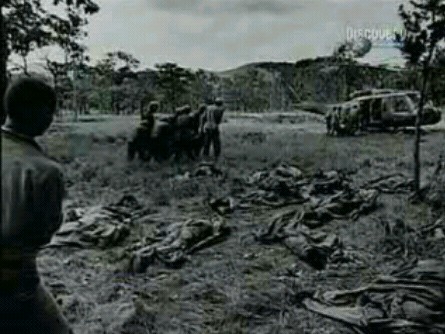
LZ Albany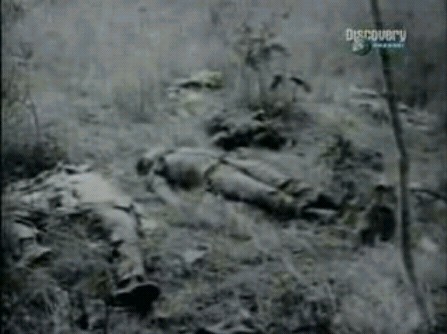
THE WOUNDED
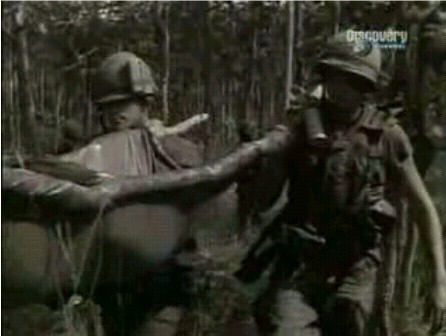
THE SCAVENGERS
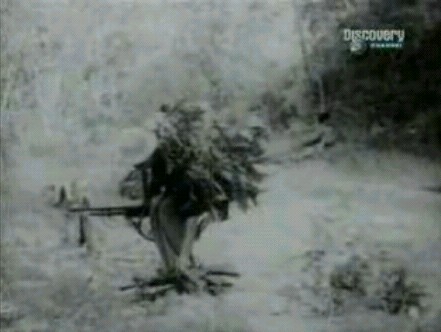
NVA Soldier picks up a M60 MMG and two M16s from the battlefield to use our own weapons against us, we would be wise to develop our own "Vulture" capability today since resupply of U.S. ammo is not guaranteed on the NLB
Yeah, right. Most of you were dead because YOU WERE NOT DOING THE BEST YOU COULD. THE TIME TO DO THE BEST YOU COULD IS BEFORE THE WAR SO YOU CAN GET THE BEST FORCE STRUCTURE POSSIBLE (GIDO). ITS ALMOST TOO LATE ONCE THE SHOOTING STARTS (FIDO). YOUR BS LIGHT NARCISSIST FORCE STRUCTURE DID NOT INCLUDE M113 GAVIN ARMORED TRACKS WHEN YOU COULD HAVE---AND YOU DIED NEEDLESSLY FIGHTING THE ENEMY M16 VERSUS AK47:
www.geocities.com/armorhistory/airassaulttanksnoexcuse.htm
www.combatreform.org/airbornetanksnoexcuse.htm
You can't do this in a Stryker truck: Air/Ground Cavalry M113 Gavins in the jungles of Vietnam
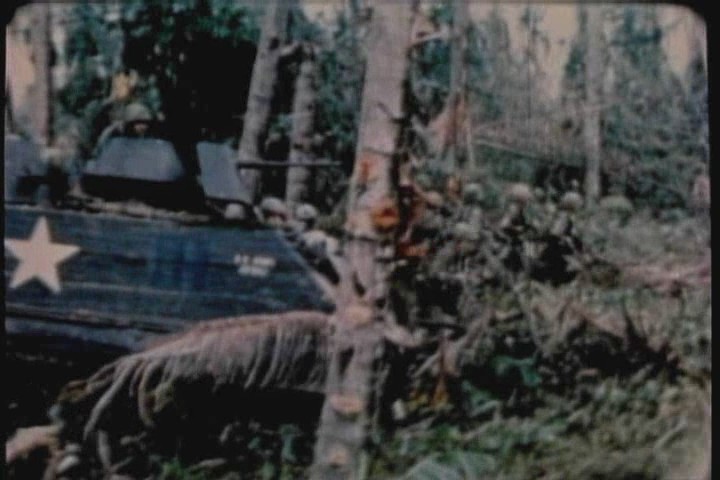
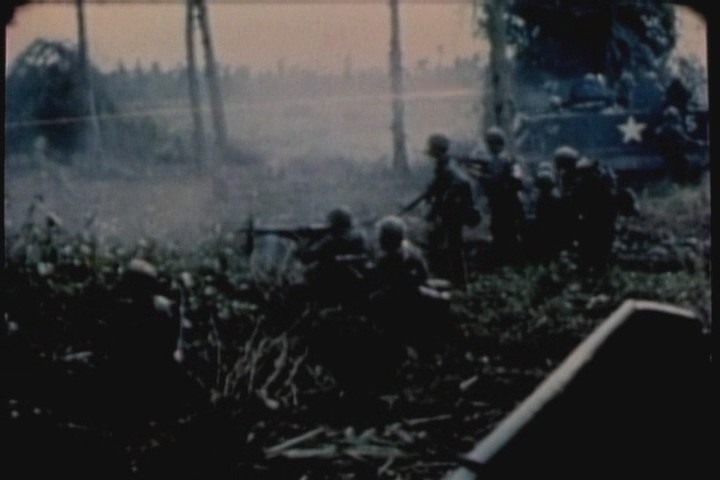
VIDEO
The light infantry combat vehicle that can go anywhere a lightfighter can walk--to include breaking brush in closed terrain after 3D aircraft insertions---is still the TRACKED M113 Gavin, the "Green Dragon" feared by the VC/NVA and enemies today that can spit out firepower in all directions behind gunshields...you can't do this in a Stryker or any other wheeled truck. Planet Earth has not changed, those with a proper understanding of war ALWAYS factor in the BATTLE AGAINST THE EARTH before considering the BATTLE AGAINST MAN. We also have the armor to go on the outside of Gavins to make them RPG and landmine resistant as well as stabilized, shoot-on-the-move autocannons to smother all enemies with explosive shell fire. Band tracks and hybrid-electric drive can make extended hull MTVL, regular size or reduced size "Mini-Gavins" that fit into CH-47 Chinook helicopters stealthy and go 60 mph on smooth terrain...
Yet 4 decades later, the same 173rd Airborne Brigade let Saddam and company slip away because AGAIN they refused to have M113 Gavin armored tracks ORGANIC to their force structure when they jumped into Northern Iraq so they also could be parachuted in to enable them to fan out rapidly to block the bad guy's escape. Instead, the Sky Soldiers did the BS "seize & hold" easy airfield seizure task while waiting for 1st Infantry Division Soldiers to airland slowly with M113 Gavins and a few Bradley/Abrams heavier tanks. The result was Saddam & subordinates got away to start a rebellion against us, so far killing 2, 500 and wounding 20, 000+ American servicemen and women. Clearly, we DID NOT learn much from Vietnam in terms of operational art, tactics and equipment.
Major J.W. Barton continues:
What was overlooked were the vulnerabilities and weaknesses inherent in the plight of LTC Moore's 1/7 Cavalry on the Ia Drang. Once dismounted from the aircraft, his forces had no mobility. American units developed the pattern of tying themselves to their landing zones. They would not leave the security of the air lifeline. The initiative belonged to the enemy. He could maneuver, fight, or withdraw as he chose. On the Ia Drang, the 1st Cav engaged an enemy unfamiliar with airmobility or the dangers of massing in the face of overwhelming American firepower. The NVA and Viet Cong forces were quick to adapt. Airmobility's utility on the battlefield was considerable as future operations would show. It provided a "Sunday Punch of unequalled flexibility and versatility." (11:156) But that "Sunday Punch" had to be set up, the location and timing carefully selected. Instead, "it came to dominate American tactical thinking and to dictate the very manner of fighting." (11:180) Where Soldiers walked, they had to stay close to planned landing zones (LZs) to insure casualty pickup and resupply. When inserted by air, troops were forced to travel light--too light to survive without an air LOC. This in turn necessitated leaving combat troops behind to guard the precious LZ after each insertion. The enemy forces seized on the American pattern and took control over the tempo of the war. As Sir Robert Thompson observed, "you were never mobile on your feet. The enemy, who was mobile on his feet, could actually decide whether he was going to have a battle with you in the first place, and he would break it off whenever he wanted to." (14:178) The enemy could then move from main force war to guerrilla war at his will. The United States continued to fight a main force war. Once substantial enemy forces were located, airmobile forces were quickly inserted into the area with outstanding results. However, once the surviving enemy broke contact, the Americans withdrew to their firebases and basecamps, and the enemy could move with impunity throughout the villages and countryside. This insistence on fighting the "American way of war" was not nearly flexible enough. As Professor Earl Ravenal noted in Lessons of Vietnam ". . . it requires the appropriate target." (14:256)In October 1967, Secretary of Defense McNamara visited Vietnam. He departed sobered and reported that the "enemy has adopted a strategy of keeping us busy and waiting us out." (6:183) The Army, with its one year tours, body count mentality, and habit of "lunging into areas of marginal political importance," was demonstrating a lack of understanding of both the "village war" and the international political struggle. (6:122) In 1968, only 80,000 of 543,000 Soldiers in Vietnam were combat troops. The rest constituted the massive logistical tail needed to conduct an airmobile war while maintaining the American way of life in Vietnam. (1:6-10) With most of these combat troops dedicated to searching out and destroying enemy main forces, the United States did not have the assets to conduct or even learn the nature of the counterinsurgency war. (6:197) General Westmoreland felt that he could endure less than the ideal force structures and conditions because he was sure victory would be ours eventually. General Westmoreland was wrong. The war was being fought for time, not space or body counts. While the United States stuck to its style of war, the enemy could control not only his own casualty rate, but that of the American forces as well. (6:122) Through the control of the casualty rate, the will of the American people could be exploited. If the press reported to the American people that the Army was winning, the NVA and Viet Cong only had to join a few battles and inflict a few casualties to turn the Antiwar heat back up in America. With no strategy to control area or be involved on a large scale with the villages, the U.S. Army missed the opportunity to see the war for what it was. An Airmobility strategy, not airmobile tactics was partially responsible for this failure. "As one airmobile commander ruefully stated after the war, 'We should have done less flittin and more sittin.'"(14:88)
********
The "official" U.S. Army Vietnam history, THE U.S. ARMY IN VIETNAM www.army.mil/cmh-pg/books/amh/AMH-28.htm Chapter 28 notes:
Yet for all the advantages that the division accrued from airmobility, its performance was not without blemish. Though the conduct of division-size airmobile operations proved tactically sound, two major engagements stemmed from the enemy's initiative in attacking vulnerable American units. On several occasions massive air and artillery support provided the margin of victory (if not survival). Above all, the division's logistical self-sufficiency fell short of expectations. It could support only one brigade in combat at a time, for prolonged and intense operations consumed more fuel and ammunition than the division's helicopters and fixed-wing Caribou aircraft could supply. Air Force tactical airlift became necessary for resupply. Moreover, in addition to combat losses and damage, the division's helicopters suffered from heavy use and from the heat, humidity, and dust of Vietnam, taxing its maintenance capacity. Human attrition was also high; hundreds of Soldiers, the equivalent of almost a battalion, fell victim to a resistant strain of malaria peculiar to Vietnam's highlands.
Free from Supplies? Or Tangled up in Supplies?
Now the REALLY bad news. We are worse off today than we were in Vietnam.
22 June 2006: U.S. troops in Afghanistan in break-bulk lightfighter clusterfuck
The picture below says it all:
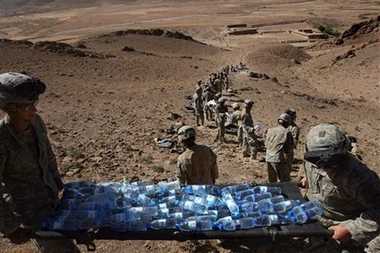
* Supplies dropped or pushed off on plywood skidboards with no forklift (MHE) slots
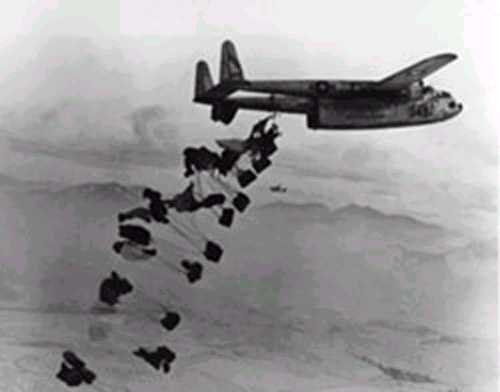
We've been dropping supplies on plywood skidboards dating back to the Korean War! Here's a C-119 dropping supply bundles that do not have forklift slots to be picked up and thus are stuck on the drop zone exposing men who have to break bulk them onto truckbeds and Soldier's backpacks possibly under enemy fire.
* No motorized MHE device (truckbed/ramp + winch, forklift, ANT trailer etc.) to pick-up supplies dropped by plane even if they HAD forklift slots
* No motorized vehicle to transport supplies; POS M-GATOR's rubber tires are constantly busting on jagged Afghan rocks
* No human-powered vehicle to move supplies by rolling conveyance (carts, bikes) Other pics show a single pack mule in use; obviously not enough to prevent the break bulk clusterfuck
www.combatreform.org/atac.htm
www.combatreform.org/atb.htm
* Even the stretchers didn't have wheels.
Roll-Ez company offered them as a clip-on attachment back in the 1980s....
* Water was obviously purified back at a FOB but placed in lots of Soldier-sized water bottles that can't fit into a 1 quart canteen cover securely (no one other than 1st TSG (A) Director Sparks thought to use bottles that are shaped like a 1 quart canteen for best interface)
www.combatreform.org/flexibleonequartcanteens.htm
www.combatreform.org/drink.htm
www.combatreform.org/waterbags.htm
All in all, a complete clusterfuck asking for the enemy to start dropping mortar shells on their fleshy, but "physically fit" narcissist bodies so they can be ripped to shreds and bleed to death for a flag-covered glorious funeral back in CONUS.
Internet sources for the pic
http://news.yahoo.com/photos/ss/events/iraq/010403armedforces/im:/060623/481/5 ba0f623579b4223974ce48e25f3331e;_ylt=Au7kQE7xzXZSDBTgCibYqsXKps8F;_ylu=X3oDMTA 3dmhrOGVvBHNlYwNzc20-
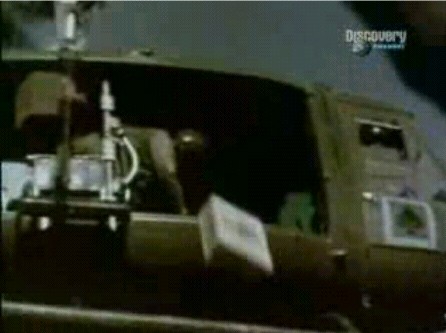

The good news is STILL that the solution is in hand. We just have to implement it. One of the few good things the Air Mobile units in Vietnam did was to use collapsible plastic gallon jugs for water resupply. We propose we relearn the technique.
VIDEO
www.combatreform.org/airmobileLOGISTICSgoodbadugly.wmv
GOOD
40" x 48" Palletizing is great if you are using small cargo aircraft like Caribous(JCA)/Chinooks, you pack your items ONCE and they stay palletized all the way to the troops. If done right, a skidboard is on the bottom and these pallets can be "kicked" out to the troops.
Two of these pallets will fit on a 88" x 108" 463L/ECDS pallet to "stuff" USAF large cargo aircraft; C-130s/C-17s. Weight penalty is 300-600 pounds per 463L/ECDS pallet.
The collapsible water jugs make a lot of sense over rigid 5 gallon water cans since when empty they can be tossed into a rucksack. I think after Vietnam, the helicopter vanished from the Army consciousness and water cans carried by ground vehicle became the normal pain-in-the-ass means to convey water to troops.
BAD
The bad news is that light infantry doesn't have vehicles that can pick up 40" x 48" pallets so they have to be broken down into truck beds and manpack loads wasting time and exposing troops to enemy fire.
Not shown in film is the fact that wood pallets can be worm infested, and catch fire too easy so they can't be shipped overseas.
UGLY
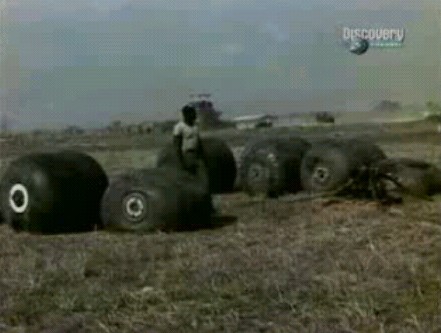
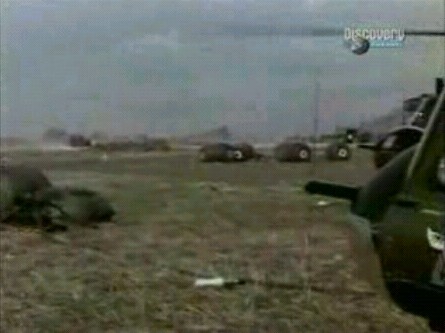
www.globalsecurity.org/military//library/policy/army/fm/1-113/CH10.HTM
The massive amounts of fuel needed to fly even small turbine-engined helicopters. The UH-1s burn over a gallon of fuel per minute or 90 gallons per hour. Thus, a 1 hour, 100 mile mission to and back requires 180 gallons, so one 500 gallon blivet can only sustain 2-3 missions. The UH-60 doesn't go much faster than a UH-1 but requires 145 gallons per hour; or 290 gallons for a 2 hour round trip mission with the same range reach. 1 blivet can only sustain 1.4 sorties. A CH-47 burns 385 gallons per hour so 770 gallons are needed to do a 2 hours mission requiring almost two fuel blivets all to itself!
The USAF saved the Army's butts during the LZ X-Ray fight because their fixed-wing C-130s carrying 10-14 fuel blivets were able to land on long runways at An Khe that they insisted on the Army making when the piston-powered Caribous couldn't carry enough fuel blivets per load to keep the fuel-hungry helicopters going. Fuel blivets lack of mobility on the ground if they don't have skids/pallets for forklifts or Walker's Amaze-N-Tow trailers to move them. Fuel blivets that can be ROLLED as their own trailers behind a powered vehicle need to be fielded not just "tested". The needs for a fossil fuel pump to get fuel into choppers.
Slopping hot food into insulated containers and flying them to the troops.
CONCLUSION: one giant mess.
Solutions:
1. Adopt the aluminum RHINO pallet as the standard, U.S. military re-usable pallet. Make ALL drop and kick pallets use the RHINO pallet as its base so there's forklift slots for MHE to pick them up without having to break bulk them. Make Walker's Amaze-N-Tow pallet-trailers organic to each infantry company. Field fuel blivets that can themselves be towed on the ground and in the water.
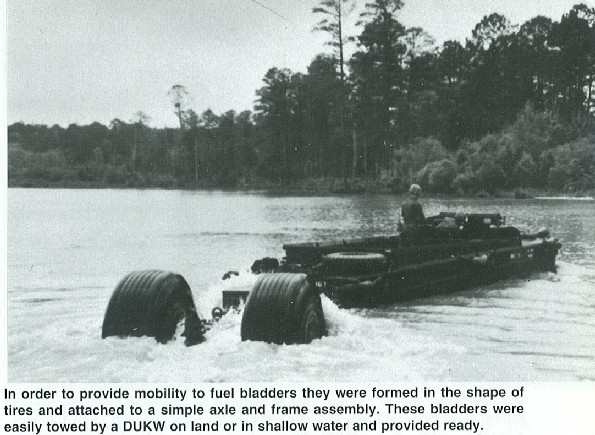
2. Don't use so many fuel hungry helicopters for 3D mobility; use fixed wings STOL and airdrop. Use helicopters for point-to-point scouting and small recon/raid force insertions.
3. Use light tracked M113 Gavin armored mobility for staying power on the ground
www.combatreform.org/fries.htm
4. Use the Gavin's tracks to squeeze fuel out of FLEX-CELLs to fuel ground and air vehicles.
Camel-Baks For Tanks (and aircraft) www.combatreform.org/heavytankshelicopters.htm
Buy some S-64 SkyCranes with CH-47F engines and have them carry bulk fuel in an ISO container/pump module; a filling station that can land with 37, 000 pounds (6, 000 gallons) of JP-8 anywhere that can avoid rebel roadside ambushes. A Gavin can take 95 gallons of fuel; add a 5 gallon emergency can, that's 100 gallons. A S-64 SkyCrane with fuel pod could refuel 60 x M113 Gavins. A Delta Weapons Company with 35 x Gavins giving A, B, C armored mobility means almost two light mech infantry BATTALIONS could be refueled by ONE S-64 SkyCrane sortie. If they are regular diesel engined; that's 300 miles of range above the 300 they started with = 600 miles to reach a Baghdad from Kuwait. If they have Hybrid-Electric Drive, that's another 600 miles on top of 600 for 1, 200 miles of range to reach more distant objectives.
5. Tow an Amaze-N-Tow trailer by M113 Gavins and have winches in back of XM1108 Gavins with cargo beds to pick-up as-is pallets after air/land/sea delivery without break-bulk. This could even be large ECDS pallets or the AIP liner on top of the 463L pallet (give 463L back to USAF).
www.combatreform.org/abnlogistics.htm
6. Have each company sized unit have a school trained chef and make them cook for themselves in the BATTLEBOXkitchen and in the field with portable stoves like French Foreign Legion and other elite units do. Abolish the DFAC in both garrison and FOB ops overseas.
www.combatreform.org/declutter.htm
7. Bring back collapsible 5 gallon water jugs
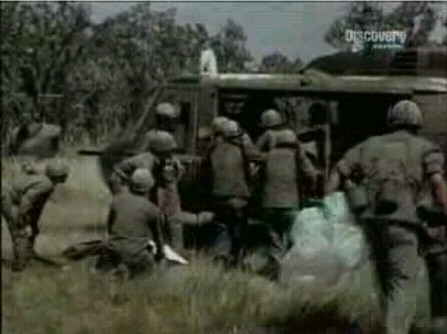
www.combatreform.org/waterbags.htm
8. Supply light infantry with their own M113 Gavins and deploy the BATTLEBOX
www.geocities.com/strategicmaneuver/battleboxes.htm
Its easy to see after the heavy casualties Air Mobile units suffered
flying thousands of helicopters in the wrong dark green color (4, 000 lost) and then fighting the enemy M16 vs. AK47s & RPGs in Vietnam that HQDA retaliated and put an end to the "Air Mobile" Cavalry ego club by transferring helicopter warfare duties to the 101st Airborne Division and narrowing the focus to a spearhead "Air Assault" role by Paratroopers and losing in the process the correct functional CAVALRY purpose, to be a mobile recon and general purpose fighting force. Again, not having a CAVARLY BRANCH rears its ugly head in the ego battles of bureaucracy. We'd forget all about the loss in Vietnam and lust to re-enact WW2 at Fulda Gap in Germany.
The tragedy is that we should have both an Air & Ground Cavalry for both nation-state wars as a mobile 3D maneuver force as well as for sub-national conflicts.
When we combined both together to overcome the silly Air Mobile we-don't-need-ground-vehicles Howze Board mentality, we were very successful. We actually could do ground MANEUVER well and not suffer heavy casualties. "Sending a bullet and not a man" was not our only option dooming us to defeat because we refuse to control ground. The Army history gives us hope, note the "Tropic Lightnings" of the 25th even though "light" infantry have used M113 Gavin light tracked armor:
However, the excellent Air & Ground Cavalry would deploy from both fixed and rotary-wing Aircraft that can insert/extract infantry that has light tracked armored fighting vehicles derived from the M113 Gavin to fit inside CH-47 Chinook helicopters that give them SUPERIORITY ON THE GROUND in what would be the now Air & Ground Cavalry.
Air & Ground Cavalry, 2007 & beyond
______________________________________
Aircraft + M113 Mini-Gavin APCs + autocannon or large cannon +
smokescreens + superior supplies + infantry with M16s
vs. enemies with AK47/RPG/land mines (latest buzzword to CYA
incompetence: IEDs)
1st Tactical Studies Group (Airborne) Director Mike Sparks writes: "When researching for our book, Air-Mech-Strike, General Moore told us that he wished he had a light tracked armored fighting vehicle during the LZ X-Ray battle to offer protection to his men and superior firepower. The AR/AAV program had went over in weight to 17 tons to later become the M551 Sheridan light tank and was no longer helicopter air assault transportable by CH-47 Chinooks. Why the Army did not shrink a M113 Gavin APC to make a 'Mini-Gavin' that would fit inside a Chinook or at least be light enough to sling-load remains a mystery, and is still urgently needed today."
How LZ X-Ray should have been fought with M113 Mini-Gavin light tracked AFVs, body armor and gunshields--Photographic & Video Re-Think
www.youtube.com/watch?v=ddnntGA8vEs
We then gave the ARVN our flawed firebase concept that was too hard
to maintain and was busted even if we ran them by long-range M46
130mm artillery. When the NVA began busting firebases, military
retreats led to general panics that even the sound ARVN units in
M113s and tanks couldn't stop.
Was there ANY Good in the Howze Board Force Structure?
Absolutely.
The things we also today have conveniently chickened out on doing. How many 300+ mph fixed-wing observation/attack planes have been shot down over Iraq since 2003 (hint: ZERO) and how many 100 mph helicopters? ( hint: A LOT)
OV-1 Mohawk STOL grasshopper observation/attack fixed-wing planes
VIDEO: OV-1 Mohawk & OH-13 observation/attack "Killer Bees"
O-1 (L-19) Bird Dog observation grasshopper STOL planes for Maneuver Air Support and Airborne Forward Air Control (AFAC)
www.youtube.com/watch?v=9ZKiuZkSHdI
STOL "Grasshopper" observation fixed-wing planes
UH-1 Aerial Rocket Artillery (ARA) helicopters with 48 x 2.75" rockets
CH-54 SkyCrane rotary-wing helicopters with cargo pods
CV-2 Caribou STOL 2, 000 foot runway cargo fixed-wing planes
Caribous enabled Army units to resupply themselves into Forward
Operating Bases (FOBs) called fire bases that could be realistically
sized to have a 2, 000 foot runway.
VIDEOS: Caribous & Airborne Operation Option
www.combatreform.org/airmobileCV2CARIBOUshorttakeoffandlanding.wmv
The lying USAF took possession of the Caribous then retired them, making the Army dependant upon 3, 000 foot runway C-130s which had to use airdrop when they couldn't land on the small fire base runways. The USAF has resisted efforts to make their C-130s land on shorter runways so they do not have to get too much into the dirt with the Army and have at times blocked Army attempts to get 2, 000 foot runway cargo planes like the C-27J/C-295 by bureaucratic back-stabbing the JCA program. The USAF brass want to operate from comfy air base-to-comfy air base and don't want anyone else getting the job done lest they be revealed for the ego empire cowards they are.
Mohawks enabled Army commanders to see the enemy with infared and radar, take photos and attack them immediately without a long drawn
out beg-the-Air-Force-to-do-its-job-cha-cha-cha. Mohawks were the ultimate "grasshoppers" able to provide Maneuver Air Support"
"White Teams" in simple OH-13 Sioux (Bell Model 47) scout
helicopters used to be co-located with every infantry battalion. Army
and Air Force O-1 Bird Dogs directed helicopter assault formations and acted as Airborne Forward Air Controllers so when the USAF did arrive to provide CAS it could be PHYSICALLY directed to land in the right places. We have no "grasshoppers" today, is it any wonder the enemy is getting away and are free to line our main supply routes with landmines?
www.geocities.com/usarmyaviationdigest/grasshoppersmustreturn.htm
SkyCranes could lift special pods set up to be Medical operating
rooms or command posts....
VIDEO: www.combatreform.org/airmobileCH54SKYCRANEpodsystem.wmv
...they could also lift oversized light tracked armored fighting vehicles like the M113 Gavin and even winch them down from a hover....we should buy some new model S-64s with new engines so we can have a light tank with large caliber gun to support M113 Mini-Gavins deployed from inside CH-47 Chinooks...and lift ISO container "BATTLEBOXes"...
www.combatreform.org/nextchinook.htm
UH-1s with lots (48) 2.75 inch rockets used to be able to saturate an
area with high explosive effects....now we have to hope mechanically
complex AH-64 Apache gunships can show up with at best 20 or so rockets and help if they are not off on their own trying to bust tanks with Hellfire ATGMs or win the war by themselves on some "deep attack" mission....
Operation Lam Son 719: the beginning of the end for Air Mobile Infantry/Artillery fire bases?
The need for Air Mobile units to have the capability to use offset LZs and AFVs couldn't be more clear than what happened during the air/ground invasion of Laos in 1971, called "Lam Son 719". It was the resultant loss of 107 helicopters and 600 damaged in the operation due to enemy anti-aircraft fires that has caused many to question the helicopter's survivability in combat. The goal was a cross-border attack to cut the Ho Chi Minh trail carrying war supplies to NVA units massing to attack South Vietnam. The 22 square mile target area as written by John Everett-Heath in Helicopters in Combat: the first fifty years pages 99-101:
"...was well-protected by nineteen anti-aircraft Battalions equipped with larger-caliber weapons than hitherto met: 23mm, 37mm and 57mm. Together with 12.7mm heavy machine guns, these weapons were deployed around potential LZs as well as to protect important storage sites, and vital ground. The defenders were further reinforced by sections of 10-12 men, armed with a couple machine guns, rocket launchers and an 82mm mortar, who changing their position daily, were able to dominate most of the LZs, pick-up points, fire bases and other ARVN positions. In addition to their air defenses, elements of five Divisions, twelve infantry Regiments, a tank Regiment with the amphibious PT-76 light tank and the T-34 Medium battle tank, and an artillery Regiment were present. Total NVA strength was estimated at 13,000 combat troops and 9,000 support troops...
Against this large conventional force, the battle effectiveness of helicopters was going to be put to a severe test..."
The Vietnam War Air Assault force structure was designed around the artillery fire base, a defended perimeter that could give indirect fire to infantry on foot delivered by helicopters and sometimes supported by tanks and M113 APCs (AKA light, troop-carrying tanks). This was the American approach to defeating the more numerous VC and NVA. For Lam Son 719, 3D South Vietnamese Air Assault troops would fly in by American-crewed helicopters ahead of the 2D ground advance going west down highway 9 and establish artillery fire bases and defended landing zones. However, we knew from LZ X-Ray onwards, that once on foot after leaving our helicopters, we were loaded down with equipment and the enemy could fight us faster on foot "belt buckle" close since his supplies were cached nearby to negate our distant supporting arms, be that from the fire bases or aircraft flying Close Air Support (CAS). With "Vietnamization", President Nixon wanted the war fought more by the South Vietnamese Army (ARVN), and they inherited the Air Assault infantry/fire base style of warfare. However by 1971, the enemy had begun to come up with ways counter this system of warfare.
Everett-Heath writes:
.."worsening weather which often precluded fixed-wing fighter support and forced the helicopters to fly along valleys when the hills on either side were wreathed in cloud. Thus, the choice of roues to the fire bases and LZs became restricted and comparatively easy for the NVA and Viet Cong to predict. ARVN fire bases were a prime target for the enemy and on 25 February one was over-run by T-34 tanks, others had to be evacuated. By the end of the month it had become clear that the main supply route into Laos could not be kept open on a secure and permanent basis while simultaneously maintaining the advance on Tchepone, one of the communications hubs of the NVA supply complex. The ARVN Commander, Lieutenant General Lam decided that he should use his aviation assets to attack Tchepone."
The ARVN troops made heliborne assaults into 3 LZs along the south side of Route 9, permitting a fire base to be set up in range of Tchepone. Cost was 12 helicopters shot down and 58 damaged. General Lam decided after the capture of Tchepone to withdraw before worsening weather hindered aviation operations.
"A concerted enemy effort was now made to hinder his withdrawal. Anti-aircraft weapons were concentrated on anticipated fly-in routes and around fire bases, and intense fire was directed at any helicopter that came within range".
OBSERVATIONS:
1. Its clear the enemy was waiting for our light infantry to be Air Assaulted into predictable open-area LZs for airlanding helicopters and we suffered enormous losses.
2. Once on the ground, surviving Air Assault infantry lacked AFVs to help hold their positions (shielded mobility, carrying large quantities of ammunition/supplies as a "mother" vehicle) from massed enemy infantry assaults in some cases supported by enemy AFVs.
3. Air Assault infantry without a companion AFV was overloaded carrying all is supplies on their backs and couldn't out-maneuver the enemy on foot. Thus, the enemy could chose when/where to fight or refuse to fight at all, electing to "hit and run" causing casualties which would erode over time American public support for the war back in CONUS.
4. Air Assault infantry on foot, unshielded by enemy fire, mines and booby-traps because they had no AFVs to ride in, ride on or walk behind, took heavy casualties that had to be helicopter evacuated to safer "rear" areas, resulting in the momentum of attacks being stopped to set up impromptu LZs for "Dust off" medevac helicopters. To carry a casualty meant at least 2 shooters had to leave the fight to shuttle him back to a casualty collection point/aid station.
5. Air Assault infantry was critically dependant upon air/ground resupply due to the low amount of ammunition, food, water they could carry into battle with them; if these LOCs couldn't stay open due to weather, enemy actions etc., the Sky Troopers had to be pulled out
6. Since the Sky Troopers didn't have AFVs to fight their way out along the 2D axis, their extraction would have to be by aircraft using the same methods that had them get ambushed on the way in; the enemy could sense this, making matters even worse.
7. Since Air Assault troops lacked heavy weapons that an on-scene helicopter-deliverable AFV could provide, artillery fire bases had to be established to enhance their firepower using distant indirect means and these had to be defended and resupplied; draining combat power and providing predictable helicopter routes which the enemy could ambush helicopters.
Its very evident that the solution to these problems is an Air-Mech Airborne/Air Assault 3D maneuver/fighting capability that by having its own aircraft deliverable AFVs can once on the ground be self-sufficient, shielded and dominant in firepower moving along the 2D axis. Such a force can airland in LZs offset from the enemy and thus be less-defended due to their ability to close on the enemy along the 2D axis.
OPERATION PLAN El Paso
"I'd like to go to Tchepone, but I haven't got the tickets."
--General William C. Westmoreland to General Creighton W. Abrams, Saigon, Vietnam, March, 1968
OPLAN El Paso was a corps-sized operation timed to seal off the Ho Chi Minh Trail at Tchepone for 18 consecutive months during a dry season preceded and followed by torrential rains that would reduce vehicular traffic to a trickle. The OPLAN El Paso concept of operation called for the ARVN airborne division to drop on Muong Phine at H-Hour on D-Day while U.S. airmobile brigades seized Tchepone, Ban Dong, and the airfield at Ban Houei Sane. U.S. tanks and infantry were to attack west from Khe Sanh simultaneously along Route 9 and link up as soon as possible. All three divisions and corps-level combat forces thereafter were to block enemy movement southward. Airfield rehabilitation and the conversion of Route 9 to a double-lane MSR were high-priority tasks for Army engineers. Restrictions consistent with the accomplishment of assigned missions were designed to keep supply tonnages down, since aerial delivery would have to suffice until those tasks were complete: few vehicles were to accompany assault echelons; rapid evacuation of personnel casualties and inoperative equipment promised to reduce requirements for medical and maintenance facilities in the TAOR; no base camps were to be built in Laos at any time. Results of their efforts follow on the web page below; along with the unhappy outcome of Operation Lam Son 719, an ill-conceived substitute.
www.ndu.edu/inss/Books/Books_1998/Military%20Geography%20March%2098/milgeoch19.html
In fact the original plan was for an U.S.-led Joint AIRBORNE parachute and M113 Gavin armored cavalry operation was considered for taking Tchepone but the Vietnamization rotorheads insisted they do the operation and then proceeded to botch it. OPEN terrain is danger areas UNSOUND FOR AIRLANDING ANY KIND OF AIRCRAFT. To take such terrain use MORE AIRBORNE AND LESS AIR ASSAULT.
Most of Vietnam is FLAT just like most of Afghanistan and Iraq--we have NO EXCUSE FOR NOT DOING MORE AIRBORNE OPERATIONS BY PARACHUTE like the Rhodesians did with their highly successful FireForces and getting far stronger AFV-equipped maneuver forces on the ground.
Everett-Heath concludes on pages 185-186:
"The Russians for example tried to solve this problem of secondary mobility by equipping some Air Assault units with the BMD tracked infantry fighting vehicle which carries both a gun and ATGMs and can accomodate a crew of 2 and 5 infantrymen....The Germans used the wheeled KRAKA and tracked Wiesel for infantry support weapons, particularly ATGMs...if vehicles and helicopters were made available for an operation they would widen the actual options and allow LZs to be chosen in safer areas clear of the objective..."
THE FALL OF SOUTH VIETNAM: AMERICAN MILITARY-INSTIGATED FAILURE, YES
Artillery and tanks win the war for the NVA, as we pass on the failed helicopter & firebase CONOPS to the ARVN
http://chss.montclair.edu/english/furr/Vietnam/brushcampcarroll.html
A marine corps veteran of the Vietnam War, Peter Brush was stationed at Camp Carroll in 1967 and 1968 and revisited the area in 1993. He writes in "Big Guns of Camp Carroll" in Vietnam magazine, Vol. 10, No. 2, August 1997, pp. 26-32:
In early 1966, the North Vietnamese Army (NVA) began massing forces in the northern provinces of South Vietnam, and the marines were ordered north to face this threat. The area in the eastern Demilitarized Zone (DMZ) had been heavily infiltrated by the enemy. The 324B NVA Division had crossed the DMZ and was quite willing to tangle with the marines. Reconnaissance patrols were unable to stay in the field for more than a few hours -- and many for only a few minutes -- before it was necessary to extract them under heavy enemy fire.
Nine artillery firebases were constructed along the DMZ, with Camp Carroll -- equipped with 16 guns -- in the center. The 80-gun artillery fan was completed with the addition of U.S. Army 175mm long-range guns. The marines could direct artillery into almost any grid coordinate from the South China Sea to Laos, as well as into North Vietnam. Airfields at Dong Ha and Khe Sanh were constructed, as well as a sizable port facility at the mouth of the Cua Viet River. Large marine forces would remain in the area for three more years.
The North Vietnamese matched the buildup of marine forces along the DMZ. In the spring of 1967, the NVA introduced rockets, mortars, and heavy artillery into the zone to support their ground actions. The most powerful enemy guns were capable of hitting targets at ranges greater than ten miles, putting most firebases, including Camp Carroll, within range. According to American intelligence reports on the enemy order of battle, the NVA had 130 artillery pieces in the area north of the Ben Hai River at the time. To counter that threat, the marines increased their own artillery deployment to 180 tubes [EDITOR: QUANTITY not QUALITY--we needed RANGE equal to or greater than the enemy's guns].
The biggest problem for the marines in the region was determining the precise location of the Communist artillery. Ground observation was limited by political and military restrictions against operations in the DMZ. Aerial observation was hindered by NVA missile and anti-aircraft fire. Since the marines were usually firing from fixed permanent positions located on prominent terrain features, the NVA had a clear choice of targets for their gun crews. The Americans repeatedly blasted suspected NVA gun positions with artillery, airstrikes, and naval gunfire, but despite those measures, the Communists were still able to inflict significant casualties.
In May, 1967, the marines became concerned with the NVA's use of the southern half of the DMZ for rocket-launching and artillery sites. Altogether 12,000 Vietnamese civilians were removed from the operational area by the South Vietnamese National Police [EDITOR: now they can become rebels and help the NVA]. After the civilians had been moved out, the entire area was considered a free-fire zone. The Americans then launched several operations in the region between the Ben Hai River and Route 9 intended to destroy all enemy units, installations, and supplies.
The Soviet tactic -- which the North Vietnamese followed -- was to position their heavy artillery pieces just beyond the range of U.S. 105mm and 155mm artillery, the most common guns in the U.S. artillery arsenal (with 10,500 and 14,800 meter ranges, respectively). The Soviet 152mm guns had a range of 14,955 meters, while the [M46] 130mm field piece could shoot 31,000 meters (about 19 miles). That meant that the NVA could fire on most American artillery bases with little threat from effective return fire.
From a tactical perspective, therefore, the U.S. Army 175mm self-propelled gun was the most important weapon at Camp Carroll. The 175mm guns put Camp Carroll on the map, particularly the tactical maps of the North Vietnamese forward observers. The most powerful American field artillery tube, the 175mm could fire a 150-pound projectile 32,690 meters and effectively return fire on any enemy gun that could hit it. These guns were mounted on a tracked chassis and powered by a turbocharged diesel engine. The top speed of this 30-ton monster was 35 mph, and it could fire at a rate of about one projectile every two minutes. The 175mm guns' 34 foot-long barrels, made at the Watervliet Arsenal in Troy, N.Y., would burn out after firing 300 rounds. Used barrels were half-buried in the mud, forming effective speed bumps to ensure that base traffic did not exceed the 5 mph speed limit at Camp Carroll.
Further west on Route 9, past Camp Carroll and the Rockpile, is Khe Sanh, which the marines were ordered to reinforce in the summer of 1967. At Khe Sanh, the NVA supply lines were short while American supply lines were long. The NVA could bombard the base with long-range artillery hidden in Laos, where U.S. forces were not allowed to strike back. The primary American supply route to Khe Sanh was a truck convoy from the marine base at Dong Ha. In August, the marines dispatched a convoy of 85 trucks with several 175mm cannons to Khe Sanh. After the NVA ambushed the convoy along Route 9, west of Camp Carroll, the marines decided to leave the 175mm guns at Camp Carroll while the convoy continued on to Khe Sanh. In early August, the convoys to Khe Sanh ended. That stretch of Route 9 was closed by the NVA and would remain closed for the next nine months. During the fighting around Khe Sanh that followed, marine artillery, including the guns at Camp Carroll, would fire more than 150,000 rounds against the North Vietnamese.
In late 1966, Secretary of Defense Robert McNamara had approved plans for the construction of an anti-infiltration barrier below the DMZ. Senior marine and Navy commanders opposed the concept, believing it would be a waste of limited resources and would result in unnecessary U.S. casualties, but General William Westmoreland, commander of U.S. forces in Vietnam, ordered the marines to implement the plan. The "McNamara Line" was to be a linear barrier 30 kilometers long, extending from the South China Sea to a point north of the Rockpile. It would consist of barbed wire, minefields, sensors, watchtowers, and a series of strongpoints. Artillery positions along Route 9 would provide fire support for the barrier. Camp Carroll was to be one of the artillery bases.
The marines were concerned that construction of the barrier would tie up all their resources and fix them in place, limiting their ability to conduct mobile operations [EDITOR: flit about with helicopters]. Construction efforts were hampered by the monsoon weather and fierce NVA resistance [EDITOR: imagine that. Maybe such a barrier would be an obstacle in the actual sense to their conquest of South Vietnam?]. The marines felt that they were unable to adequately defend themselves from enemy attacks and maintain construction schedules at the same time. They estimated that in constructing the barrier, there would be 672 Americans killed, 112 South Vietnamese killed, 3,788 Americans wounded and 642 South Vietnamese wounded. Equipment lost to enemy action during construction would total $1,622,348. [EDITOR: typical USMC disloyalty. When marines don't want to do something that will not bolster their ego they can find a million reasons not to do something requiring them to change/adapt. In Korea, while Army troops were pushing north, marines were preparing to retreat and leave their Army Soldiers in the lurch when the Red Chinese attacked. Selfish marine generals lacked the balls to confront Army generals to stop the advance northward so they decided to take care of themselves with withdrawal landing strips and poke fun at the Army later who they undermined. When the Army saved the marines trapped at Khe Sanh not a word of thanks from them.]
The marine 11th Engineer Battalion was given the job of constructing the barrier. Part of the task consisted of constructing roads to supply the artillery bases. The monsoon rains of 1967 turned the existing roads into impassable quagmires. One road construction job between Cam Lo and Con Thien required the engineers to use dump trucks to haul crushed rock from a quarry near Camp Carroll. During the entire trip -- more than 15 miles, the trucks were within the range of NVA artillery emplaced in the DMZ. Eventually the barrier project was abandoned.
After the Tet and post-Tet Offensives of 1968, the Communists re-evaluated their military position in northern I Corps. The North Vietnamese shifted their tactics away from an attempt to win an immediate victory to a policy of prolonging the conflict while reducing their own casualties. Communist strength in the area fell from 94 battalions in mid-1968 to 29 battalions by year's end. By then, artillery fire from within the DMZ onto U.S. positions had all but ceased.
Camp Carroll diminished in significance after the 1968 offensives. The 3rd marine division began adopting U.S. Army tactics, relying on highly mobile postures rather than remaining in their fixed positions as sitting targets. Marine units that had been positioned along the DMZ began receiving orders to leave the country. The withdrawals were a partial implementation of President Nixon's policy of Vietnamization -- turning the war against the Communist insurgents over to the South Vietnamese. Remaining marine units extended their lines to plug the gaps left by departing units. As the marines pulled out of the artillery bases in the western sector, the South Vietnamese rejected the offer to occupy the vacated marine bases [EDITOR: maybe the ARVN were not so incompetent, after all?].
After the 1968 TET wiped out the Viet Cong guerrillas, John Paul Vann's pacification efforts began to succeed. "The VC side of it is over," said the visiting Sir Robert Thompson. "The people have rejected the VC." Now it was going to be just plain old hard-nosed conventional warfare in a fight to the death.
So we created an Air Mobility mirror image of ourselves in the South Vietnamese Army (ARVN). Lewis Sorley in his article "Courage and Blood: South Vietnam's Repulse of the 1972 Easter Invasion" in the 1999 summer edition of U.S. Army Parameters magazine writes:
Former marine Quang x. Pham writes in the Nguoi Viet, News Analysis, Nov 16, 2005 http://news.newamericamedia.org/news/view_article.html
Corruption and inept leadership contributed to the defeat.
The South Vietnamese military hurriedly expanded its capabilities with the goal of replicating the military philosophy, tactics and structure of their great ally. Unfortunately, this meant inheriting the associated cost, complexity and continued dependence on the United States.
Peter Brush continues the story:
Attempting to duplicate the success of the 1970 invasion of Cambodia, President Nixon ordered an invasion of Laos early in 1971 to cut NVA supply lines along the Ho Chi Minh Trail. In January, the base at Khe Sanh, which had been abandoned in 1968, was reopened to provide a logistics center for the invasion. Marine helicopters were used to move supplies and artillery from Camp Carroll to Khe Sanh. By that time, the marines had received 175mm guns of their own. [EDITOR: a little late, huh?] The single marine artillery battalion in northern I Corps was the 175mm gun battery located at Camp Carroll. In March 1970, the marine unit that had been stationed at Camp Carroll left Vietnam. The marine corps was finished with Camp Carroll. Enemy activity in the region was at a standstill. The fire support bases built by the Americans were manned at minimum strength by the South Vietnamese.
On June 13, 1971, Secretary of Defense Melvin Laird announced that 90 percent of the combat responsibility for the war in Vietnam had been assumed by the ARVN armed forces. Vietnamization was proceeding on schedule. U.S. marine corps presence in I Corps had fallen from 80,000 men to 250. By the end of 1971, enemy activity along the DMZ was at its lowest level since the days of Operation Hastings in 1966. The 3rd ARVN Division, a new unit of 11,203 men, was assigned to duty along the DMZ. The troops were only marginally trained, with little experience fighting in the area. The center of ARVN defenses along the DMZ was Camp Carroll, where an infantry regiment and five artillery battalions were located, making it the largest ARVN base in I Corps.
With the fall of ARVN bases in the west, a new defensive line was established with Carroll at the forefront. Artillery attacks on Camp Carroll intensified as the NVA sought to eliminate the biggest danger to their attacking infantry. NVA artillery observers watched every helicopter attempting to resupply Camp Carroll and fired at the landing zone when the helicopters were releasing their loads. By April 2, eight ARVN firebases had fallen, and the NVA began ground attacks on Camp Carroll.
The commander of Camp Carroll was Lieutenant Colonel Pham Van Dinh, who had become a national hero for his actions during the Tet Offensive of 1968. Dinh had assisted in raising the South Vietnamese flag over the Citadel in Hue when it was retaken from the NVA. As the situation worsened near Camp Carroll, the ARVN division commander told Dinh to act "as he thought proper." At 1430 hours on April 2, 1972, Dinh communicated to the NVA via radio that Camp Carroll would surrender, and a white flag was raised over the main gate of the camp. Colonel Gerald Turley, the senior U.S. advisor to the ARVN in I Corps during the 1972 invasion, considers the surrender of Camp Carroll to have been one of the most emotional war scenes ever recorded in Vietnamese history. The American advisers were stunned by the camp's surrender, which left a catastrophic void in the shrinking ARVN defensive line. The South Vietnamese government ordered B-52 strikes against Camp Carroll in an effort to deny its use to the North Vietnamese, but before they could strike the NVA had moved out the self-propelled guns that had been positioned at the camp, which they later used against the ARVN.
Less than 24 hours after his surrender, LtCol. Dinh made a broadcast over Radio Hanoi stating that he had been well-treated by the Communists and urging all ARVN Soldiers to refuse to fight. Today, Dinh is a high-ranking official of the Communist government in Hue.
Grunt online www.gruntonline.com/US_Forces/US_ArmyInVietnam/us_army_in_vietnam15.htm notes:
After we left in 1973, the ARVN were left with helicopters they couldn't afford to gas up, were not skilled or had the parts to maintain and short range artillery no match for the 130mm long-range guns of the 150, 000 NVA troops Kissinger negotiated behind South Vietnam's back to be allowed to stay in their country. The NVA regathered men and supplies then creeped up to the U.S. inherited ARVN firebases to smash them with long-range artillery fire.
1975: South Vietnam Falls
Tran Ngoc Toan writes in "The Fate of the 18th Marine Battalion" how the NVA's 130mm guns devastated their retreat:
The situation in Hue on March 20, 1975 was shaky as local residents fled from Quang Tri behind the withdrawing Marine units down to Hue , and then flooded south from Hue toward Da Nang. The Viet Cong towed their big 130mm guns in close to Hue city, and the guns were now able to reach the Thuan An Inlet, where the Soldiers and families of the 1st Infantry Division were gathering to prepare to board Military Transportation Corps vessels to evacuate down to Da Nang. There was also a re-deployment of forces being carried out along the northern front lines, involving the 147th Marine Brigade, the 15th Ranger Group, three RF Groups, and the 1st Cavalry Brigade.
In the early morning hours of March 20th, the Military Transportation Corps vessel cast off from the dock as the sound of exploding 130mm shells echoed down from areas west and north of Hue city. The vessel sailed straight south to Da Nang. In Da Nang, refugees from the Quang Nam and Quang Tri areas jammed the entire city, causing the city to collapse into riot and disorder. The 18th Marine Battalion was ordered to protect the Non Nuoc Base, and deployed its forces from the other side of the Trinh Minh The Bridge through Ngu Hanh Son to Tien Sa. The Non Nuoc Airfield could handle the C-130 aircraft and U.S. "personnel" fleeing from the city waiting for the order to evacuate.
Although the Headquarters of the 18th Marine Battalion had arrived in Da Nang, it had not yet established communication links with the Headquarters of the 468th Marine Brigade, defending the Hai Van Pass, because it was waiting for the arrival of its other two companies, which were to be transferred to the battalion from the 2nd and 6th Marine Battalions. Unfortunately, the 2nd and 6th Marine Battalions were then completely tied down defending the Quang Nam province and the southern approaches to Da Nang. The 18th Battalion's Operations Officer, Captain Duong Cong Pho, formerly the commander of 1st Company/4th Marine Battalion, had just graduated the Advanced Army Course (Bo Binh Cao Cap) at Thu Duc. The Battalion Executive Officer, Captain Le Quy Binh, formerly of the 3rd Marine Battalion, had also arrived at the headquarters.
On March 23, 1975, Hue city was abandoned, following the evacuation of Quang Tri. Only a little more than one hundred officers and men of the 147th Marine Brigade, including Colonel Nguyen The Luong and Lieutenant Colonel Nguyen Dang Tong, managed to escape back to the Tien Sa dock aboard a Navy LCU. The rapidly changing situation trapped the individual Marine battalions where they were, thereby preventing the full formation of 18th Battalion, which still had only its two companies from Quang Tri defending the outer perimeter of the Non Nuoc Military Base.
Finally, in the early morning hours of March 29, 1975, all Marine Corps units received orders to abandon their defensive positions, pull back to the Non Nuoc Base to board transport vessels of the South Vietnamese Navy, and make a "tactical withdrawal," abandoning Da Nang city to the communists. The Viet Cong had moved 130mm guns up to the top of the Hai Van Pass, and these guns were able to fire directly down into the harbor, so the Navy's ships hastily sailed away from the beaches. ARVN infantry and armored units that had learned that the Marines were evacuating, sped down to the beach, therefore creating panic, confusion, and disorder along the Non Nuoc beaches.
The 18th Marine Battalion (minus) shared the fate of the rest of ARVN's general strategic reserve forces at Da Nang. The battalion received only orders to evacuate, and never received a single order to "attack" or to "defend" the city. In the end, the Marine Division, which had an original strength of more than 16,000 personnel, had only about 4,000 disorganized marines left when it arrived at Cam Ranh Bay on April 1, 1975. The 18th Marine Battalion, still in the womb and not yet fully born, died on March 29, 1975 in Da Nang.
Central Highlands Fall: Splitting South Vietnam in Two
Artillery won the first Indo-China war for the Viet Minh/North Vietnamese against one firebase (Dien Bien Phu) and it won the second war against multiple "Dien Bien Phus". All the millions of dollars America spent building static flimsy bases fell into enemy hands. We in the West, had only ONE STYLE OF WARFARE THAT CONSISTANTLY KICKED THE VC/NVA's ASS, AND THAT WAS THE ARMORED GROUND CAVALRY backed by some Air Cavalry or Paratroopers. The NVA wrote the following about the ARVN stopping them with this type force (only 19 battalions total in their Army) and massive U.S. air strikes 3 years before in 1972:
...the enemy organized a defensive system consisting of three centers--Dong Ha, Ai Tu, and La Vang-Quang Tri. Hundreds of tanks and armored personnel carriers formed a barrier of steel surrounding these bases. Artillery fire bases and tank guns fired scores of thousands of rounds into our positions. All types of tactical aircraft and B-52 strategic bombers dropped hundreds of tons of bombs. Because the enemy had increased his troop strength and his fire support, and because he had changed his defensive plan, the wave of assaults made by our troops on 9 April was not successful.
Saigon Falls: ARVN armor last units to stand & fight
We should have created a style of warfare based around M113 Gavins and some affordable paratroopers in fixed-wing aircraft and physical barriers for the ARVN to execute not the hand-me-down firebase + helicopter/foot infantry disaster. More light tracked armored Infantry and frankly almost zero helicopter foot infantry. Then when Kissinger & Co cut funding, the ARVN at least had a chance of standing up on their own.
In the aftermath of Vietnam, the light narcissists realized their entire "Air-Mobile" concept was unworkable if they don't get long-range artillery like 175mm SPHs to their firebases. A requirement was drawn up for a Heavy Lift Helicopter (HLH) capable of flying a 175mm SPH to a FOB so if the enemy holds the roads it can still get to where its needed. Of course, what do you think happened to the HLH?
The egomaniac marines didn't want it because it was too big to fit into their amphibious ships--a racket that itself needs to be stopped. Then Congress with a "no more Vietnams" mentality cancelled the HLH.
The only prototype languished at the Fort Rucker museum until a politically correct museum curator (aka asshole) demolished it to cover up incompetent Army asses that should be already air-meching not just SPHs but M113 Gavin APCs/light tanks. God warns us to "remove not the ancient landmark" which advice we ignore then wonder why we are lost and without direction in places like Iraq/Afghanistan?
So after Vietnam, what do we, the U.S. Army and marines do with the 175mm SPH, the only artillery able to match the Russian M46 130mm gun?
We retire it!
Don't bring up mistakes so we don't have to get off our asses and correct them, maybe the next war will be against easy enemies and we can get by with what lazy stupid crap we are willing to do that feeds our greed and egos.
What are we doing today? Why we are continuing to buy MORE SHORT-RANGE ARTILLERY out-gunned by the rest of the world's artillery which can shoot 40+ kms, ours can only shoot 30 kms! Clearly we have NOT learned and improved from the Vietnam war experience...as we are likely not to from Iraq.
10 years after Ia Drang...and a few short years after the fall of Camp Carroll...
Detailed Report on the SS Mayaguez USMC Debacle:
10 marines left Behind on Koh Tang Island
American civilians from the containership, SS Mayaguez are captured by armed Cambodians in fishing boats.
The U.S. has just evacuated from Saigon as the NVA in the "final offensive" captured the South. It was thought they were taken to Koh Tang island, so Air Force SpecOps and CSAR CH- and HH-53D "Jolly Green Giants" loaded with marine infantry are flown by direction of marine corps planners into two beaches in broad daylight on the west and eastern end of the island without preparatory reconnaissance (PATHFINDING) or fires.
Upon landing several helicopters are shot out of the sky and crash in flames at the water's edge. The enemy was camouflaged, dug-in and waiting. The mc Air Assault force, split into two pieces are surrounded and pinned down by enemy fire with casualties mounting. Unable to reinforce except piecemeal one helicopter-at-a time, the marines will be over-run if not pulled out immediately by the remaining USAF helicopters that can fly. A C-130 from Okinawa drops a 15,000 pound BLU-82 bomb which explodes a huge hole in the jungle which the helicopters could use to land. As darkness falls, the last helicopters take off, but 10 marines are left behind. 2 manning a M60 Medium Machine Gun to keep the Cambodians away. After all the years of helicopter Air Assaults, we apparently hadn't learned a thing.
Iran: Yet another USMC helicopter disaster: unqualified marine pilots banned from trying to do special operations flying
Detailed Report: Desert One: Time for ESTOL C-130s
SOME SUCCESSFUL, MOSTLY FAILED DISMOUNTED AIR ASSAULT OFFENSIVE OPERATIONS: Grenada, Panama, Saudi Arabia, Iraq ("Operation Desert Storm") and "Blackhawk Down!" in Somalia
1983, Grenada
1989, Panama
1991, Iraq
Operation DESERT STORM: the "Official" Version of Events
LOGISTICAL SUCCESS: Fascinating display at the U.S. Army Transportation Museum @ Fort Eustis, Virginia
Date: January 1991
USAF moved 80% of 3/73rd Armor Bn (M551 Sheridans) by C-130E/H 700 miles west from the King Faud International Airport to a small landing strip outside of Rafha SA near the SA Iraq border. They moved all of the tracked vehicles in the Bn - the C2 M577 (flatbedded) to that location. Some wheeled stock moved by
air but the majority moved over the road to get into assault position for the "Hail Mary" left hook into Iraq. This included their scout platoon who was test evaluating LAV-25s (LAV-1s) because the LAV-25 did not fit into the C-130 and could not fly. This was meant to be a somewhat stealth operation.
XVIII Airborne Corps had the guts or the feeling it "was worthy" to use air resupply so it had expertise and contacts within the USAF to seize a section of paved highway and get them to airland supplies and troops. USAF CCT traffic controllers would be necessary to guide in landings, mark the runway etc. since Army Pathfinders are not "worthy" and trained to do this job.
Notice a specialized Army unit was there to fiddle around with fragile 463L pallets as C-130s spent 12 minutes on the ground; me thinks SeaBox's ECDS pallets with forklift slots would have been faster by dropping them off then taxiing to take-off position. However let me guess. Due to "cutbacks" Army no longer has units to transfer cargo from aircraft yadda yadda yadda fuking BS. All the more reason to go with ECDS pallets and AIP pallets that anyone with a forklift can pick up and move--even a bulldozer with Butch Walker's "Bucket Lift" attachment or his Amaze-N-Tow forklift trailer.
www.geocities.com/amazentowmilitary
Notice the bypass around the commandeered road-turned-into-airfield so ground vehicles could get back onto the road; wheeled vehicles can't just go anywhere in the desert lest they get stuck. General Gavin would be pleased since he wrote about such bypasses in his book, "Airborne Warfare" in 1947. Again,
more reason to go with an all-tracked Army.
4. In 1, 000 flights, 9, 000 tons of supplies, 250, 000 gallons of fuel and
900 Soldiers were delivered. Let's break this down:
A C-130 can carry 40, 000 lbs or 20 tons of supplies. 450 flights moved the
9, 000 tons of supplies.
A C-130 can carry 6 x 500 gallon bladders of fuel so 3, 000 gallons per
sortie means 100 flights
A C-130 can airland 92 troops so that's just 10 flights
This all comes to less than 500 flights, so what was carried in on the other
500 flights?
Probably lots of BS Humvee trucks; possibly 1, 000 Humvee trucks...
If we had tow kits they could even TOW the fuel bladders with them acting as
their own wheels...if towed by wheeled trucks they might get stuck....but if
they were towed by TRACKED XM1108 Gavins its not likely...
STRATEGIC, OPERATIONAL AND TACTICAL FAILURE: WHY DID THE 101st Air Assault Division allow the IRAQI REPUBLICAN GUARD ESCAPE?
Operation DESERT STORM: What REALLY happened
Yes, some of the 3/73rd Armor's M551 Sheridan light tanks were flown in by C-130. We know 3/73rd Armor was there as part of the armored stampede into Iraq for Desert Storm...So why didn't we parachute in an 82nd Airborne BLOCKING FORCE which had 56 x M551 Sheridan light tanks and a M577 Gavin C2 APC and could have had a M113 Gavin supplied to each infantry rifle squad and have it seize a stretch of paved road for airland resupply to more aggressively stop the Iraqi Republican Guard (RG) from escaping? The 82nd could have even jumped into FOB Cobra to secure it for the 101st's helicopters to airland--or vice-a-versa. The 101st could also have helped the 82nd get to the ground by airlanding with C-130 fixed-wing aircraft with their more powerful light tracked AFV force by securing a stretch of road. Clearly, this kind of Airborne/Air Assault teamwork was absent.
1st TSG (A) Director, Mike Sparks asked 82nd Airborne Division Commander General Johnson about this at an "All
American Week" in 1992 or '93 (which had a WW1 82nd DIVISION vet lead a
parade!) and he said General Schwartzkopf WOULDN'T LET THEM JUMP. Too risk averse or as we surmise CENTCOM populated by heavy tanker "mech pussies" (there is some validity to this insult) who were ANTI-AIRBORNE in their mentality of doing just 2D overland stampedes that folks easily escape from...sort of like what Saddam & Company did 12 years later...we also think a lot of people are envious of the Airborne jumping because it is fuking cool to jump out of airplane and all the ego trappings of getting a jump star on your jump wings etc. We also think the Airborne going around calling people "legs" is disgusting and makes people hate us when we need their co-operation in combined 2D/3D maneuver warfighting...
Snobs could state to the non-Airborne folks:
"Then go to jump school and get with the program!"
Not so easy. The Army doesn't let anyone go to jump school lest everyone have
esperit de corps. We can't have that and still have a zero-sum game "pyramid of ego".
Again, Gavin---like our greatest Army leaders like Chamberlain, Ridgway and Sherman was not a snob---he wanted the ENTIRE U.S. ARMY ABLE TO BE AIRBORNE AND FIGHT AFTER AIR DELIVERY; an ATTAINABLE goal.
I think we should get on with it; make every Soldier a tiger and stop this
lack of exploiting 3D maneuver we need to win 21st century wars out of petty bureaucratic command post mission/task back-stabbing fueled by ego envies/rivalries.
The fact remains you cannot catch enemies with obvious 2D overland vehicle
stampede "pushes" since they have a "head start". You need to BLOCK THEM WITH A
CAVALRY; that force should be the Army Airborne with LIGHT TANKS using
fixed-wing aircraft for the distances/times needed. The 101st in conventional
helicopters had to hop twice into FOBs and then wait for fuel trucks to arrive. When they finally got there, they didn't have the ability to block the Republican Guards from escaping with just men with hand weapons and BS Humvee trucks.
They were ready to hop a 3rd time. An Army helicopter pilot who was there explains:
As the ground offensive was being called off and forces frozen in place I
got out of my aircraft and stood down from the morning mission that had just
been cancelled by the ceasefire. That mission was the Air Assault of the
first Bde sized unit north of the E river to block the RG heading north. My
AH-64A Apache company would lead the 101st into a place being called EA
Thomas that would act as a choke point as troopers came in and established
the anvil on which the armor hammer was supposed to pound the RG. 3 Attack
Bns of AH-64s (1-101st, 8-229th & 3-227th) running in 8 hr loops plus an
AH-1 Cobra Attack Bn (3-101st) and a Cav AH-1 Squadron (2/17th) had been
expected to provide the bulk of the killing power in front of the unarmored
troopers.
I remember thinking and hoping at the time that it would be a good idea if
the planners had set up some air assaulted / air lifted / air dropped M113s
and or Sheridans to give the guys on the ground a better chance at
protection than the wheeled TOW vehicles would have. If not they would need
some seriously dug in positions for protection.
The pilots in my unit knew that we had to find the RG and once we did we had
to rip and tear at them to make sure that none of their armor combat power
made it to the infantry intact and ready to fight.
This fight would not have gone as effectively as the 2D/3D fight you
discuss. Since someone, somewhere planned the operation it would seem
logical to believe that any AAR would require better planning in case a
similar operation was needed in the future. I have to believe that did not
happen or the 2D/3D forces that you push for would have been examined in
depth. I do know that if the ceasefire had not been called for that morning
the fight was going to happen.
And what were the consequences of letting the RG escape due to U.S. military incompetence and narcissism that kept dictator Saddam Hussein in power for 13 more years?
* At least 200, 000 Iraqis dying
* U.S. having to re-invade...again...without an effective 3D maneuver block
* Unlike Noriega in Panama, when we fanned out in light tracked tanks to block him, we had a slow 2D push with imbecilic USMC in 75% wheeled trucks that was 6 days AWOL reaching Baghdad while the aggressive "thunder run" of the U.S. Army's 3rd Infantry Division toppled the nation-state capital city.
* The timid 3D airdrop/airlanding by the 173rd Airborne Brigade and the 1st Infantry Division into Northern Iraq did not fan out to prevent Saddam and subordinates escaping to Tikrit to start a guerrilla war against us
* So far the Iraq war & occupation has cost us over 2, 500 dead and 20, 000 wounded American service men/women; numbers of human tragedies rising each day due to a mis-led COIN campaign
NOT BEING EXCELLENT IN THE ART OF WAR---WHICH MEANS BOLD 3D AIR-GROUND MANEUVER AND NOT JUST 2D STAMPEDES---HAS FATAL CONSEQUENSES!
Too bad General Schwartzkopf was not as good at the operational art as he claimed to be.
There are two HUGE ideas never spoken about that describe what happens in U.S. DoD and military.
The first one is why is everything NEW and so COSTLY and what we already have is NEVER fully upgraded and maximized so WE HAVE MORE.
IDEA #1: "We're holding-out-for-our-cash-cow"
According to Dr. Dixon western militaries are full of people who deep down really don't want to fight and want built-in excuses like NOT HAVING ENOUGH. This is why we replace originally 2, 000 F-15s (now we're down to just 224) with just 184 F-22s. We throw away all our M60 medium tanks and replace with lesser amount of M1 heavy tanks. FCS is a classic holding-out-for-a-cash-cow move. IF the Army gets Congress to buy into the false idea that THEY ARE THE EXPERTS and that civilians exist solely to supply THEM what they want (militarism) and that FCS IS THE BEST AND ONLY WAY TO WARFIGHT; they will have won even if we can only afford handfuls. The Army will hold out for more FCSs as the light "mafia" gets what it wants which is the heavy force in tracks to die by platform neglect and their "modularity" reorganization "helps". HQDA is lying to Army Aviation branch that it has a future with a paper STUDY of a "Joint Heavy Lift" (JHL) helicopter when we all know it will take 10 years and 10 BILLION dollars to develop a new chopper to lift the increasingly heavy (its now at 30 tons) mythical FCS.
IDEA #2: "Move aside, I'm hogging the action"
When the lightfighters planned Grenada in 1983 and Panama in 1989, THEY KEPT HEAVY FORCES COMPLETELY OUT OF THE ACTION other than 5/6 Mech Infantry in M113 Gavin light tracks (this was considered "heavy force" because they lack penises and need the armor and tracks). The lightfighters had their own M551/M113 Gavin light tracked tanks to keep the the heavy "mech pussies" out; no combat action = no promotions for them.
Along comes Desert Shield/Storm run by CENTCOM and the heavy tankers, so who do they shut out? They wanted to send the 82nd Airborne home because it lacked mobility in the open desert (so they say) but General Johnson insisted they get to do the "death-from-a-truck" stampede out to the far west of the "Hail Mary"; obviously he was not able to get the All Americans to drop into blocking positions as should have happened because this would mean the glory going AGAIN (Grenada, Panama etc.) to the fuking arrogant call-everyone-a-leg Airborne types. The 82nd Airborne supplied with M113 Gavin tracks en masse could have paradropped or airlanded into or close to and then went overland to block the Republican Guard's escape, but Schwartzkopf said "NO!" due to PETTY BS ATTITUDES of whose going to get the action/career help NOT DUE TO SOUND MILITARY LOGIC.
So with the heavy tankers in charge, when the M551 Sheridans needed replacing, the M8 Buford AGS light tank suddenly was less important than other funding priorities like a $100M paper study of a tank to replace the M1 heavy tank. So the Airborne now can't shut out the Heavy force mafia from the "action" in the next war, but the egomaniacs don't realize this means we have to WAIT FOR THEM TO BE SLOWLY AIRLANDED; scroll down to see how this enabled Saddam & subordinates to escape during OIF in 2003.
Today, the worst kind of extreme lightfighter egotists are in charge, the Schoomaker "mafia" and they are the ones opposing the Airborne getting light tanks because it makes their penis shrivel.
So instead of doing WHAT'S BEST FOR AMERICA, WHAT'S BEST FOR EXCELLENT U.S. ARMY WARFIGHTING, whoever is in charge of HQDA does what they think's best for THEIR PRIVATE EGO CLUB FACTION they came from or crackpot "vision of warfare" they embrace to make a name for themself as Army Chief of Staff.
We need to stop holding out for BS cash cows and fighting over which faction in the Army is going to get the action, AND TAKE THE PLATFORMS WE HAVE AND MAKE THEM CAPABLE OF DOING 3D MANEUVER (and 2D maneuver) well--which means ending the madness of dismounted-only infantry air assaults and airborne operations.
1993, Somalia: "The time for helicopters had passed"
12 February 2002
A Soldier's Eye-View of "Blackhawk Down", October 3, 1993
The author of the below E-mail, Gerry Izzo, is currently a Captain at Comair. He flew one of the UH-60s on the mission that is depicted in the movie "Blackhawk Down."
The key points you will see that by not having light tracked AFVs organic to the 75th Ranger Regiment or a Ground Cavalry Squadron with the 160th SOAR, helicopters were tasked to continuously fly overhead giving fire support, which made them sitting ducks for enemy RPGs. If the "time for helicopters had passed" as Captain Izzo concludes at a key point in the mission, then its high time we actually LEARN from "Blackhawk Down!" instead of sobbing over the men lost...AND DO SOMETHING CONSTRUCTIVE SO NEXT TIME WE WIN WITHOUT LOSSES.
All the 75th Rangers or 160th SOAR Commanders have to do is request some war-stock M113A3 Gavins be assigned to them, add gunshields and other refinements, and next time their helicopters will not have to loiter overhead to render fire support--they'd have their own heli-transportable "ground spectre"--a M113A3 with a Gatling min-gun and/or 25-30mm autocannon, 106mm recoilles rifles...
I don't mind talking about the movie, and I welcome the opportunity to talk about the heroism and valor of my friends. I just wanted to post some comments here about the movie and my impressions. Also I wanted to try to answer some frequently asked questions.
First of all, I and many of my friends that also flew on the mission thought that the movie was excellent! It is technically accurate and it is dramatically correct. In other words, the equipment, lingo and dialogue are all right on. By dramatically correct, I mean that it very effectively captured the emotions and tension that we all felt during the mission. It did this without being a
cartoon, (like TOP GUN) or being over the top, (like FIREBIRDS). It's true that the screenwriters had to consolidate two or three people into one, but this was
necessary because otherwise there would have been too many principle characters to keep track of. Also in the actual mission we had nearly 20 aircraft in the air that day. In the movie they had 4 Blackhawks and 4 "Little Birds". The unit could not afford to commit the actual number to the filming of the movie. However, through the magic of the cinema, they were able to give the impression of the real number. Our force mixture was as follows:
Super 61 - Lead Blackhawk
These aircraft made up the assault force. Their mission was to go into the buildings and capture the individuals who were the target of the day. Super 61 was shot down, killing both pilots. (They were CW4 Cliff Wolcott and CW3 Donovan Briley. The three of us shared a room at the airfield.) Star 41 landed at the crash site and the pilot CW4 Keith Jones ran over and dragged two survivors to his aircraft and took off for the hospital. Keith reenacted his actions in the movie.
Super 62 was the Blackhawk that put in the two Delta snipers, Sergeant
First Class Randy Shughart and Master Sergeant Gary Gordon. They were inserted at crash site #2. Shortly after Gary and Randy were put in Super 62 was struck in the fuselage by an antitank rocket. The whole right side of the aircraft was opened up and the sniper manning the right door gun had his leg blown off. The aircraft was able to make it out of the battle area to the port area where they made a controlled crash landing. (This is not depicted in the movie.)
Next was the Ranger Blocking Force.
This consisted of 4 x Blackhawks:
Super 64 (CW3 Mike Durant, CW4 Ray Frank)
The mission of the blocking force was to be inserted at the four corners of the objective building and to prevent any Somali reinforcements from getting through.
In the movie there is a brief overhead shot of the assault. My aircraft is depicted in the lower left hand corner of the screen. This is the only part of the film where I come close to being mentioned. As the assault is completed, you hear the Blackhawks calling out of the objective area. When you hear, "...Super 65 is out, going to holding..." that's my big movie moment. There is also a quick shot of an RPG being shot at a hovering Blackhawk. I did have one maybe two fired at me, but I did not see them or the gunner. I only heard the explosions. We were not able to return fire, although some of the other aircraft did. Make no mistake. I am fully aware of my role in this mission. My job was the same as the landing boat drivers in "Saving Private Ryan." Get the troops in the right place in one piece. I am very proud of the fact that my crew and I were able to do that. After having done this in Grenada, Panama and Somalia, I can identify with the bombardiers of World War Two. You have to ignore all of the chaos that
is going on around and completely concentrate on the tasks at hand. That is holding the aircraft as steady as possible so the Rangers can slide down the ropes as quickly and safely as possible.
Okay, Okay, enough about me.
Super 64 was shot down also with an RPG (Rocket Propelled Grenade). They tried to make it back to the airfield, but their tail rotor gave way about a mile out of the objective area. They went down in the worst part of bad guy territory. The dialogue for the movie appears to have been taken from the mission tapes as it is exactly as I remember it. (This was the hardest part of the movie for me to watch.) The actions on the ground are as described by Mike Durant, as he was the only one from the crew to survive the crash and the gun battle. It was here the Gary and Randy won their Posthumous Medals of Honor.
Super 66 was called in at about 2000 hours to resupply the Rangers at the objective area. Some of the Rangers were completely out of ammunition and were fighting hand to hand with the Somali militia men. (Also not depicted
in the movie). Stan and Gary brought their aircraft in so that they were hovering over the top of the Olympic Hotel with the cargo doors hanging out over the front door. In this way they were able to drop the ammo, water
and medical supplies to the men inside. Stan's left gunner fired 1600 rounds of minigun ammo in 30 seconds. He probably killed between 8 to 12 Somali militia men. As Stan pulled out of the objective area, he headed to the airfield because his right gunner had been wounded, as had the two Rangers in the back who were throwing out the supplies. Once he landed, he discovered that he'd
been hit by about 40-50 rounds and his transmission leaking oil like a sieve. Super 66 was done for the night.
The final group of aircraft were the 4 x MH-6 gunships, and the command and control Blackhawk and the Search and Rescue 'Hawk'. They were:
Barber 51-54 MH-6's
In the movie, the gunships are shown making only one attack. In fact, they were constantly engaged all night long. Each aircraft reloaded six times. It is estimated that they fired between 70 and 80,000 rounds of minigun ammo and fired a total 90 to 100 aerial rockets. They were the only thing that kept the Somalis from overrunning the objective area. All eight gunship pilots
were awarded the Silver Star. Every one of them deserved it!
Next is Super 68.
The actions of this crew were very accurately portrayed. The only difference was that they were actually hit in the rotor blades by an RPG. This blew a semicircle out of the main rotor spar, but the blade held together long enough for them to finish putting in the medics and Rangers at the first crash site. It was then that they headed to the airfield. What they did not know, was that their main transmission and engine oil cooler had been destroyed by the blast. As they headed to the airfield all 7 gallons of oil from the main rotor gearbox, and all 7 quarts from each engine was pouring out. They got the aircraft on the ground just as all oil pressures went to zero. They then
shutdown, ran to the spare aircraft and took off to rejoin the battle. They were in the air just in time to affect the MEDEVAC of Super 62, which had landed at the seaport. The pilots of this aircraft were CW3 Dan Jollota, and MAJ Herb Rodriguez. Both men were later awarded the Distinguished Flying Cross. Major Rodriguez is retired from the Army now and he teaches middle school with my wife in Clarksville, Tennessee.
Finally there is the Command and Control Blackhawk, Super 63.
In the back of this aircraft was my battalion commander, LTC Matthews, and the overall ground commander, LTC Harrell.
In the movie, there is a scene where the men on the ground were begging for MEDEVAC. By this point in the battle we had 5 Blackhawks out of action, either shot down or shot up so much they couldn't fly anymore. Of the two assault force and four blocking force 'hawks', only myself and Super 67 were left. I fully expected LTC Harrell to send us in to try to get those men out. I jacked a round into the chamber of my pistol and my M16. I knew that the only way to do was to hover with one wheel balanced on the roof of the building. Then the
Rangers would be able to throw the wounded in. I knew that we were going to take a lot of fire and I was trying to mentally prepare myself to do this while the aircraft was getting hit. My friends had all gone in and taken their licks and now I figured it was our turn. (Peer pressure is such a powerful tool if used properly.) Quite frankly, I really thought that we were at best going to get shot down, at worst I figured we were going to be killed. The way I saw it we had already lost 5 aircraft, what was 2 more? I had accepted this because at least when this was all over General Garrison would be able to tell the families that we had tried everything to get their sons, fathers or husbands out.
We were even willing to send in our last two helicopters. Fortunately for me LTC Harrell realized that the time for helicopters had passed. The decision was made to get the tanks and armored personnel carriers to punch through to the objective area. Once again, the
dialogue in the movie is verbatim. What you don't hear is me breathing a sigh of relief! I remembered thinking that maybe I was going to see the sunrise after all.
I guess I got a little carried away.
I really didn't mean to write this much. People ask me if this movie has
given me 'flashbacks'. I don't think you can call them flashbacks if that day has never been out of my mind.
I hope that when you do see the movie it will fill you with pride and awe for the Rangers that fought their hearts out that day. Believe me, they are made of the same stuff as those kids at Normandy Beach. When 1LT Tom DiTomasso, the Ranger platoon leader on my aircraft, told me that we did a fantastic job, I couldn't imagine ever receiving higher praise than that. I love my wife
and children, but the greatest thing I've ever done is to be a Nightstalker Pilot with Task Force Ranger on 3-4 October 1993.
Thank you for reading this. I look forward to answering any and all questions anyone may have about the movie or the actual battle. I just thought that this might fill in some of the blanks. Thank you again".
Capt. Gerry Izzo(Super 65)
Another Air Assault debacle:
This time we didn't even bring artillery to clear/suppress LZs to the fight!
In Vietnam, we knew enough to blow open LZs using fighter-bombers with delayed-action fuze bombs.
LTC Walter Bjorneby USAF (Retired) writes:
"F4s of the 4th TFS loaded up for God knows what with CBU24s and fuze-extended Mk 82s. We usually carried fuze extenders for making LZs by blowing down trees. I don't think unexploded bomblets (there were always some) would help an LZ any. Could be they were going to hit a truck park somewhere. That'd be a good load for it."
Why don't we do this today?
Where does Air Assault tactics stand today?
After reading Colonel Dan Bolger's book, The Battle for Hunger Hill, you get a good idea how the 101st Airborne (Air Assault) operates. We applaud then LTC Bolger's boldness at airlanding into LZs AWAY from the objective instead of right on top of it at JRTC. Building on that indirect vertical assault technique, "AIRmotorized" would mean lighter HMMWV soft-tops with gun mounts that TRANSPORT AN A, B, or C INFANTRY COMPANY at 10-40 mph simultaneously, not just some D company hard-top fire support HMMWVs running loose as the infantry foot-slogs at 1-4 mph. This force can even better speed to an objective from a distant LZ. Additionally, we need to employ fast roping/rappelling so we can avoid having to seize an open danger-area LZ to airland or maybe NONE of these vehicles are going to make it to the fight! It would be a start to better tactics until M113 Gavins can be obtained.
As stated in now Brigadier General Bolger's book, the 101st Air Assault Division removes the seats in the Blackhawk to cram 19 men inside, airland them into a 6-ship LZ (600 meters by 150 meters) determined by map recon without Pathfinding, then await the Chinooks coming in with 2 HMMWV sling-loads each and the HMMWV crews inside. An Air Assault version of the 82d Airborne Division dropping in its vehicles first from "Heavy Drop" aircraft into a equipment Drop Zone, followed by Paratroopers in "personnel birds" into a personnel DZ. But in both cases there are only a limited number of vehicles; the gun or ATGM trucks for "D" Company not transports for the other companies of Airborne/Air Assault infantry who must walk at best 1-4 mph. More foot slogging and as we see in Iraq land mines blowing up troopers along predictable roads.
You end up with a foot-mobile force that takes a long time to reconstitute. It is still Landing Zone (LZ) and DZ dependant just like it was in Vietnam and thus predictable to an alert enemy, who with motor vehicles or armored fighting vehicles can speed to the LZ/DZ and repel the Airborne/Air Assault. To fight off the enemy's vehicular firepower, our own vehicular firepower is still in the sky awaiting the LZ/DZ to be cleared so it can airland! The parachute-deliverable M551 Sheridans and M113 Gavins of the 3/73d Armor Battalion were disbanded /retired so the only AFVs available to the 82d Airborne Division are the Immediate Ready Company's 4 x Bradley Fighting Vehicles and 4 x Abrams Main Battle Tanks which need a runway for the C-17 to airland them. The 173rd is better off with a Medium Ready Company with M113 Gavins but this 1st Infantry Division force hasn't been trained to parachute jump and drop in their Gavins to be there immediately when the paratroopers land. They're "legs" and we can't have them jump and earn combat stars, so they have to come later by airland.
Both Air Assault and Airborne operations are dependant upon airlanding reinforcements that require open danger areas. The answer here is to improve our Airborne/Air Assault insertion means to avoid these areas. The quick answer to end the foot slogging for the 82d Airborne Division is to obtain air-droppable M113A3 Gavin tracked AFVs with Mk19 40mm GMGs and assign them to its "D" Company Anti-tank units and to transport Javeling ATGM firers. The 101st Air Assault Division will need some different changes, first exploiting HMMWV 4x4 trucks for an AIRmotorized surrogate training capability, then light AFVs like the German Airborne's tracked Wiesel for an AIRmechanized capability by modifying existing M113s into "Mini-Gavins". A tracked AFV can break brush/vegetation for foot Soldiers and provides dominant firepower/protection.
THE ESSENCE OF AIRmechanized: the M113 Mini-Gavin
In contrast to the "Blackhawk Down!" debacle, with AIRmechanized we propose that the infantry squad/fireteam fly instead a CH-47 Chinook that carries their own Mk-19 GMG or L/MMG equipped M113 Mini-Gavin. Using the secondary ground mobility of the Mini-Gavins, we insert into a LZ unlikely to be held by the enemy. The infantry Battalion has enough unarmored cargo HMMWVs to move 2/3ds of itself if not parceled as staff cars so the older generation doesn't have to walk. A small Pathfinder/Infantry Security platoon inserts first to secure the LZ. If its secure they render the visual signal, and the Infantry AIRmechanized Company lands at the same time with its Mini-Gavins and moves out as soon as their vehicles are de-rigged. The analogy here is that of a "tail gate jump" where the vehicles and men are delivered close together by the same aircraft.
With Pathfinders on the ground, they can survey the LZ to assure its suitable for airlanding.
The Mini-Gavins are internally-loaded so CH-47Ds are free to fly a full speed flight profile to evade the enemy's detection.
The whole point is getting the force on wheels and out of the open LZ danger area long before enemy mortar/artillery fire can be called in on them from their noise, dust, heat signatures.
ASP-30mm Gas-operated Autocannon for multiple applications
VIDEOS:
First video shows excellent speedy cross-country mobility of M113 Gavin light tracked AFV and how it can plow through water and swim. 30mm autocannon HEI round explosive effects shown.
www.combatreform.org/asp30mmonM113GAVIN.wmv
One of the benefits of being gas-operated instead of electrically fired like the M231 version on the AH-64 Apache is ASP-30mm can be removed from the air/sea/ground vehicle and fired from a ground mount
www.combatreform.org/asp30mmonTRIPOD.wmv
The following unarmored wheeled trucks and dune buggy mounting of ASP-30 are not protected, mobile or stable enough but included to show it is possible and the shaking and rolling of the entire vehicle when firing indicates the recoil forces involved:
www.combatreform.org/asp30mmonBSHUMVEETRUCK.wmv
To show a little of the autocannon firepower now possible, we have this video gun camera footage from Iraq of a 224th Attack Aviation Battalion AH-64 Apache lighting up some Iraqi terrorists in soft-skin trucks using the M230 30mm autocannon. This cannon can also be mounted on M113 Gavin light tracked AFVs in an AV30 turret or a gas-operated ASP-30 version can be mounted on the existing .50 caliber cupola. We could have such things if we didn't waste $BILLIONS on Strykers trucks.
30mm Chain Gun in action (MPA) file
U.S. Army Center for Lessons Learned (CALL) reports in CHAPTER II: Universal and Enduring Techniques and Procedures to Support Tactical Operations in Afghanistan (Desert Environment) that during Desert Storm:
"The 30mm gun systems were very lethal and destroyed targets at ranges out to 4 kilometers when accurate. One T-72 turret (rear portion) was penetrated by 30mm HEDP rounds."
A big advantage of the 30mm HEDP -is not only will the one round do virtually everything you want, but effect is not that dimished by range. Adding programable priming (PP) would even further increase versitility and penetration. Imagine a company of ASP-30mm armed M113A3 Gavins or BV-206S (M973A2 Ridgway armored SUSVs) hosing down a formation of T-72s, each gun firing 7-8 rounds per second.
McDonnell Douglas was bought out by Boeing Phantom Works which has recently been bought out by Alliant Technosystems (ATK) in Minnesota. We tracked down the ASP-30mm developers and got this info from them:
Mr. Cal Calvert
Cal writes:
"The ASP-30 worked well, and it does fire the 30x113mm 30mm round which is what is most often called the 'lightweight 30'.
This has a lower time-of-flight than the 30 x 173mm A-10 Warthog round which is called the 'GAU-8' round.
The big advantage of the lightweight 30 is the M789 HEDP round which is a shaped-charge dual-purpose round.
I know I'm giving you info that you know, but others may not.
The secret is that if the 789 round drops out of the air at any range (taking a little liberty here) that it will be just as effective. In other words, it is not dependent on velocity to do its job, (again with some liberty, as its optimum effectiveness is 1200-1500 meters as best I can recall, this is due to the spin rate of the projectile and the fluting of the shaped charge liner).
We have trialed the ASP-30 a lot over the years. It worked well, but never found a home. It was viewed by some as too big, when in reality for a 30mm gun it was quite small, but not to the users. So, we put it onto the shelf. It would take in my opinion the govt to get behind it and put the little remaining funding to the program to get it type-classified. We always ran into the costs, (everyone wanted 10 units) and you know what happens, it gets expensive, and then people couldn't afford this. MCD never wanted to invest to get into the market (had to recover all costs in the first 10 units, you know the type of thinking).
The weapon works well and would do the job, we shall see, perhaps we should think about getting the govt interested again, since we have two 30mm shooters in the program now, our electrically-fired 30mm M230 (Apache gun) and our Mk44 USMC/USN 30mm x 173mm gun."
Our reply:
We need a lightweight GAS-OPERATED 30mm autocannon that can be rapidly removed and attached so a BV-206S can roll-on/roll-off inside a CH-47D helicopter. Ditto that for a M113A3 Gavin rolling on/off a C-130 Hercules STOL fixed-wing aircraft to include parachute airdrop procedures. The ASP-30mm can be dismounted and fired on a tripod, an important capability for light Air-Mechanized Infantry to get the best defensive and ambush positions possible. The electrically-operated 30mm weapons ATK makes will NOT DO for the helicopter-transportable light tracked AFV.
However, the AV30 turret with the M230 will work on M113 Gavins that are transported primarily by fixed-wing aircraft parachute airdrop and airland:
M113 Gavins in combat!:
Essentially, CH-47s are too noisy to direct deliver troops safely and these foot troops lack mobility to get fleeting enemies. Since CH-47s are noisy the enemy can easily chose to be long gone by the time they land. Foot troops lack the mobility to catch up with enemies forewarned and more mobile on foot via terrain familiarity and light personal loads via caching supplies, horses and in pick-up trucks.
What ground vehicles can go inside the CH-47?
One of the "mysteries" of the CH-47 Chinook is whether it CAN carry a 85-inch wide Humvee truck inside or not? General Maxwell Taylor's Army officer son, Tom Taylor wrote a book on the 101st in Desert Storm, called "Lightning on the Storm" detailing how they HAD TO carry TWO unarmored Humvee trucks inside if they were going to conserve fuel to make it to Forward Operating Base (FOB) Cobra, deep in Iraq. Dangling a pair of Humvees underneath the Chinook would cause a lot of aerodynamic drag and reduce speed and increase fuel burn/reduce range. The problem is that the Humvee drivers would have to be INSIDE their trucks and couldn't take a safer-for-egress-in-case-of-crash-landing bench seat position and get into their trucks shortly before landing. It was "war" so the Fort Rucker and Lee "Safety Nazis" could be over-ruled. The photos below from Fred Pushies' excellent book, "Night Stalkers: 160th Special Operations Aviation Regiment" clearly prove a Humvee can be loaded into a CH-47, we gather with SEATS REMOVED.
Out to the west according to Pushies, Delta Force and the Rangers were flying in Chenowth unarmored Fast Attack Vehicles (high RPM, tire floatation "dune buggies") by CH-47s to hunt for SCUD surface-to-surface missiles.
However, after Desert Storm was over, the 101st reverted back to external sling-loading at Fort Campbell once again and knuckling under to the safety nazis for a dubious end-state. YES, tying down and untying vehicles is more work and causes the Chinook to be on the ground longer than picking-up and dropping off an external sling-load. However, as many people have written in to us after reading our AMS book where we show a M113 Gavin being sling-loaded by a CH-47D have stated; this slows the helicopter down and prevents it from using evasive flight profiles to get terrain masking, making it vulnerable to enemy small arms fire, autocannon and surface-to-air missiles. Certainly, some of the people writing in to us have a hidden agenda to justify continuing the feel-good lightfighter narcissists-walking-from-the-helicopter-dismounted-assault-close-to-or-on-top-of-the-objective non-sense. Funny, how when faced with desert distances that cannot be walked, both Delta, Rangers and the 101st can find a way to internally load vehicles inside CH-47s---and C-130s and C-17s despite their "we-don't-need-vehicles" bravado. What is professionally negligent and dangerous is that after these operations are over, at least the 101st refuses to learn from them and permanently change themselves to have a "mounted" (I know its a curse word--you are now a fat, out-of-shape, "mech pussy") Air Assault capability that comes from inside a CH-47 to keep 3D maneuvers viable in light of enemy air defenses and to improve their combat power on the ground to not get caught into LZ X-Ray type situations or be relegated to mopping up in the wake of more mobile ground units like the 3rd Infantry Division with tracked armored fighting vehicles (AFVs). The 101st, in occupation duty in Iraq, after many casualties driving around in road-bound, unarmored and quasi-armored Humvee trucks is now using cross-country capable M113 Gavin light tracked AFVs and while before they wouldn't even be caught "dead" in one, now they demand they only ride in RPG-proof up-armored "Super Gavins". Details:
The truth the nay-sayers don't want you to know is that INTERNALLY LOADING GROUND VEHICLES into CH-47s to get more mobility and firepower after the Air Assault is not only possible, but was once commonly done in the U.S. Army. The drawing below from TM-55-1000-205-20-1 "AIR TRANSPORTABILITY PROCEDURES FOR M38A1C AND M151A1C 1/4-TON WITH MOUNTED 106-MM RECOILLESS RIFLES IN CH-47 HELICOPTER" [www.tpub.com/content/chhelicopters/TM-55-1000-205-20-1/] shows how TWO small 4x4 jeep with 106mm recoilless rifles could easily loaded into a CH-47 with a mere 8 tie-downs per vehicle.
The jeep is a far smaller truck than the Humvee and you can easily walk by it in flight and take up a bench seat until required to drive it off...how do we know this? Well, because we own a CH-47 and a jeep and do it all the time for static tests.
The point we are making is if there is a WILL to improve Air Assault capabilities with tracked armored fighting vehicles---that has not been ruined by narrow-minded, light infantry foot narcissism---THERE IS A WAY. We can reduce the width of the standard M113 Gavin which the Army has over 14, 655 in service---modifying some of the thousands sitting unused in storage--to be 85 inches wide like the Humvee truck---to fit inside CH-47s for improved 3D maneuvers. We suggest eliminating 1 road wheel of length to reduce weight, too so the CH-47 can carry more fuel for greater range.
The truth is that there is more width inside the CH-47 than the light narcissists will let you know than the 90 inches published. If you take a tape measure you will see that the ramp is indeed 90 inches wide. However, at the ramp hinge width increases to 91 inches. With seats removed, you will see that the actual floor of the CH-47 extends out beyond the CARGO FLOOR'S 90 INCHES to 92 inches where the aircraft ribs join to the actual bottom. If you roll in an 85 inch wide ground vehicle onto the Chinook's CARGO FLOOR, you actually have 3.5 inches of clearance on each side of "wiggle room" for vehicle overhang or a Soldier to squeeze by. If you are not too chubby and are not wearing LBE, you can squeeze by and take off the vehicle tie-downs before landing and get into the driver's seat to drive off. If you are carrying ONLY ONE M113 Mini-Gavin, and the infantry/spec ops troops are behind it on bench seats, the driver can climb in from the back troop door in the rear ramp to take up his driver's position. If you don't want a Soldier or two squeezing past to undo the forward tie-downs, you can have them sit IN FRONT OF the Mini-Gavin and do it upon landing or God forbid! someone has to hussle---have 1 or 2 Soldiers jump out from the front crew chief hatch and run around to the back of the CH-47 to undo the front tie-downs. All of this anal-retentivity-to-find-an-excuse-not-to-do something-necessary-because-its-not-ego-gratifying, notwithstanding is absurd...this is not launching a space shuttle. Certainly, an electrically released tie down strap could be developed for the front of a Mini-Gavin to put an end to any of these concerns. The point is it can be done and we are just not trying because we want to do the lightfighter BS we want to do---instead of the job America needs us to do--which is to get Bin Ladens (sub-national terrorists) which requires tracked AFV ground mobility beyond a foot slog with 100 pounds of "lightweight" equipment on your back.
SOLUTION: Shrink a M113 Gavin to roll-on/off from inside a CH-47 like the Lynx "M113 and a half" used by the Canadian and Belgan armies (see photo above). Propel by stealthy hybrid-electric drive and band tracks for 60 mph speeds and 600 mile range on one tank of fuel. Instead of packing in 44+ foot sloggers per Chinook, carry 1 "Mini-Gavin" with 7 troops inside (Driver, Track Commander + 5 troops) that roll-off into a COVERT landing zone outside of enemy hearing/sight combat-ready with superior armored mobility and firepower to then close in rapidly and when contact is made with the enemy, overwhelms him not pinned down in a M16 versus AK47 evenly matched duel. Mini-Gavins should replace the Humvee trucks in Delta weapons companies and Scout, mortar, S&T platoons in HHC to render armored mobility for A, B and C company infantrymen as needed.
BUT WHO NEEDS LZs at all? Why live with this handicap?
Taking things a step further, if we are going to continue to sling load, lets maximize this otherwise airspeed/flight profile handicap. The next generation Chinook should have the ability to hover and winch down or up a light tracked AFV. A helicopter with a sling load needs to hover to unhook...if the helicopter has Fast Rope Insertion/Extraction (FRIES) I-Bars installed, or even rappelling ropes set up (Why send Soldiers to Air Assault School if we are not going to use these skills?) after the Mini-Gavin sling load is let go, ropes can be thrown out, and the men can slide down them directly to their Mini-Gavin below. The Chinook doesn't land at all. No ground survey/Pathfinding required. ANY SPOT on the map with a small opening becomes a Hovering Insertion Point (HIP), thus open, danger area LZs are avoided completely. The AIRmechanized force mounts up in their HMMWVs and drives off to their objective.
Landing Away from predictable Landing Zones: hovering INSERTIONS
The problem many people are unaware of is that in Vietnam, the NVA began to place sentries on every open area that could be a LZ. At JRTC on the fictitious island of Cortina, 1st of the 509th OPFOR is doing the same thing as the VC/NVA did to Jack Smith's unit in the Ia Drang or the marines on Koh Tang island. It really "bit us in the butt" on Koh Tang island where we landed on beaches in broad daylight. This is where Rappel, FRIES, STABO, SPIES, parachuting come in, EVERYONE HAS TO BE ABLE TO DO IT, TOO. In Vietnam, STABilized Body Operations (STABO-- actually the last name initials of the system creators, 5 SF Soldiers) and Special Patrol Insertion Extraction (SPIE) systems were created to insert or extract men out of the jungle away from open, predictable LZs. A recon team could rappel in and STABO or SPIE rig out without ever needing to land in a large opening for a helicopter. Another less used option was to hang by STABO or SPIE and insert. The downside of STABO/SPIE is that the men cannot be pulled in from under the helicopter. Another technique used was lowering folding ladders which a physically-fit Soldier could climb up into the hover helicopter. Soldiers would have a snap link on their LBE to lock themselves in in event they tired on the way up. Ladder recovery into hovering helicopters is still done today by U.S. SOF units, but not "conventional" infantry.
In the early eighties, the British again led the way by creating the "fast rope"---a very fat nylon rope which could be gripped like a fire pole and slid down without need of a rappelling rig to hold a snaplink and routed rope. First combat use was in the Falklands war in 1982 (see photo above). A team using fast rope can be down and clear of the helicopter in seconds compared to the lengthy delay rappelling requires--reducing helicopter noise/exposure time. Within a few short years, all U.S. elite units and some police departments had modified their helicopters and trained their men to use fast rope.
Columbian Rope Company
FAST-ROPE INFILTRATION/EXFILTRATION SYSTEM
The FRIES comes in 50-, 60-, 90-, and 120-foot lengths and 3 inches in diameter. Before conducting a fast-rope operation, a thorough inspection of the fast rope is necessary.
a. Inspection of the Rope. The rope must be laid out to inspect the entire rope. The eyelet on the end should be checked for excessive wear. The rope must be checked along its entire length for fraying. Snags in the rope from normal use will not significantly weaken the rope. However, a rope with fraying of several strands in one particular spot must not be used. If the fast rope becomes wet, it must be S-folded or hung in a dry, warm area to dry before further use. If the fast rope is used in saltwater, it must be washed in fresh water before drying. The rope must also be inspected for contamination of acid, alkaline compounds, salt water, fire extinguishing solutions, or petroleum-based solvents. Although used ropes gradually change color, such changes do not indicate a decrease in strength, unless the change is due to contact with strong chemicals. Changes in color caused by chemicals will probably be spotted; changes occurring because of use will be uniform throughout the length of the rope.
b. Rigging of fast rope in a UH-60. (See Figure 6-5.)
(1) Both cargo doors are locked in the open position.
NOTE: For arctic or other cold weather operations or during flights of long duration, the cargo doors may be closed and locked until the time specified for opening time.
(2) The center row (nine) troop seats are removed..
(3) Floor restraint provisions are provided to fast-rope personnel while aircraft is in flight. (Seat belts or CGU strap).
(4) The fast-rope master or safety extends the fast-rope bar and inserts the pit pin in the bar.
(5) The fast-rope master inspects the bar for cracks and frays.
(6) The fast-rope master rigs the fast rope to the fast-rope bar:
Places one retainer device on the fast-rope bar
Slides fast rope onto the fast-rope bar
Slides second rope retaining device onto the bar
Installs the rope keeper pin into the fast-rope bar.
MH-47E rear ramp FRIES hook up
A third MH-47E FRIES point is by the front fuselage rescue hoist
d. Consideration for Safety. While in flight, the normal procedures for in-flight emergencies are used (see paragraph 6-2). Conducting fast-rope operations is dangerous. Doing so with heavy loads requires LRS teams to be proficient in fast-rope operations. While executing the fast-rope operations, the following procedures are used.
(1) Aircraft emergency.
Stop stick (cease fast-rope operations).
Ensure ropers are clear.
Take appropriate action.
(2) Unsafe drift or premature lift-off.
Lock in.
Stop stick.
Get back on target.
Continue operations.
(3) Hung rope.
Ensure ropers are clear.
Descend aircraft.
Release rope - use ground personnel to untangle rope from obstacle.
4) No communications.
Use hand signal to "stop stick" (clenched fist touching the chest).
Use hand signal for "ropers" (pointing a finger toward the exit).
Use hand signal for aircraft movement (open palm moved and faced in the direction required).
Use hand signal to stop aircraft movement (clenched fist).
NOTE: The last minute before "Ropes away" is a critical time. With the doors open and the safety line is the only thing to hold on to, any sudden aircraft movement may throw personnel out of the aircraft.
e. Fast-Rope Master Duties.
(1) Brief members of his team and aircrew.
(2) Inspect team members for appropriate equipment configuration and conduct briefback. (Work gloves, Sun, Wind, Dust Goggles (SWDGs) worn for eye protection, all equipment tied down on personnel. Also inspection of aircraft rigging.)
(3) Install the fast rope in the aircraft and conduct safety checks.
(4) Relay 10-minute, 6-minute, 1-minute, and 30-second time warnings to team members.
(5) Break chemical lights, if required. (Chemical lights are taped with one at anchor point, one at the bottom end of the rope and another five feet higher.)
(6) Ensure rope is properly configured for deployment (back-fed to prevent tangles).
(7) Ensure team members are in order of exit before 1-minute warning.
(8) Confirm target on final approach.
(9) Deploy rope and ensure it is on the ground before ropers descend. (During night operations, two chemical lights taped to the bottom should be used.)
(10) Deploy personnel using the following warnings to the pilot:
ROPE OUT--when fast-rope master deploys the rope over the target.
ROPERS AWAY--when first roper exits on fast rope.
ROPE CLEAR--informs pilot he is clear for flight.
HOLD--informs pilot to hold position.
MOVE, LEFT (RIGHT, FORWARD, BACK
f. Execution of Fast Roping. Individual ropers must--
Understand all aspects of the insertion and emergency procedures.
Ensure correct equipment configuration to prevent snagging and injuries.
Maintain an orderly and rapid exit formation.
Grasp rope firmly before exit (do not jump for the rope).
On exit, rotate body 90 degrees to 180 degrees to clear the aircraft.
Descend down the rope, controlling the speed and breaking two-thirds of the distance down to avoid landing on another individual.
Upon landing, be prepared to execute a good parachute landing fall, and move rapidly away from the rope(s), avoid the front of the aircraft.
Consider individual safety:
--Each individual is responsible for identifying hazardous situations and inform the fast-rope master.
--During the fast roping, night vision goggles will not be used by fast ropers, due to limited depth perception and a tunnel-vision effect.
--During descent, ropers must maintain visual contact with lower ropers and watch for obstructions.
--Individual ropers will lock in during emergencies, by wrapping the rope
"Sir, some units, LRSD and Pathfinder, fast rope quite a lot, but most units seldom do. If you remember the accident involving 2 Blackhawks in July of 1996, that is what they were doing. They were practicing rescuing downed aircrew and the 2 helos collided as they came to hover above position to deploy fast ropes. Since then the opportunity to fast rope has been decreased significantly and usually only the specialized units do it on a regular basis.
This is not to say that the line units don't do it occasionally, but very rarely."
For further proof, read the 101st Air Assault Division's "Green Book online at the link below:
http://www.fas.org/man/dod-101/army/docs/101st-goldbook/index.html
Where is the fast rope and rappel insertion capability in the 101st's SOP? If its not in their "playbook" how will it be used on "game day"? We have an entire 101st Air Assault Division of school graduates that can do rappel/fast rope, yet we are not exploiting these individual skills to get an OPERATIONAL CAPABILITY to avoid dangerous, open area landing zones.
WHERE IS THE FAST ROPE TTP IN THE SOP ABOVE?
Playing it "safe" in peacetime may reduce accidents and preserve careers, but it handicaps us in time of war when we cannot do dangerous things needed to gain the advantage we need on the battlefield to WIN and SAVE LIVES. We must avoid the pitfalls of the open LZ danger area. EVERY U.S. Army combat arms Soldier should know how to rappel and fast rope from a helicopter into a battle below. They rappel from a tower in basic, why not slide down a fast rope? Rigger's belts should be a part of the BDU instead of the useless web belt so in an emergency men can be extracted by hovering helicopter, rappel and cross a rope bridge with a safety hook-up. During the evacuation of Kham Duc in Vietnam, 2 CIDG Soldiers and a marine aviator tried to escape the advancing NVA by holding onto the skid of a departing UH-1 Huey helicopter, but fell to their deaths from a thousand feet. Had they been equipped with a snap link, sling rope or even used their LBE to hook up to the skid, they may not have lost their grip and fell to their deaths. Tying a swiss seat with a sling rope needs to be a CTT Skill level 1 task.
They should be trained/conditioned to climb up caving ladders into hovering helicopters and/or snap in to their Rigger's belts (BDU shirt tails tucked in) until the helicopter can land safely as well as hold on to slide down a fast rope. This means physical training must be SPECIFIC to combat tasks, not SPORTS tasks like running, sit-ups and push-ups in t-shirt, shorts and running shoes.
We need entire infantry BATTALIONS of the 101st Air Assault, 82nd Airborne inserting away from predictable LZs using FRIES, enough helicopters with Improved "I" bars need to be available for this. This includes their Mini-Gavin ground vehicles from a helicopter external sling-load using diligent PATHFINDING techniques. At the very least light tracked AFVs are needed on the ground to give these forces greater firepower and mobility than the Vietnam "foot slog"--the first "AIRmechanized" capability.
Getting out: how do we EXTRACT the men: FRIES, SPIES, STABO and Ladders
What many do not realize is that the Fast Rope Insertion/Extraction System (FRIES)has extraction loops on the rope end to hook up to 6 Soldiers per rope who wear a STABO or SPIE rig harness or in an emergency a swiss seat though the upright body position of the STABO/SPIE harnesses is preferred. As far back as 1992, we were trying to wake people up to the fact that Fast Rope Insertion Extraction Systems means just that--that you can also be pulled out of an area by wearing a suitable body harness or having a "donkey tail" interface built-into your LBE vest.
SPIE is a cargo line with "D" rings sewn to it that hangs from the center belly cargo hook of a helicopter. The SPIE harness is a T-10 parachute harness with a "Donkey tail" of type XIII nylon with a loop to hold a snaplink/carabiner to connect to the cargo line "D" ring. A recon team under fire could snap in quickly to the line lowered from the hovering helicopter into a small opening in the jungle and be pulled out, but it was dangerous and several men died in Vietnam. Another downside to SPIE is its a harness with no patrol load bearing function--dead weight and time loss under enemy fire to put on. With FRIES, one system can be used for both insertion/extraction, simplifying logistics and the configuration complexity in the aircraft. The only downside to FRIES is that during insertion the rope is often dropped, and a 90 foot, 50 pound rope has no ground applications and is discarded at $1,000 a shot.
At least a rappelling rope can be used to cross rivers, descend cliffs etc. and is worth recovering and carrying along on the mission. This is to speed the helicopter away from its vulnerable position hovering. If the situation allows the fast rope should be pulled in by the fast rope master/crew chief and thought should be considered of a winch to reel the fast rope in--perhaps with the men attached.
STABO is a modified Army green line rappelling rope which is hooked up to a donut ring on the floor or roof of the helicopter, then tossed down the the Soldier below in a deployment bag, one rope per man. The Soldiers wear a patrol load bearing suspenders that is life support capable that has two "V" hooks that snaplinks to a bridle "Y" piece with a snap for the rope from the helicopter. 4 men at a time can be extracted as they tie a safety rope to each other for extra insurance. The downside to STABO is its leg straps are not designed to pull away from the groin like a parachute harness and is extremely uncomfortable when dangling from a helicopter.
RAPPEL, LADDERS & WINCHES
NEW! Rappel & Troop Ladder video
www.combatreform.org/airmobilerappelndtroopladderinsertions.wmv
Peter Brush writes:
If a recon team or infantry squad needs a helicopter to insert or extract them, its NOT a given that a helicopter can land to do this. The picture above shows a CH-46 that tried to land on a hilltop because the marines inside couldn't rappel and ended up tumbling down after losing its "footing". ALL troops that use helicopters must be able to use rappel/FRIES---if all you can do is walk on and off an airlanded helicopter and sit on a bench seat like the typical marine doing "heliborne" operations, you are not doing anything an untrained civilian doesn't do when he's evacuated in a NEO like on Grenada in 1983. Chest beating and hubris is not authorized.
From "On the Visions - A Personal Perspective" web site we have photographic proof that in emergency ladders could be used as extraction means with men clipping their bodies to them and dangling like in STABO & SPIE rigging. The benefit is that with ladders you could once out of immediate danger CLIMB UP INTO THE HELICOPTER, pull in the ladder and get out of the generally dangerous AREA faster than having men continue to dangle below.
Comment by: John J. McNamara III on May 2, 2006 11:15 PM
If this photo was taken on April 22, 1969 around 4:00pm and the Recon Team call sign was Asparagus III, I was the aircraft commander of Peachbush 3-2 and extracted the recon team from the mountanins approx. 5-7 miles southwest of An Hoa. The recon team was surrounded by an overwhelming NVA force.
Best regards,
John J. McNamara III
Small caving ladders like the flexible ladders used in Vietnam can be used to re-enter a helicopter while it hovers, but its time-consuming and tiring. Hydraulic hoists/jungle penetrator equipped helicopters can reel in at the most 3 men at a time, so it IS an option for a small force, though time consuming.
INTEGRATED AIRCRAFT INSERT/EXTRACT MEANS & MOUNTAINEERING INTO LOAD BEARING EQUIPMENT
The first solution here is the C.O.M.E.T. Enterprises (101 E. Main St. Marshville, NC) Infil-Exfil Tactical Load Bearing Vest (TLBV) with STABO/SPIE/FRIES capabilities built into the Soldier's load bearing system. This has split-saddle legs straps for comfort and fold up when not needed. The ultimate solution to the hovering insertion/extraction problem to steer away from predictable, open LZs requires an entirely new aircraft built with this purpose in mind.
STEALTHY HEAVY LIFT HELICOPTER WITH HOVER INSERT/EXTRACT ABILITY
The main solution is to AIRmechanize with a stealthy heavy lift helicopter that can raise/lower an entire intact recon team or infantry platoon and/or light AFVs. It would have a bomb-bay floor which can lower to the ground from a hover or vice-a-versa.
www.combatreform.org/nextchinook.htm
We don't have to wait 10 years and spend $10B to get a mythical "JHL" to do this; the S-64/CH-54 SkyCrane has 5 winches that can not only winch loads up and down from a hover, it can SECURE THE LOADS SNUG AGAINST ITS SKELETAL BODY SO IT CAN FLY AS FAST AND AS AGGRESSIVELY AS POSSIBLE. We can have the best aspects of sling-loading; not having to land and an ability to jettison loads while not having the bad side effects of slow, straight-line flight speeds that consumes massive amounts of fuel due to increased aerodynamic drag. Best of all, Erickson AirCrane makes NEW S-64s today, so there's no excuse why HQDA doesn't buy 25-50 immediately to stop TALKING about "Sea Basing" and start DOING it. Unless of course, the rotorheads like being fuked up, they like not being able to carry vehicles except by sling-loading so they have a built-in excuse not to fly into enemy territory....
MEET THE CH-54 SKYCRANE & ITS MULTIPLE WINCH SYSTEMS
There WILL ALWAYS be a need for FRIES and rappel capabilities for smaller helicopters without the special lowering bomb-bay floor. With the ability to insert ANYWHERE on the map, the ground force with complete foot and vehicular mobility fights the enemy as a combined arms team, a full maneuver "player" on the AIRLAND battlefield. This is where we can end the "foot slogging" and LZ dependence plaguing Air Assault tactics.
BETTER RECON AND PATHFINDING
The NVA had "Head hunter" battalions--thats right entire battalions that would sweep over the terrain to flush out all our recon types, LRRPS, MAVC-SOG, Force recon, you name it. We never quite figured out the solution to that. The ultimate solution would be to wipe out their head hunters with our own Rangers/Raiders just as mobile on foot, more so with HPVs, better armed with light AFVs PLUS+ all the fire support available to U.S. armies. We must be prepared to fight for reconnaissance.
So all that HOOAH! stuff: "scuba diving", small boats etc. and "parachuting" is necessary to insert a LRS, SF SR team at least without being detected, otherwise we end up running for our lives. Its not just reasons to say "I'm better than you". That "hi-speed PT" is helpful but again arrogance blinds, it is not enough. We had studs in Vietnam. At best we are talking about 4-7 mph on foot. Again, not good enough. The latest ploy is to do away with HUMINT entirely and rely on UAVs, but last year's failed IDF naval commando raid showed that UAVs overflying an area can telegraph your intentions and result in you being ambushed.
www.combatreform.org/squad.htm
The solution?
*Human Powered Vehicles (HPVs):
That can be carried folded on board helicopters, and render 10-25 mph.
* Better stealth, using thermal camouflage suits etc. So once on the ground, the recon team is not detected by an enemy rapidly buying night vision devices (NVDs) on the open market. We may "Own the night" today, but neighbors are moving in next door.
WHAT HAPPENED AFTER VIETNAM?
The 101st took over the helicopter-mobile mentality. Meanwhile, 1st no longer "Air" Cavalry converted back to a heavy armored division, we had no CAVALRY BRANCH to preserve the 2D/3D air/ground synergism created with helicopters and M113 Gavin tracks in Vietnam. We had the armor versus armor Yom Kippur war in 1973 where everyone thought the ATGM had "killed" the tank. With current generation U.S. tanks vulnerable to ATGMs, Armor branch went crazy to create an ultra heavy tank that would slug it out with the Soviets in Europe. They wanted an American clone of a German WWII "Tiger" tank.
What happened to Air Assault tactics?
THE BRASS: "The time appears at hand to extend our thinking to embrace a triplepurpose concept for ground combat operations in which counterinsurgency operations snd other types of U.S. military participation overseas in time of nominal peace are a normal third principal mission of the Army going hand-in-hand with nuclear warfare and conventional warfare."
--General Harold K. Johnson, Military Review, February 1965
This quote also reveals how Krulak's "3-block war" of doing different things at same time (we're surprised he doesn't have a slogan for chewing gum and walking, too--"2-stick-of-gum operations") is total BS and such an "original" slogan (NOT).
THE RANK & FILE: "I'm not going to destroy the traditions and doctrine of the United States Army just to win this lousy war."
Sound familiar?
"any good Soldier can defeat a guerrilla."
Insert marine for Soldier if you like, same arrogance.
www.leaderu.com/ftissues/ft0012/articles/garfinkle.html
MORE:
The conventionalists "won" the bureaucratic wars [and killed 58, 000 Americans with their non-adaptive BS], and, as is the way of the
world in such matters, their views hardened from having been subject to
criticism. The conventionalists got promoted and, with those hardened views firmly implanted in their heads, rose to their places just in time to mismanage the war in Vietnam. Lind quotes an anonymous Army officer in Vietnam as saying, "I'm not going to destroy the traditions and doctrine of the United States Army just to win this lousy war." Such sentiment not only reflects Westmoreland's misguided devotion to conventional tactics in the face of an unconventional situation, but also the primacy the Army accorded doctrinal orthodoxy (and the professional egos attached to the doctrines) above all else. The American people had a right to expect better, and certainly deserved better. Which brings us back to Robert McNamara.
Is it too much to have expected McNamara to have bucked the tide within the Johnson Administration as a whole and opposed the 1965 escalation? Yes, it is too much, and we would all be better off if McNamara ceased his self-flagellation over the point. But is it too much to have expected McNamara to put a stop to Westmoreland's disastrous direction of the war before the end of 1966? No, it is not too much, because that was his job. McNamara himself was one of those who dressed down General Gavin for wanting to develop anti-guerrilla tactics, and he gave Westmoreland the leeway to wreak maximum havoc. It was also McNamara the systems analyst, along with the senior Army brass, who became fixated with body counts and other conventional indicators of military success that mislead in unconventional contexts. If McNamara insists on contrition, fine; he has much for which to repent. Just let him get the reasons right.
So right after Vietnam, where did this 3rd mission of COIN go in the Army's mind: the trash can labeled "Vietnam"---we don't do mountains and we don't do jungles....
Even though the TRI-CAP armor/helicopter experiment worked very well in tests, the conservative Army leadership went back to emulating WWII, perhaps they were excited about George C. Scott in the 1970 movie Patton? Everything that had to do with non-linear war Vietnam; the COIN/SASO internal war against the VC, the external closed terrain, jungle war against a clever infiltrating NVA had to be forgotten. Lust to relive linear war WW2 in open terrain became the rallying mentality. When the bloated Bradley medium female tank came along with oversized 2-man turret to smother the infantry in back, Soldiers who knew better warned that it was NOT a light tank able to operate boldly in closed terrain to be a cavalry mount or means of mobility for light infantry. The Army brass didn't care and still don't care that planet earth has closed terrain that is no-go for wheeled trucks and medium to heavy tracks...it was like the Korean and Vietnam wars had never happened. General Gavin's warning to not be road bound in his 1954 Harper's magazine article were ignored AGAIN. As was General Walker's more direct order:
"GET OFF THE ROAD. Our Army is too damn roadbound"
Deja Road-Bound U.S. Army, All-Over Again, Begs for another replay of Task Force Smith
John M. Carland in his INSTITUTE OF LAND WARFARE paper for the ASSOCIATION OF THE UNITED STATES ARMY Arlington, Virginia, No. 42 MAY 2003, "How We Got There: Air Assault and the Emergence of the 1st Cavalry Division (Airmobile), 1950-1965" writes:
When North Korean forces invaded South Korea on 25 June 1950 and achieved almost complete surprise, what South Korean and American forces needed most was time to regroup and properly assess their predicament. How to do this? "The tactical situation called for a cavalry force," Gavin believed, "to be committed at once, to screen and delay, while the heavier infantry and armored forces built up a more substantial defense."
However, the United States/Republic of Korea force possessed no cavalry worth its name and therefore nothing to commit. Then, on 15 September 1950, America turned the tables with the Inchon landings. At first, the American ploy succeeded brilliantly and North Korean forces disintegrated. "The situation screamed," wrote Gavin, "for highly mobile cavalry forces to exploit this unprecedented opening." Such forces could have moved quickly south to the Naktong River line to trap the North Koreans between the American units breaking out of the Pusan Perimeter and the cavalry moving toward them Instead [he concluded], we took almost two weeks. . . . When the first breakout of our forces from the southern perimeter moved northward, it was a combined tank-truck column, essentially an infantry column limited in its performance by its road-bound equipment.
A cavalry arm-"airlifted in light planes, helicopters and assault-type aircraft"-to pursue the enemy and exploit the situation did not exist. A "debacle . . . a tragic chapter in our history" was the sad consequence. Next, on 26 November 1950 thirty Chinese divisions achieved "complete and overwhelming surprise" against the United Nations force that, as a result, suffered a terrible defeat. Again, that there was no cavalry to reconnoiter and gather intelligence explained precisely why the Chinese could surprise the Americans.8
Gavin attributed these failures to the "deification of heavy equipment" in World War II. American military leadership had deluded itself into believing that "heavy armor is cavalry." Consequently, noted Gavin, "we lost the cavalry when we mounted it in weighty tanks and trucks, all of which move (if the terrain will allow them to move at all) at exactly the same speed as motorized infantry, if not slower." He proposed that it might be possible to regain battlefield mobility and mobility differential through the use of assault transports such as light utility planes, helicopters, or convertiplanes.9
Through his article, Gavin made a significant contribution to the history of air assault warfare. In advocating the reintroduction of an effective cavalry element into the land forces of the U.S. Army, he provided intellectual and practical legitimacy to helicopter warfare enthusiasts who, later in the decade, desired to develop the helicopter as an armed combat cavalry vehicle and to devise accompanying tactical concepts.
We hope most of the readers would parachute out of a plane to gain 3D positional advantage if asked to do so. The following remarks are directed at those who are not even willing to sit on a bench seat in a helicopter to get 3D advantage, much less parachute in. Its also directed at today's phonies in Stryker trucks who say they are C-130 air transportable when their wheeled mounts are too heavy, and are disgustingly just as road bound as we were in Korea---actually as 20-ton thinly armored boxes rolling on air-filled rubber tires, more so. Our thesis is that current American mounted warfare is also a form of "posturing" going through the motions of fighting but not really fighting except when in the cover-less desert where we can kill the enemy from the safety of our armored cocoons or if we are light narcissists, comfortable wheeled trucks on paved roads and hard-pack trails from afar. Perhaps by going to too-heavy AFVs like the M1/M2 we have created a built-in automatic excuse so Armor branch will never have to fight in jungles again, you certainly don't see any tracked AFVs in the 25th LID anymore. General Don Starry and company certainly knew light tanks/AFVs were fantastic in Vietnam---perhaps they thought by going to heavy AFVs they could insure they wouldn't have to fight where infantry dismounted action would run the show? We'd love to interview these Army leaders that made these decisions and find out. Did they really think a 33-ton BFV is going to be as terrain agile as a light, low-ground pressure M113 rumbling over the rice paddies in Vietnam? If they do, they are truly idiots, but I doubt that.
We think the Army--particularly Armor branch deliberately made itself too heavy so it wouldn't have to fight a [non-linear, difficult] "Vietnam" again just WW2 re-enactments against the Soviets that ill never happen. This frees the day for garrison "From Here to Eternity" BS games. Just like the marines deliberately land-lock themselves and ship-deploy just token evacuation/saber rattling forces, all the while by spending as much tax-payer money as possible. If the shoe fits, wear it. They are living by Dr. Dixon's predictions that all volunteer militaries are populated by phony, egomaniacs and weak, economic co-dependants not warriors who want to get the job done.
The failure of aviation/infantry/artillery to defeat the VC/NVA in Vietnam without taking too many casualties---resulted in leaders in the Army to resort to 2D heavy, armored cocoon mounted warfare oriented towards European confrontation against the Soviets in open terrain. If we have a problem we can't solve, IGNORE IT, maybe it will go away? So instead of FIXING Airborne/Air Assault 3D maneuver units by giving them numerous air-deliverable light AFVs which would solve their vulnerability/firepower/ground mobility problems these heavyists who we suspect are "legs" (meaning unwilling to take personal risks by flying in aircraft=cowards) that are anti-3D maneuver because they think they can make up for this lack of 3D maneuver-gained-positional-advantage by extremely heavy armor protection/firepower that limits them to just 2D maneuver routes. A 2D force so heavy it cannot rapidly deploy strategically to be relevant in a world that moves by the speed of the AIR is a force that sits in the motor pool and watches the fight on CNN as the light narcissists---who refuse to use M113 Gavin and other light tracked tanks that would often win the fight for them handily----can get to where the action is and get themselves killed and wounded in wheeled trucks and on foot for glorious self-validation.
Heavyists want low/no risk warfare and think that those positions ahead that threaten them can be controlled by "deep fires" and thus they don't have to take any risks by flying forces ahead (cavalry) to control this ground (3D maneuver). This is the "deep strike" mentality prevalent in the Army today because it thinks war is just killing and killing is firepower. These folks do not understand to control ground you need forces on the ground; and this means not relying on distant fires to do this. Controlling ground locally with close fires/patrolling is sound, trying to control ground miles and miles away with just the eyes of a robot plane or vehicle is madness. By being heavily mounted, they think they are so impervious to fires they can just stampede ahead without ill effect. Don't they see the repeated failures at NTC every time this is tried? Tracks themselves are not Chobham armored--once BlueFor stampedes into a minefield kill zone its over. Heavyists are living on technotactical borrowed time as top-attack missiles are coming that will pierce their vehicle roofs that don't have 4 feet of Chobham/DU armor. A smart enemy will not let their fuel trucks travel down roads to refuel these heavy gas-guzzlers, either.
We know this is cruel and not "politically correct"; but we think it boils down to personal cowardice. (We call them as we see them)
3D maneuver requires movement inside aircraft and the 2D heavyists are afraid of flying. Yes, some aircraft will crash in peacetime and some of us are going to die. But the more numerous lives we will have saved in war will make it worth it. Don't believe us? Order everyone at Fort Knox to go to jump school or they will be discharged and see what happens. Are we saying they are lesser Soldiers? Yes, we are. General Gavin said: "Show me a man who will jump out of an airplane, and I'll show you a man who will fight". If you are not willing to do WHATEVER IT TAKES to win a war, to include risks in peacetime and to do WHAT IS SMART THAT WILL WIN THE FIGHT BUT NOT BE EGO GRATIFYING to have a 3D maneuver capability, you are a coward and a phony. If Generals want to shoot shells at map coordinates and assume they are under our "control" are posturing cowards, too. When our 2D forces come by these terrain areas and the enemy is there, the junior officers/enlistedmen will pay for it with their lives. The only guy who is really got the pressure on in mounted warfare is the Driver; everyone else can relax and enjoy the ride. Its the worse kind of Fort Knox BS mentality possible, a lot of General Shinseki's "transformation" opposition sadly emanates from Armor types who are scared to fly in aircraft when it should be opposition to being in a road bound armored car in order to be light enough to fly in USAF aircraft when you can have a better, x-country capable tracked AFV that is so efficient with its weight that its Army helicopter transportable, too. Be against road-bound wheels not 3D deployability and battlefield maneuver.
3-DIMENSIONAL MANEUVER INTERNAL DEFENSE: Hop (airland) & Drop (parachute) of Light Mechanized Forces
Clearly, passing on our short range artillery firebase + helicopter + slow afoot infantry CONcept of Operations (CONOPS) was too much fuel/maintenance for the South Vietnamese Army to afford and was not decisively superior to the enemy NVA's long range artillery + highly foot mobile infantry with RPGs (supplies cached) + tracked tanks formula. The ARVN could not expel the NVA from their country, so the latter crept up to the firebases and smashed them with long-range 130mm artillery fire, causing a retreat, then a panic and collapse that led to the fall of South Vietnam. The firebases themselves were make-shift, ad hoc affairs thrown together.
The 1st Air Cav needed two MONTHS to build their forward operating base in Vietnam from scratch!
VIDEO: www.combatreform.org/airmobileSTATICBUILDINGSinefficient.wmv
You know the drill.
We are supposed to be ready-to-fight, STRAC, etc. etc.
However, we are not if we need to build static buildings and air bases, and they are FLIMSY and vulnerable to enemy commando, rocket, mortar and artillery attacks.
Look at the pathetic fabric TENTS and wooden buildings our troops lived in during the Vietnam war, is it a wonder we lost 58, 000 dead? Our troops deserved better then and they deserve better N-O-W.
If you do not have a solid structural shape and try to erect shapes out of flimsy WOOD that soaks up rain, moisture and BURNS you are going to waste $$$$ millions upon millions of dollars, countless hours of time better spent defeating the enemy and doing civic action for the civil populace, and when all is said and done you are still living in a shit-hole for a dwelling (hot, dirty, can't keep rain out) THAT DOES NOT PROTECT YOU AND YOUR MEN. "Half-Assed" is being charitable for a description.
There was not only a better basing but a better fighting formula to defend the vast distances of South Vietnam we could have passed on to the ARVN based on simpler fixed-wing aircraft delivering the one type of force they seemed to fight well in: the M113 Gavin mechanized force. Time and time again, after Ap Bac, the light infantry NVA would bump up against the ARVN M113 mech force bristling with gunshielded machine guns and they'd be trounced. The American 1st/101st and 173rd Airborne Brigades were flown by USAF fixed wing planes into short airstrips dotting the countryside to operate as Forward Operating Bases (FOBs). Fixed-wing STOL/airdrop capable planes can fly much faster (over 300 mph) and farther (1, 000+ miles) and are more quiet than short-range, noisy VTOL helicopters. USAF Colonel Bowers writes in the Air University Review, November-December 1974;
www.airpower.maxwell.af.mil/airchronicles/aureview/1974/nov-dec/bowers.html
"USAF Airlift and the Airmobility Idea in Vietnam":
Among the earliest American brigades entering Vietnam were two paratroop units, each with a historic tradition of partnership with the tactical airlift arm. The 173d Airborne Brigade, long stationed in the Pacific, moved from Okinawa in a 142-sortie C-130 stream during 5-7 May 1965. The 1st Brigade/101st Airborne Division arrived by sea at Cam Ranh Bay on 29 July. General William Westmoreland, Commander of MACV (including all U.S. forces in Vietnam), envisioned the two airborne brigades as strategic reserve forces, available for offensive or reaction operations throughout the country. Both were employed essentially in this way: deploying every few weeks to fresh operating areas, returning periodically to base camps for rest and retrofit. Both became well-practiced in airmobile assault methods, working with non-organic helicopter companies attached on mission basis or for extended periods.
Most tactical operations were staged at forward airheads, usually C-130 or C-123 airstrips that were natural transshipment points for resupply. A typical airhead might contain a Forward Support Area unit (stocking several days of supplies), the brigade command center, perimeter defense forces, helicopter refueling and loading facilities, and artillery firing positions. Field operations could be easily staged within a radius of at least 20 miles from the airhead location, featuring multiple heliborne troop movements and fire from several outlying artillery fire support bases.
In planning movements and resupply efforts to these airheads, Army logisticians exploited fixed-wing transports, helicopters, ground vehicles, and, occasionally, water craft. Shifts over distances greater than 50 miles were usually performed by the C-123 and C-130 fleets exclusively. For shorter moves, considerations included the condition and security of roadways, desire for speed and surprise, and the availability of helicopters and trucks.
After a move in summer 1965 by C-130 and C-123 to the Pleiku region, the 173d returned to base camp at Bien Hoa, to begin a series of offensive endeavors, increasingly in partnership with the USAF airlift arm. For the penetration into the Iron Triangle region north of Saigon in early October, initial movement was by road. Subsequent resupply was by air, to avoid ambush by an alerted enemy. Since the forward supply point lacked a satisfactory airstrip, the air LOC rested upon C-123 airdrops, low-level extraction delivery by Caribous, and helicopters. The brigade had initially planned to receive eight C-123 (or four C-130) resupply deliveries daily by the extraction method but was surprised to learn that the ships and crews in Vietnam lacked this relatively recent delivery capability. The operation featured a five-ship C-123 airdrop to an isolated unit of the 173d in critical need of resupply. All five ships received battle damage in repeated passes at 400 feet-tactics made necessary by the small dimensions of the available drop zone.
Transportation patterns varied in subsequent forays. Operation NEW LIFE-65, for example, commenced with a helicopter assault into a dirt strip, 40 miles east of Bien Hoa, on 21 November 1965. The first C-130 landed within one hour, followed by the arrival of 70 more 130s in the next 36 hours, each delivering troops or cargo. Overland LOC became established on the third day, allowing reduction of the C-130 resupply to about ten sorties daily.
After several comparable ventures north and west of Saigon, the brigade on 10 April 1966 commenced Operation DENVER, its first all-air LOC effort. The four-day unit move to Song Be, 50 miles north of Bien Hoa, was handled without difficulty. Troops, vehicles, artillery, and supplies were hauled in 129 C-130 sorties. For two weeks the brigade operated about the Song Be airhead, staging numerous lesser movements by helicopter and receiving an average of 60 tons daily by air resupply into Song Be. In later years the Song Be strip became a focal point for supporting allied forces in the border area.
Yet more spectacular was the Vietnam odyssey of the 1/101st. During the spring and summer of 1966, the brigade made five successive moves to new operating areas, each of them entirely by USAF airlift. Each shift required some 200 C-130 lifts, and each operation was subsequently sustained largely by air resupply. The brigade moved from Tuy Hoa to Phan Thiet in early April, to the highlands strip at Nhon Co late in the month, north to Cheo Reo in May, to Dak To soon afterwards, and finally to Tuy Hoa in July. The operations at Nhon Co and Cheo Reo were complicated by the rough and deteriorating airstrips and the doubtful adequacy of smudge-pot lighting for night landings, but no aircraft were lost in accidents. Ground fighting was occasionally sharp-at Nhon Co in May and Dak To in July. Tactical mobility and supply redistribution about each airhead was mainly by helicopter.
Both brigades retained parachute proficiency. Paratroop assaults were occasionally planned (for example, in NEW LIFE-65), but none were performed until Operation JUNCTION CITY. In that 1967 venture, a battalion from 173d jumped almost simultaneously with multiple helicopter assaults, staged over a wide region. The parachute assault thus served the modest purpose of enlarging the assault force beyond that transportable by available helicopters. After the jumps, the C-130s made cargo drops, for several weeks resupplying elements positioned along the Cambodian border. In the final stages of JUNCTION CITY, the 130s sustained an American infantry brigade in "floating" operations over the operational area, making daily drops into newly designated drop zones. The airdrop and extraction capabilities thus were confirmed useful assets, with their greater applications in Vietnam yet ahead. The JUNCTION CITY assault remained the only significant American paratroop operation of the war, however.
Nevertheless, by 1966 the ability of a relatively small number of C-130s to move brigades to relatively primitive forward airstrips and sustain them over several weeks of operations appeared proven.
First Infantry Division and the Saigon plain
By spring 1966, five American conventional infantry brigades (three of them belonging to 1st Infantry Division) operated from base camps about Bien Hoa and Saigon. Periodically, these units moved out for multibattalion sweeps, usually into the region between Saigon and the Cambodian border, seeking to attrite the enemy's forces and force him away from the capital city. Helicopters and fixed-wing transports gave heavy support to these operations, in effect achieving airmobility for units not organized or equipped for movement by air.
The earliest ventures rested heavily on road transport for movements to forward bases, supplemented by Caribou, Chinook, and USAF lift. The C-123s operated into the base camp strips and into many of the regional forward strips. C-130s were seldom used because few improved strips were available. Air Force CH-3 craft of 20th Helicopter Squadron augmented scarce Chinooks in displacing artillery and making deliveries to field units. Troop assaults were performed exclusively by the UH-1Ds; use of CH-3s in this role was unauthorized.
Operation BIRMINGHAM, the four-week invasion of Tay Ninh province, was launched 24 April 1966 and involved all three brigades of 1st Division. Movement to the operational area was entirely by air. Planning initially called for delivery of five infantry battalions, five artillery batteries, and two brigade headquarters, all in 75 C-130 loads on D-day. Concern for possible saturation at the 4600-foot laterite dirt strip just west of Tay Ninh caused changes: some units were positioned by C-123 at two dirt strips (Soui Da and Dau Tieng) east of Tay Ninh. On D-day morning the initial four C-130s arrived at Tay Ninh in close trail formation, landing with textbook precision at 30-second intervals and depositing 400 troops. During the first day, C-130s made a total of 56 sorties into Tay Ninh, with none of the feared congestion. Flights originated from the base camp strips (Lai Khe, Phu Loi, and Phuoc Vinh). Weather was ideal; the only delays came from several instances of tire damage. Ground fire hit one ship, wounding two men.
Army logistics officers had forecast an air resupply requirement into Tay Ninh of 465 tons daily. During the first six days, through 30 April, a daily average of 424 tons was actually flown into Tay Ninh. Landings went on around the clock, flare pots and portable lamps providing runway illumination for reduced operations during darkness. Although substantial, the air line of communication was insufficient to meet the unexpectedly high artillery consumption, and a land LOC was opened to Tay Ninh on 1 May. Tonnages hauled after that date by road convoy approximated the amounts airlifted; the 130s continued hauling most of the POL to Tay Ninh because of bridge limitations for large POL road carriers. Heavy rains necessitated closure of the road LOC on 8 May, and resupply for the rest of the operation was again entirely by air, despite runway deterioration caused by the rain. Upon return of the last units to base camps on 17 May, the Air Force reported that a total of 679 C-130 and 266 C-123 sorties had supported the operation, lifting 9500 troops and 9700 tons of cargo. Meanwhile, Caribou courier craft linked each base camp with Tay Ninh, averaging 14 sorties daily, under operational control of the 1st Division. As in past ventures, supply distribution to field units, as well as tactical movements and assaults out of the forward airhead, were by Army helicopters. The infantry counted destruction of numerous Communist supply caches along the Cambodian border but had brought to battle only a single enemy battalion.
Land and air transport modes were meshed in further operations of the infantry brigades. Air Force C-123s were active in the summer 1966 EL PASO series in the Loc Ninh and An Loc region north of Saigon. Typically, artillery ammunition was airlifted from Bien Hoa to one of four C-123 airstrips in the border region, for further distribution by helicopter to firing positions. Despite seasonal wet weather and marginal landing fields in the operating area, over 1000 C-130 and 5000 C-123 sorties supported the four-month effort. Operation ATTLEBORO in November featured now-familiar divisions of effort: C-130s again delivered into Tay Ninh, C-123s into Dau Tieng, sustaining forward support area supply activities at the two airheads. Dau Tieng, exclusively under air resupply, received a daily average of 37 C-123 and eight Caribou sorties, delivering principally POL from Tan Son Nhut and rations and munitions from Bien Hoa.
The foremost mission, however, remained an assuredly "tactical" one-the airlanded movement and resupply of Army units into forward airstrips. Fundamental in this evolution was the flexibility of the Army's logistical system, which allowed supply redistribution to take place at the natural transshipment point between the fixed-wing and helicopter modes. Noteworthy also were the efforts of the engineers in upgrading and maintaining the necessary airstrips. As a result, the USAF airlift arm became a crucial element, strengthening the ability of the Army's airmobile, airborne, and infantry brigades to seek out and destroy enemy forces. Further, the ability of the allies to shift forces by air into (or out of) regions of enemy buildup permitted wide economy of defensive forces. Thus, the American offensives battered the enemy in areas once safe, meanwhile threatening those remaining sanctuaries. The Communist leadership, seeing the hopelessness in these developments, decided on a new strategy, resulting in the general offensive of Tet 1968.
There was no reason why we couldn't have built the ARVN around M113 Gavin light tracked armored fighting vehicles that are easy to maintain and sip on fuel compared to turbine engined helicopters, and moved them all around the countryside by fixed-wing C-130s. A Pathfinder element with a bulldozer rigged to drop on an airdrop platform by cargo parachutes would be inserted first into the intended FOB runway and secure it, mark it and improve it with the bulldozer if necessary in advance of the main body. Scroll up to the XVIII Airborne Corps' uses of a stretch of road made into an airfield during Operation Desert Shield/Storm. If the tactical situation requires greater surprise, the ARVN force would be able to parachute in. The entire ARVN Paratroop Division should have been equipped with M113 Gavins.
Once on the ground, these Light Mechanized ARVN forces would fan out and keep the NVA at the very least, off-balance if not pushed out of their country using the Security Creating Maneuver (SCM) tactic. The ARVN Light Mech or "MIKE" mobile Force (either straight-leg mech infantry or ARVN paratroopers) would move into the contested area carrying all the supplies it needed for several days at a time and hold the ground until driving back or even flying back to the FOB. Resupply if needed would be by the C-130s or smaller aircraft like the C-123. Observation/attack would be by the marvelous and amazing 6, 000 pound empty but able to fly at 15, 000 pounds A-37 Dragonfly 2-seater jet.
Hop & Drop for the Future
Just so you know this isn't an academic exercise, what we are talking about is adopting the Hop & Drop CONOPS for American allies like the new Afghan Army and Air Force; which now have M113A2 Gavins.
The American light infantry in Afghanistan should get upgraded M113A3 Gavins to become the first MIKE force. The C-130 Hercules is a difficult plane to maintain, but we have older E models that are available for free to supply to them. With adequate effort the Afghans could master maintaining and flying their own C-130s. Since the amazing A-37 is no longer in production, the escort observation/attack aircraft would be a squadron of new purchase, AY-65 Vigilante 2 armored, two-seat crop dusters www.combatreform.org/killerbees3.htm. Therefore, we propose an Afghan C-130 and Vigilante 2 squadron be stood up to support initially an American M113A3 Gavin MIKE force in our hunt for Al Queda and Taliban terrorists. Then, we train an Afghan Army M113A2 Gavin MIKE force to airland and airdrop themselves to maintain internal defense of their country. Today, we have rapid soil sealants called Envirotac II (aka "Rhino Snot") www.envirotac.com that can be sprayed from a water buffalo trailer to make instant assault landing runways that did not exist during the time of the ARVN. We also have digital map imagery to do "virtual pathfinding" to discreetly set up a series of small dirt strips all over Afghanistan to support future MIKE force operations. The M113 Gavin MIKE forces can be picked up by C-130s or if they are specially reduced size "Mini-Gavins" inside American CH-47 Chinook helicopters.
ITS NOW ITS OWN "BRANCH": SO WHAT IS WRONG WITH U.S. ARMY HELICOPTER AVIATION?
Thus, 4 decades after Vietnam, the current Army "transformation" has no role for Army aviation other than "ash and trash" missions and lusting for deep attack missions as a junior version of the try-to-win-wars-by-aircraft-bombing USAF. Many Army rotorheads are content with this safe role. Thanks to TF Hawk's woes in Albania, and the disastrous 11th Aviation Brigade AH-64 deep attack against an Iraqi armored division in Operation Iraqi Freedom (OIF) in 2003, faith in even heavily armored/armed Apache helicopter gunships flying alone into enemy territory as a "separate maneuver element" is at an all-time low. The Russians in Chechnya have not had a lot of helicopter success, either. The essential problem is that Army Aviation has forgotten that ground maneuver wins wars and has become fixated with their own helicopter gunship mentality that's really an Army green version of "fighter-bomber jock syndrome" long associated with the USAF. If you are going to copy the USAF at least copy their all-gray paint scheme so we don't lose aircrew getting shot down ie; copy what's good not what's bad. This took place when Army Aviation became its own branch and became in essence its own bureaucracy seeking selfish instead of combined-arms goals. To fix this, the Army should force the TRANSPORT parts of Army Aviation into the transformation process by insisting that Armored Fighting Vehicles are used that can be transported by Army helicopters for an Air-Mech-Strike capability. Army helicopters and scouts should be used for Close Air Support (CAS) not their own prove-they-can win-the-war-by-themselves missions. USAF A-10s should be forced to deploy alongside Army helos in the Assault Zone (AZ) not be held back in the rear with the other USAF planes operating from secure concrete runways. The "Cactus Air Force" so successful in WWII must return, service bickering be damned.
The Army's AH-1s and UH-1s should not be thrown away nor their pilots---but transformed into the world's first "RoboCobra" Unmanned/Manned Close Air Support (UCAS) aircraft that would be flown by men in low threat environs and over populated areas and remotely in high threat areas. The lessons from TF Hawk and Chechnya is to have expendable UCAS aircraft locate the enemy not just create expensive digital, stealthy Scout helicopters like the RAH-66 Comanche and the Russian KA-50 Black Shark. We also need to stop being snobby and bring back enlisted pilots and provide ground FACs to control Army helicopter attack missions.
A must read concerning the role of helicopters is the report below on Russian Air Operations in Chechnya:
http://www.amina.com/article/thomas_mili.html
www.milparade.com/1999/34/030.htm
Issue 34. July - August 1999
Grigory Kuznetsov, retired colonel, candidate od sciences (technology), was in charge of the trials of the Mi-4A helicopters armed with the K-4V weapon system, and Mi-24D, Mi-24V, Mi-28 and Ka-50 combat helicopters.
Combat helicopters designed to provide fire support for friendly troops on the battlefield have virtually perpetrated a revolution in the tactical employment of armored and mechanized forces. By various estimates, the helicopters emerged victorious in various battles at a rate of 1:14, and even 1:20. This situation called for urgent equipment of armored units with both air defense artillery and surface-to-air missiles (ADA and SAM, respectively) to repel attacks of helicopters.
Fig. 1. AD area
A mobile point air defense (AD) system has been developed to protect units while on the defensive, on the march, and in combat formations on the battlefield. Schematically, it can be viewed as an inverted umbrella. For a schematic representation of a radial cross-section of the protective zone of such an AD shield for modern ADA and SAM systems see Fig. 1. Shown at 1 and 2 in the figure are possible positions of the combat helicopter for direct contact with ADA and SAM systems as well as armor materiel for their detection, identification and attack. Shown at the top is the permissible time of its flight within the ADA and SAM coverage, which depends on the distance to the helicopter; upon expiration of this lapse of time it can be destroyed with a probability close to unity.
Thus, the armor supremacy, once disturbed by combat helicopters, has been restored with the emergence of the powerful "shield". Now, army aviation tacticians and rotorcraft designers again face the complex problem of penetrating the point AD system. To attack even a preliminarily reconnoitered target, a strike helicopter has to first enter the AD coverage area for its detection and identification, which takes a certain length of time. Therefore, if a decision to attack an armored target 4 km away (the joint ADA and SAM coverage) is made, combat helicopters, types Mi-24, Ka-50, Ka-52 (Russia) and AH-64 (USA), will have only a few seconds to take aim, fire and then disappear behind cover or a screening obstacle.
A combat helicopter attacking a target at a range of up to 4 km can only use unguided aircraft rockets and guns with an aiming and firing time of 2 to 3 seconds. It is impractical to launch antitank guided missiles (ATGM) from ranges closer than 4 km, since the time required for their preparation and guidance is almost twice as long as the command and loading time of the ADA and SAM systems. The effective sighting range of rockets and guns of the Mi-24 and AH-64 helicopters is 1.5 to 2 km. This means they have to come dangerously close to the AD systems in every attack. The Ka-50 and Ka-52 helicopters are in a more advantageous position when rockets and guns are used, since they are armed with more powerful (80 and 122mm) rockets and a gun and outfitted with a sighting system with a range of up to 4 km.
Fig. 2. Tactical operation of combat helicopter using ATGMs
It should be said that the point AD systems have fully stripped the Mi-24 and AH-64 helicopters of their capability of attacking counterair-covered targets from a range of 2 to 4 km. An SAM system permits a combat helicopter to stay in the AD coverage area without impunity for only 15 to 20 seconds to detect and attack a target from a range of 4 to 6 km. In terms of the total time required for target detection and identification, aiming, ATGM launch and guidiance, the employment of ATGMs by all existing strike helicopters from the aforementioned ranges is like balancing on the brink of a foul play, to speak in the sports language. The Mi-24, Ka-50 and Ka-52 helicopters are in a better position with respect to the AH-64, because the domestic Shturm, Ataka and Vikhr ATGMs markedly surpass their American counterpart, the Hellfire missile. The tactics involving the use of ATGMs (rockets and guns) against counterair-covered armor materiel is illustrated in Fig. 2.
To substantially (almost by one half) reduce the AH-64 stay time in the AD coverage area, used to guide the Hellfire missile from the instant of launch till impact, considerable hopes are pinned on the OH-58D reconnaissance helicopter or ground-based laser illuminators. In this case, the AH-64 helicopter controls an ATGM till the instant the seeker locks onto the laser spot of the illuminated target, following which, the helicopter quickly leaves the AD coverage area. However, the reliability for the practical realization of this tactics is doubtful, because both the reconnaissance helicopter and ground-based laser illuminators are limited in range.
As a result, every time they have to approach targets as close as possible, and it is highly doubtful that the enemy will continue to let them do so.
Fig. 3. Fragment of combat operation
That is why Russian military experts and the Kamov company designers have set the concept of employment of the Ka-50 and Ka-52 helicopters on two principles. The first of them is the best use of the experience in the employment of weapons at ranges of up to 5 km as compared with other domestic combat helicopters. In particular, this is enhanced by the hardware exchange of information between helicopters (aircraft) and command posts to obtain precise target designation data. The other principle is based on assuring the possibility for search and standoff attack of targets at a range of 6 to 10 km. This so-called "long hand" principle was realized on the Ka-50 and Ka-52 helicopters owing to their surveillance and search systems which are capable of detecting and identifying targets at a range of 8 to 10 km, while allowing the Vikhr ATGM to hit tanks at a range of up to 8 km with a probability of 0.9.
The technique of strike helicopter employment against counterair-covered ground targets is based on flying at extremely low altitudes, using the screening features of the terrain, forests and structures beyond the coverage of ADA and SAM systems. Then a momentary "hop" is made to scan the surface ahead and then get behind cover. If necessary, "hops" are repeated with changes in the cover to cause maximum difficulty for the point AD system in detecting the helicopters. For a fragment of a combat operation involving the use of strike helicopters against armor materiel incorporating ADA and SAM systems refer to Fig. 3. Shown at 1, 2 and 3 are possible positions of a combat helicopter to detect and identify ground targets, and at 4, the ATGM attack lines.
Numerous exercises staged by the U.S. Army Aviation involving OH-58D reconnaissance helicopters, AH-64A (Apache), AH-64D and AH-64 Longbow attack rotorcraft, as well as some well-known military conflicts with their participation, have revealed insufficient effectiveness of the former, especially at night and in adverse weather conditions, which makes it impossible for the combat machine to fully realize its potential. In this context, the development of a new-generation reconnaissance helicopter, the RAH-66 Comanche, nears its completion. It has a takeoff weight of about 5,000 kg and is armed with four Hellfire ATGMs, a gun and air-to-air missiles.
According to the design concept specified by the customer, the state-of-the-art optical, laser, TV, thermal imaging and radar equipment installed aboard the new reconnaissance helicopter will be fully capable of performing reconnaissance missions, providing precise target designation to the combat helicopter and weapons on other platforms (aircraft, missile launchers and gun mounts) and laser illumination of targets for the helicopter's own ATGMs and the ATGMs carried by the AH-64 helicopter. The RAH-66 helicopter, whose takeoff weight is 2.5 times that of the OH-58D, is estimated by foreign specialists as having the effective reflective area which is 1/200 that of the latter. Built with the use of stealth technology it is practically invisible for the point AD system.
Installation of detachable wings to accommodate additional fuel tanks and armament (rockets, up to 14 Hellfire ATGMs and air-to-air missiles) on the base version turns the RAH-66 into a light combat helicopter also invisible for ADA and SAM systems. According to U.S. Army aviation specialists, the new tandem consisting of the RAH-66 reconnaissance helicopter and the AH-64 combat helicopter can fully realize the combat potential of the combat helicopter for destruction of enemy armor materiel and helicopters. A further increase in the effectiveness is planned to be achieved by gradually replacing the AH-64 by the RAH-66 in its combat version. So, the "shield versus sword" contest goes on.
The U.S. Army has tested and is now updating a combat system based on reconnaissance and strike helicopters. The ratio of the former to the latter in an Army grouping is adjusted from time to time. The updated Army aviation structure envisages, for example, a combination of nine Comanches and fifteen Apaches as part of a heavy division attack battalion. The armies of other countries using combat helicopters considerably lag behind the USA as far as the depth of elaboration of the helicopter employment concept is concerned.
The experience gained in the employment of combat helicopters in Russia allows the development of an alternative combat system whose effectiveness depends on the cooperation of Ka-50, Ka-52 and Ka-31 helicopters, informationally linked with ground and air command posts and AD systems.
If used properly, the ability of strike helicopters to defeat air targets can considerably affect the course of the "shield versus sword" confrontation. For this purpose, it suffices for the organization of a reliable cooperation between combat helicopters and the point AD system of friendly armor units. At present, this can be realized by employing an army aviation command vehicle, the Ka-52 helicopter, maintaining permanent overt and covert communication links with ground command posts and combat helicopters. The basic condition for effective alliance between the point AD system and combat helicopters must be the air superiority of domestic attack rotorcraft over similar enemy counterparts.
In Russia such helicopters are the Ka-50 and its two-seat version, the Ka-52. They boast a high thrust-to-weight ratio and unique agility, which allows them to take a position suitable for attack within the shortest time and minimum volume of air space. This is one of the qualities essential for gaining supremacy in a tight-turning dog fight.
To conduct an air fight, the Ka-50 and Ka-52 helicopters possess a diverse arsenal of weapons. First, it is a powerful 30mm high firing rate gun capable of defeating air targets at ranges of up to 4 km. It is supplemented with air-to-air missiles with infrared homing heads, type Igla-V, and an effective range of 5 km, as well as supersonic Vikhr ATGMs with unified warheads used to kill both ground armor and air targets at ranges of up to 8 km. The said effective means of air target destruction, combined with the high agility of the machines, assure the Ka-50 and Ka-52 helicopters a victory over the enemy.
The air space in which the helicopters are to fight may be either close to or above the line of contact, in the area with irregular terrain and multitude of smoke-and-dust formations. This makes the timely detection of air targets more difficult, though it may help in the delivery of sudden attacks from medium and short ranges. Sometimes, the decisive advantage in an air duel is gained by the side which was the first to detect an enemy aircraft.
In the given situation, a great help to friendly helicopters and AD systems in timely and early detection of enemy combat helicopters and aircraft can be the Ka-31 radar picket helicopter unparalleled in the world helicopter industry. This helicopter can operate in all weathers over the friendly territory at a distance of 100 to 150 km from the line of contact and detect air targets like rotary- and fixed-wing aircraft, including those flying at extremely low altitudes, automatically track up to 20 of them and automatically send information over a covert communication link to ground and airborne command posts.
The Ka-31 has proved to be the essential link of the system, capable of informationally linking command posts, AD systems and Ka-52, and Ka-50 helicopters in the struggle with enemy helicopters, divesting their attacks of concealment and surprise. The new RAH-66 helicopter, built with the use of stealth technology, is not invisible for the Ka-31 either. The rotating main rotor of the RAH-66 is a non-concealment feature. Given information on the detected enemy helicopters and their movements, our combat helicopters have a great advantage in execution of a concealed maneuver and surprise attack.
In essence, we have an alternative armor protection system involving army aviation, leaving the enemy no chance for its successful penetration. The system may be connected, via ground command posts, to the guns on indirect laying positions. According to the information received, they can use volley fire to engage any enemy helicopters, including those flying at extremely low altitudes. The joint employment of the Ka-31, Ka-52 and Ka-50 helicopters, together with the AD systems, can make the "shield" protecting the armor materiel against air attacks more effective.
Helicopters in Urban Fighting?
Aviation Week & Space Technology
IAF To Modify Helos To Fight In Cities
By Robert Wall and David A. Fulghum, Palmachim AFB, Israel, and
Tel Aviv
Weeks of intense attack helicopter operations in West Bank towns
have produced important lessons for Israel Air Force pilots and service leaders; they need different weapons and more armed helicopters, and they have to learn to live with complex rules of engagement.
"[The major discovery] we made, during the last operation, was the
importance of helicopters for urban fighting," said IAF Commander Maj. Gen. Dani Halutz. Israeli helicopter pilots in recent weeks have been flying precision strike missions continuously in the West Bank. "We found out there are
many ways to ease the land force's [workload] by using helicopters in the proper ways."
Israeli helicopter crews are learning urban operations on the fly.
Fighting in cities is a new problem and something "we never really trained for," said Capt. Gilad, a pilot in one of the IAF's two AH-1S Cobra attack helicopter squadrons.
Military planners realized in 1996 after unrest in the West Bank
they could face an urban conflict, but it didn't lead to significant training in this area. "It is not an easy mission," Halutz noted.
Late last week, helicopter pilots were poised to resume combat
operations, but this time in the Gaza Strip after a bombing near Tel Aviv earlier in the week that killed 15. Gaza was not targeted in the initial operation, but it is a stronghold of Hamas, which was blamed for the latest bombing.
During its West Bank operation, the town of Jenin and its refugee
camp proved particularly challenging because it is such a heavily built-up area. The problem was further complicated by the strict rules of engagement that pilots said they had to abide by. Those were intended to limit harm to bystanders and to reduce their pilots' exposure to air defenses.
"We've had to be innovative all the time; it's a new war for us
and the world," said a senior Cobra squadron member.
To ensure that the proper targets were attacked, helicopter crews
coordinated closely with the commanders who had access to live imagery of targets provided by unmanned aerial vehicles. The UAV sensor operators, commanders and helicopter crews worked with a common grid map on which each house was given a four-digit designation. The scheme ensured all personnel were looking at the same location when discussing a potential target. Pilots also were given photos showing each target from different angles to further dispel
confusion.
THE COOPERATION with the IAF's only UAV squadron was more intense
than ever, said the senior Cobra pilot. Whenever attack helicopters took up position over a city, at least one unmanned aircraft was already on station. That allowed pilots to get information about the situation on the
ground either from the air operations center that coordinated
all activities or directly from the UAV unit.
Nevertheless, pilots faced many operational hurdles in adapting to
the new mission. In one instance, IDF troops on the ground were in distress and called for help from the helicopter forces. However, pilots about to provide close-air support had to abort the attack because they spotted figures in
women's clothing in the crowd. "There's a lot of dilemmas like that," Gilad said. Attack helicopters rather than tanks were often called on to limit damage on the ground, even though using tanks would have meant fewer casualties among
Israeli troops, a second IAF officer said.
The IAF has used both Apache and Cobra attack helicopters for its
campaign against perceived terrorist targets. Apaches have been used primarily against moving targets, while Cobras have been used mainly against buildings. The Tow missiles fired by Cobras have proven more useful for hitting
structures than the Hellfire missiles shot from Apaches, IAF officials say. Among the Cobras' targets were snipers hiding in upper floors to shoot at IDF troops on the ground.
Cobras also have fired the Rafael-built N-TD weapon, an Israeli
official said. The 6-km.-range antiarmor weapon can be used either in a fire-and-forget mode or it can be guided using a fiber-optic link. It can use both infrared or electro-optical seekers and carries a tandem warhead.
Additionally, IDF ground forces used laser designators to guide
Hellfire missiles fired by Apaches that remained hidden behind
terrain features. The scheme was designed to prevent helicopter noise from spoiling surprise attacks, U.S. sources said.
One of the early lessons Cobra squadron members are drawing from
their experience is that new warheads are required for the urban fight. The Tow and N-TD warheads are designed to penetrate tank hulls, but that means their
performance is not ideal for attacking a room in a house. The antitank weapon doesn't produce enough of a blast to ensure that a person fighting from within a room is killed.
Moreover, when houses containing explosives were attacked, helicopters had to fire multiple antitank missiles to destroy the target. The solution helicopters pilots are looking for is a blast/fragmenting warhead that would be large enough to destroy a room without inflicting damage beyond it.
IAF officials now also are considering upgrading their UH-60 Blackhawks to carry weapons, a capability the U.S. Army has in its MH-60 special operations units. The IAF operates one Blackhawk squadron--with a mix of
versions--and is about to field a second. The second squadron will
receive its first helicopters this summer and become operational next year at a base near Be'er Sheeva in southern Israel. So far, Blackhawks have been deployed mainly to supply forces operating in the West Bank. The aircraft are
receiving a desert brown paint scheme to make them more difficult to spot than in a black coating.
THE IAF ALSO IS planning to replace its Cobras. Service leaders
expect to buy either more AH-64 Apaches or the new AH-1Z four-bladed Cobra. Logisticians see advantages to having a single-aircraft force. However, there are also concerns that a technical problem could force the grounding of the entire attack helicopter fleet.
Helicopter pilots have been ordered to avoid flying low unless
it's absolutely necessary when operating over hostile territory. There is a deep concern that the loss of even a single aircraft would provide a huge morale boost to the opposition, even if it were due to a technical malfunction, rather than damage from ground fire. In addition, at least two
helicopters always operate together for support and to summon aid.
Antiterrorism operations haven't been restricted to the West Bank.
Helicopter pilots also have flown into southern Lebanon, where Hezbollah fighters have fired Katyusha rockets into northern Israel. However, there are many surface-to-air missiles in that area, such as infrared-guided SA-7s and SA-14s. One pilot said, "We think they may even have SA-18s," a more modern IR-missile. In its northern area, the IAF keeps at least two attack helicopters ready for takeoff within 10 min. to respond to terrorist
activities.
These reports prove a number of things we have been saying:
1. Total nation-state war force quantities can overcome their inherent poor quality
2. 4th Generation Wars are won by who captures the MINDS of the populace through MANEUVER that collapses and changes the will of the enemy; we need an Air Assault doctrine that exploits both fixed and rotary wing aircraft to deliver 3D maneuver force with light tracked AFVs
3. Air-Mech-Strike delivery of troops/AFVs is the right way to win battles by MANEUVER; and Army Air Assault forces need a M113 "Mini-Gavin" AFV now as the lack of such a vehicles has been disastrous in Vietnam, Somalia and Iraq.
4. Helicopters must be silenced, made to fly faster, given means to lay smokescreens, land away from predictable LZs, and be SURVIVABLE---the flimsy gadget plane V-22 will not make it
5. Fixed-wing CAS observation/attack aircraft like A-10, UCAS, SU-25, SU-39 must operate with ground maneuver forces from forward strips, are also more effective than manned helicopters as currently configured
6. Our RoboCobra concept of turning Army AH-1 into UCAS/recon platforms is sound
7. Russia is having helicopter maintainability woes, too, we must SIMPLIFY our helicopters and conserve their flight hours by CONTAINERIZING them for shipment and through ground mobility means
8. Russia is doing the RAH-66 digital scout thing with its KA-50s, more costly than expendable RoboCobras, however
9. Air strikes indiscriminate against civilians; ground firepower more surgical, more likely to not help enemy's 4th GenWar efforts by atrocities
11. Ee need a better U.S. Army Air Assault Badge to better recognize the importance of Air Assault troops and capabilities in the power projection U.S. Army.
12. Last but not least we need the SOCIOLOGICAL CHANGE to facilitate all these changes ie; WE NEED TO DISBAND U.S. ARMY AVIATION AS ITS OWN BRANCH and create a new "Air & Ground Cavalry Branch" with absurd "Armor" branch disbanded. Details:
Why ARMOR branch is absurd:
Tanks need a battlefield FUNCTION focus not a PLATFORM focus
Why AVIATION branch is absurd:
Helicopter fanatics have ruined U.S. Army Aviation Branch
www.globalsecurity.org/military/library/report/1988/BJW.htm
AUTHOR Major J.W. Barton
Executive Summary
TITLE: Army Multiplier, The Birth of Airmobility
I. Purpose: To examine the role of the helicopter and airmobility
in Vietnam. Airmobility was born in Vietnam--The United States lost
that war--Is airmobility suited for combat?
II. Thesis: In Vietnam, Airmobility was a misapplied combat
multiplier and as such, a failure to understand the nature of that
war. In perspective, airmobility was not the cause of the ultimate
defeat of the U.S. national objectives. It did, however, contribute
to that defeat.
III. Data: Nothing has done more to multiply the combat power of
the Army as the helicopter. It has driven force structure changes
and revolutions in tactics. Today's Army Aviation was born in the
Vietnam War, a war we lost Airmobility, synonymous with Vietnam,
contributed to that defeat. Unable to carry America to victory in a low-intensity-conflict, the most limited form of war,
airmobility is given no place in future wars by military reformers.
Airmobility did not cause the American defeat in Vietnam--it did,
however, contribute. Too much reliance was placed on airmobility.
The move to airmobility was rushed from the beginning. Needing a
quick end to the conflict, the Secretary of Defense pushed for a
technological answer, disregarding the political and social problems.
The Army leadership, blinded by the initial successes of airmobile
forces, came to view airmobility the tactic as a strategy. This
strategy, highly successful in battles with main forces, removed the
Army from the Vietnamese villages, a must in a counterinsurgency
war. The American pattern of operations, from basecamp to landing
zone, was quickly recognized by the enemy, allowing them to gain
control over the pace of the war.
IV. Conclusions: The improper application of airmobility
contributed to America's loss in Vietnam. With the political
leadership avoiding the social and political problems, and the Army,
locked into a body count mentality substituting tactics for strategy,
the North Vietnamese were able to control the operational tempo of the war. Unable to defeat the U.S. Army on the battlefield, they conducted a "war of time" against the American will and won.
V. Summary: Not prepared for a counterinsurgency war, the Army's
reliance on technology distorted its strategic vision. This
misapplication can be forgiven, for the military decisions were made
in the heat of battle, and the management of the war effort directed
from Washington D.C. Not so easily overlooked are the military reformers conclusions that the helicopter and airmobility are not suited for combat. This conclusion fixes the failure on a tactic, a part of the whole effort, which was mistakenly utilized as the strategy for prosecuting the war in Vietnam.
Vietnam: Army Multiplier, The Birth of Airmobility
Outline
Thesis Statement: In South Vietnam, Airmobility was a misapplied
combat multiplier and as such, an indicator of a failure to
understand the nature of the conflict.
I. Helicopter and Airmobility, Product of Vietnam
A. The War Lost
1. Military Failure
B. Helicopter Love Affair
C. The Death Knoll
1. Military Reformers
II. Airmobile Combat Score
A. Casualties
III. Failure of Understanding/The Misapplied Multiplier
A. Cause/Contributor
B. The Technological Solution
C. Rush to Airmobility
1. Pre-Vietnam
2. Rogers Board Report
3. The Secretary of Defense
(a) Civilian Control
4. Howze Board Report
5. Newest Technology Toy
IV. 1st Cavalry Division (Airmobile)
A. Strategy before Testing
B. The Ia Drang
1. The Battle
V. The U.S. Leadership
A. Overlooked Weaknesses
B. Tactics Substitution for Strategy
1. Combat Victory Dilemma
C. The American Style
1. The Press
VI. The North Vietnamese
A. Quick to Adapt
1. Initiative
B. Force Sacrifice
C. The American Will
VII. Technology and Tactics Blind Strategy
A. Social/Political Conflict
1. Sterile Evaluation
2. Flawed Conclusions
E. The True Airmobility
Vietnam: Army Multiplier, The Birth of Airmobility
Nothing since the introduction of mechanized forces and the tank in
World War I has done more to multiply the combat power of the
American Army as has the helicopter. It has driven force structure
changes and revolutions in tactical doctrine. Today's Army Aviation
was born in the Vietnam War. The helicopter produced a "new mobility"
to fight a guerrilla war, yet, like any weapons system it can only be
viewed as part of the whole.
The United States lost the war in Vietnam. The national objective of
maintaining a friendly non-communist government in South Vietnam was
just another strategic failure in light of the North Vietnamese
invasion and subsequent fall of Saigon in the Spring of 1975. If the
United States lost, then the United States Military failed. Given
that the military failed, glaring tactical or strategic errors must have been made upon which the failure can be fixed. The United States enjoyed overwhelming technological and materiel superiority. A look at how the Army operated in Vietnam revealed "the dominate characteristic as the development of infantry organizations and tactics during the war with increasing emphasis and dependence on airmobile concepts and tactics." (4:31) There it is then! The Army's love affair with the helicopter in Vietnam grew to be a blinding love. The helicopter, and with it, the tactics it generated (airmobility), were not the combat multiplier that the Army thought, but rather a "combat divider." The answer seems so obvious. That magnificient flying machine, synonymous with the Vietnam War, must have, in a large measure, contributed to the United States' defeat. The helicopter was not suited to
counterinsurgency warfare.
The death knoll for the helicopter and airmobility has been sounded
by numerous military reformers. Tied to Vietnam, unable to carry
America to a victory in a low-intensity-conflict, the most limited
form of war, the helicopter and airmobility are given no chance of
success or survival in any future conflict, especially on a mid to high
intensity battlefield. [EDITOR: author confuses 3D maneuver--
"airmobility" with the helicopter when you can get the former with
fixed-wing aircraft, too] Mr. Bill Lind, renowned marine corps reformer, most recently pronounced this [anti-helicopter] position during his address to the marine command and staff college at Quantico, Virginia, in January 1988. As a student in that audience and an Army Aviator, the deductive logic he followed to arrive at his conclusion was hard to swallow, yet sounded convincing [EDITOR: a "specious" argument]. As I pursued this theme, however, something seemed amiss. An argument lodged somewhere in the back of my mind kept tapping on my consciousness. As I read and researched I found myself surrounded by examples of capabilities that do not support the premature death of Airmobility. A fundamental inconsistency appeared in the reformers' arguments. It is best expressed through a conversation between an American and North Vietnamese Officer. "An American colonel on diplomatic duty in Hanoi remarked to his North Vietnamese counterpart, 'You know you never defeated us on the battlefield.' The North Vietnamese General paused and then responded, 'That may be so, but is also irrelevant.'"(10:573)
{EDITOR: author misses the points of the reformers and does not
refute them. As Vietnam war progressed enemy heavy machine guns and
SAMs decimated helicopters trying to land on predictable landing
zones...the short range artillery firebase to launch Air Mobile
operations was smashed by long-range enemy artillery...author does
nothing to get off his aviator ass and improve the helicopter so it
can contribute on modern battlefield, just makes excuses and
rationalizations]
The United States Armed Forces were successful in inflicting terrible
casualities on the North Vietnamese Forces. As one observer
stated, "On the battlefield itself, the United States Forces were
unbeatable. In engagement after engagement, the forces of the Viet
Cong and the North Vietnamese Army (NVA) were thrown back with terrible losses."(13:1) How then, does one point to an Army tactic and label it a combat divider? The Army won most of the battles. Such success is not found through the use of a combat divider. Airmobility was an
effective tactical tool in defeating the enemy forces. General Bruce Palmer has stated, "The direction, conduct, and operational performance during the 1962-1969 period generally were professional and commendable."(11:155) By 1972 the United States and South Vietnamese Forces had defeated the guerrilla insurgency (Viet Cong) to the point that the North Vietnamese were forced to conduct a massive invasion of their own using conventional forces. At two in the morning on the tenth of March 1975, seventeen (17) NVA Divisions began a campaign that would defeat the South.(14:279) The often overlooked irony of course is that, in the end, the Victor was an invading army, not an internal
insurgency force.
[EDITOR: author Barton misses the point. NVA had figured out how to
defeat helicopter Air Mobility by smashing fire bases choppers
operated from with long range artillery and ambushing them when they
tried to land in predictable open areas with heavy machine guns and
man-portable SAMs.]
Now the entire problem is revealed. Airmobility is accused of not
being suited for a counterinsurgency war, while at the same time, the
effectiveness of the U.S. Forces in defeating North Vietnamese main
forces is repeatedly demonstrated. In the end, however, the Viet
Cong insurgency was no longer "a serious contender for power"
(14:279) and the NVA main forces had won the victory.
Airmobility then was not a combat divider. In South Vietnam.
Airmobility was a misapplied combat multiplier and as such, an
indicator of a failure to understand the nature of the conflict. In
perspective, airmobility was not the cause of the ultimate defeat of
U.S. national objectives. It did, however, contribute to that defeat. Too much reliance was placed on airmobility to achieve the national objectives in Southeast Asia. A highly successful tactic, airmobility became a strategic vision. The U.S. Army had not planned for a war such as the Vietnamese conflict. The rush to airmobility as a tactic, coupled with the immense early success in Vietnam, led to its incorrect application. The overreliance on airmobility demonstrated our faith in technological solutions to what was a military, social, and political problem. [EDITOR: this is Barton's cop-out to not get off his ass and fix the technical problems of Army Aviation by saying the job was too hard and we shouldn't focus in on technology; ie its a CYA ploy by him]
Finally, airmobility contributed to the blinding of the Army
leadership in Vietnam. That leadership failed to recognize the
tactical versus strategic applications of airmobility, as well as the
political nature of the struggle. (1:17)
An analysis of the war in Southeast Asia by Paddy Griffith in his
book, Forward Into Battle features five distinct campaigns waged by
the participants. These campaigns are characterized as:
-The International Political Struggle
The failure of the Army's leadership to recognize the proper
relationship between the village war, the main force war, and the
international political struggle are intertwined with the analysis of
airmobility. [EDITOR: since when does the U.S. military composed of
people on public payroll liviung in fantasy garrison bases give a
damn about civilian life?] The errors of vision that were made, were
at the time, not at all obvious. The Army was "set up" for
misapplication and a failure to properly focus its use of
airmobility. The airmobility effort was rushed and blinded by initial
successes.
The rush to airmobility within the Army began in March of 1960 with
the publication of the Rogers Board report. This report
provided "essential aviation guidance for development, procurement,
and personnel planning and recommended extensive evaluation and
testing." (15:9) Although the helicopter had been utilized during the
Korean War, it had been limited to combat support roles for medical
evacuation and resupply. Early in 1961, General Maxwell D. Taylor,
presidential military advisor, reported after a survey trip to
Vietnam that "lack of adequate roads, lines of communication, and means of mobility contribute to the government's problems in South Vietnam." (15:15) After this impetus, events in Washington occurred with unprecedented speed, and for the first time, a military evolution was managed by the civilian military leadership. In September 1961, then Secretary of Defense Robert McNamara directed the Army to restudy its future aviation requirements. Displeased with the resulting report, the third major revision in two years, McNamara directed a "bold new look at land warfare mobility." (15:18) The Secretary called for a "major effort to exploit the aeronautical potential and increase its effectiveness vis-a-vis a ground transportation system." (15:18) This tasking called for results in terms of cost effectiveness and directed that field tests and exercises be conducted. There should be "no veto or dilution by conservative views." (15:18) The race was on. The United States Army, an organization of mechanized and "leg infantry" divisions would become airmobile.
[EDITOR: WRONG!!!! U.S. Army already had two Airborne divisions that
were "air mobile" using fixed-wing aircraft in cooperation with the
U.S. Air Force. This is typical self-serving Army Aviator BS. You can
see this entire paper is an excuse-mongering fest for Army helicopter
branch]
In December of 1961, 400 men and 32 H-21 helicopters of the 57th and
8th Transportation Companies participated in Operation Chopper, the
first tactical operation involving the air movement of combat troops
into battle. Approximately 1000 South Vietnamese Paratroopers were
airlifted into a Viet Cong headquarters where they captured a radio
facility from a surprised enemy. (15:3)
The Army study on airmobility in a conventional role was completed in
August of 1962 with the Howze Board Report. The Howze Report
concluded that the shift to airmobility was "inevitable, just as was
that from animal mobility to motor." (15:24) Secretary McNamara was
given his newest technological invention, the Airmobile Division.
Trucks were reduced from 3452 to 1100 and helicopters were increased
from 100 to 459. (15:22) [EDITOR: notice no armored tracks even
though M113 Gavins were available] Had a veto or diluting view been
allowed, the Secretary might have taken notes from a Viet Cong manual
captured in 1962 outlining the disadvantages of airmobile tactics:
-Operations separate forces from population
The 1st Cavalry Division (Airmobile), the Army's first airmobile
division, was activated on 1 July 1965 after a tentative decision in
March of that year (the steamroller to airmobility was in gear).
(15:61) One month later, elements of the 1st Cavalry Division (1st
Cav) were in Vietnam. Airmobility was envisioned as the combat multiplier that would cut the force ratios required for counterinsurgency operations from 10-15 to 1 to 4 to 1. (6:157) [EDITOR: typical anti-physical hubris we see today to sell "less as more" when really LESS IS LESS. Planet Earth is still a big place and SIZE and PHYSICALITY still matters.] (A strategic implication before the first tactical engagement) The opportunity for the first test of the 1st Cav and airmobility came during the Battle of the Ia Drang, which quickly demonstrated the vulnerabilities of the new "American way of war" as well as its strengths.
LTC Harold G. Moore's 1st Battalion of the 7th Cavalry was airlifted
into a small clearing near the Ia Drang. General Giap's NVA Division
detected the insertion, and he ordered two of his regiments, the 66th
and 33rd, to quickly encircle and eliminate the Americans. As LTC
Moore sent one of his companies out to a supporting position, the
Americans ran into the NVA troops positioning to attack the landing
zone. This accidental encounter probably saved the 1/7th
from annihilation, and the ensuing battle raged for two days.
Properly warned, LTC Moore's Battalion fought off numerous human wave
assaults, decimating the two attacking regiments. As the survivors
of these two regiments and the rest of the committed NVA division
attempted to withdraw toward the border, five South Vietnamese
battalions were airlifted into blocking positions astride their
escape routes. Caught in a trap, the unsuspecting NVA were
annihilated by American artillery and the South Vietnamese
battalions. (12:116-131)
The Battle for the Ia Drang had been a dramatic success. Airmobility
had made a glorious entrance. "As an example, artillery batteries
displaced sixty-seven times and still managed to fire 33,108 rounds!"
(12:130) The NVA, committing a division of regulars with the
expectation of cutting South Vietnam in half had been decimated by one airmobile battalion. (10:548)
"The political and military leaders of the United States were buoyed
by the superb performance of the first marine and Army battalions that met the NVA." (10:552) General Westmoreland stated, "The ability of the Americans to meet and defeat the best troops the enemy could put on the field of battle was once
more demonstrated beyond any possible doubt, as was the validity of
the Army's airmobility concept." (6:169) What was overlooked were
the vulnerabilities and weaknesses inherent in the plight of LTC
Moore's 1/7 Cavalry on the Ia Drang. Once dismounted from the
aircraft, his forces had no mobility. American units developed the
pattern of tying themselves to their landing zones. They would not leave the security of the air lifeline. The initiative belonged to the enemy. He could maneuver, fight, or withdraw as he chose. On the Ia Drang, the 1st Cav engaged an enemy unfamiliar with airmobility or the dangers of massing in the face of overwhelming American firepower. The NVA and Viet Cong forces were quick to adapt. Airmobility's utility on the battlefield was considerable as future operations would show. It provided a "Sunday Punch of unequalled flexibility and versatility." (11:156) But that "Sunday Punch" had to be set up, the location and timing carefully selected. Instead, "it came to dominate American tactical thinking and to dictate the very manner of fighting." (11:180)
Where Soldiers walked, they had to stay close to planned landing
zones (LZs) to insure casualty pickup and resupply. When inserted by
air, troops were forced to travel light--too light to survive without
an air LOC. [EDITOR if they had miniaturized M113 Gavins or the
AR/AAV they could have hgad superior levels of ammo, water and food]
This in turn necessitated leaving combat troops behind to guard the
precious LZ after each insertion. The enemy forces seized on the
American pattern and took control over the tempo of the war. As Sir
Robert Thompson observed, "you were never mobile on your feet. The
enemy, who was mobile on his feet, could actually decide whether he
was going to have a battle with you in the first place, and he would
break it off whenever he wanted to." (14:178) The enemy could then
move from main force war to guerrilla war at his will. The United
States continued to fight a main force war. Once substantial enemy
forces were located, airmobile forces were quickly inserted into the
area with outstanding results. However, once the surviving enemy broke contact, the Americans withdrew to their firebases and basecamps, and the enemy could move with impunity throughout the villages
and countryside. This insistence on fighting the "American way of
war" was not nearly flexible enough. As Professor Earl Ravenal noted
in Lessons of Vietnam ". . . it requires the appropriate target."
(14:256) Despite this misapplication, the reliance on the "American
way of war" even when the target was not appropriate, the U.S. Army was, according to many measures, successful. This dilemma cannot be
ignored. Tactical mobility and firepower contributed to
an 8 to 1 kill ratio of NVA and Viet Cong to American and South
Vietnamese Soldiers. (13:110) There must be another side to the
story.
In October 1967, Secretary of Defense McNamara visited Vietnam. He
departed sobered and reported that the "enemy has adopted a strategy
of keeping us busy and waiting us out." (6:183) The Army, with its
one year tours, body count mentality, and habit of "lunging into
areas of marginal political importance," was demonstrating a lack of
understanding of both the "village war" and the international
political struggle. (6:122) In 1968, only 80,000 of 543,000 Soldiers
in Vietnam were combat troops. The rest constituted the massive
logistical tail needed to conduct an airmobile war while maintaining the American way of life in Vietnam. (1:6-10) With most of these combat troops dedicated to searching out and destroying enemy main forces, the United States did not have the assets to conduct or even learn the nature of the counterinsurgency war. (6:197) General Westmoreland felt that he could endure less than the ideal force structures and conditions because he was sure victory would be ours eventually. General Westmoreland was wrong. The war was being fought for time, not space or body counts. While the United States stuck to its style of war, the enemy could control not only his own
casualty rate, but that of the American forces as well. (6:122)
Through the control of the casualty rate, the will of the American
people could be exploited. If the press reported to the American
people that the Army was winning, the NVA and Viet Cong only had to
join a few battles and inflict a few casualties to turn the Antiwar
heat back up in America. With no strategy to control area or be
involved on a large scale with the villages, the U.S. Army missed the
opportunity to see the war for what it was. An Airmobility strategy,
not airmobile tactics was partially responsible for this failure. "As one airmobile commander ruefully stated after the war, 'We should have done less flittin and more sittin.'"(14:88)
The North Vietnamese did not miss the impact of their control over
the initiative and casualty rates. The Americans and South
Vietnamese were able to destroy the insurgency by 1968 (thus
eliminating the Viet Cong as a contender for power in 1972 and 1975)
because the North Vietnamese were willing to sacrifice the guerrilla to win the international political struggle at TET. Not only had General
Westmoreland failed to recognize the conflict as a war of time
against the American will, he had also failed to understand the
willingness of the North Vietnamese to take terrible punishment.
In retrospect, the United States' reliance on technology and the
substitution of tactics such as airmobility and firepower for strategic efforts were contributing factors to the prolonging of the war, and thus the loss of the war. We allowed the enemy to set the pace. In so doing, we saved American lives. "That the fewer casualties may have been entirely wasted does not occur to the many." (12:184) One more seldom considered effect of the American way of war in Vietnam was its cumulative effect on the people of South Vietnam. The long years of indiscriminate high technology warfare and the suffering it inflicted did much to undermine the efforts of the South Vietnamese government (corrupt as it was) (3:112) to win the allegiance of its people. (8:403) Dr. Andrew F. Krepepinevich, in The Army and Vietnam, best illustrates the effect of our sterotyped and ritualized successes in operations and tactics:
The improper utilization and overreliance on airmobile tactics by the
United States contributed to--but did not cause--the Vietnam defeat.
Not prepared for a counterinsurgency war, the Army's reliance on
technology distorted its strategic vision. This misapplication can
be forgiven, for the military decisions were made in the heat of
battle, and the management of the war effort directed
from Washington D.C. [EDITOR: NO BULLSHIT!!! IT CANNOT BE FORGIVEN!
GET OFF YOUR FUCKING ASS AND LEARN THEN!! WHY HAS THE U.S. ARMY NOT
LEARNED ITS LESSON SINCE THEN?] Not so easily overlooked, however,
are the conclusions being drawn by the military reformers. Extracted
from 13 years of sterile academic evaluation after the war, they
arrive at a flawed conclusion--that the helicopter and airmobility
are not suited for combat. [EDITOR SAYS WHO? YOU, BARTON? Where are
your facts otherwise that our current, slow, loud, painted in the
wrong dark green color helicopters will NOT be shot down by enemy
heavy machine guns, air bursting RPGs and MANPADS?] This conclusion
fixes the failure on a tactic, a part of the whole effort, which was
mistakenly utilized as the strategy for prosecuting the war effort.
[EDITOR: A LIE. Reformers do not complain about the Vietnam war's
loss on the helicopter, they complain about the helicopter itself and
what it fails to do! What a lying SOB Barton is. No wonder why Army
Aviation "Branch" is so F--ed up.] The military leadership of the
United States Armed Forces have recognized and corrected their
error. It's time the reformers did the same, and examine
airmobility in its true context.[EDITOR: give helicopters a pass
because they were given too hard a job, boo hoo] Airmobility is not
a strategy--it is a tactic of maneuver--a combat multiplier as part
of the combined arms team. Viewed in this correct
context, Airmobility is a dynamic success--the Vietnam battle
results speak for themselves.
[EDITOR: THE FUCK THEY DO. 4, 000 helicopters lost in Vietnam. Heavy
casualties fighting the enemy on foot M16 vs AK-47 and RPG. A
bad "tactic" passed on to the South Vietnamese that RESULTED IN THEIR
NATION BEING LOST TO THE NVA WHEN THE LATTER SMASHED THEIR
FIREBASES.]
BIBLIOGRAPHY
1. BDM Corporation Study: "The Strategic Lessons Learned in
Vietnam", Carlisle, Pa: The Strategic Studies Institute, 1980.
2. Brown, Weldon A. The Last Chopper. New York: National
University Publications, 1976.
3. Buttinger, Joseph. Vietnam: The Unforgotten Tradegy. New
York: Horizon Press, 1977.
4. Doughty, Robert A. Leavenworth Paper Number 1: The Evolution of
U.S. Army Tactical Doctrine, 1946-1976. Fort Leavenworth, KS: Combat
Studies Institute, 1979.
5. Dupuy, William E. "Vietnam: What We Might Have Done and Why We
Didn't Do It." 20th Century War: The American Experience Book of
Readings. Ed. Combat Studies Institute. Fort Leavenworth, KS: CGSC,
1986, PP.387-409.
6. Krepinevich, Andrew F., Jr. The Army and Vietnam. Baltimore:
John Hopkins University Press, 1986.
7. Lewy, Guenter. America in Vietnam. Oxford: Oxford University
Press, 1978.
8. Lewy, Guenter. "Epilogue: The Legacy of Vietnam." 20th
Century War: The American Experience Book of Readings. Ed. Combat
Studies Institute. Fort Leavenworth, KS: CGSC, 1986.
9. Millett, Allan R. A Short History of the Vietnam War.
Bloomington, IN: Indiana University Press, 1978.
10. Millet, Allan R. and Peter Maslowski. For The Common Defense.
New York: Free Press, 1984.
11. Palmer, Bruce, Jr. The 25 Year War: America's Role in Vietnam.
New York: Simon and Schuster, 1984.
12. Palmer, Dave Richard. Summons of the Trumphet: US-Vietnam in
Perspective. Novato, CA: Presidio Press, 1978.
13. Summers, Harry G., Jr. On Strategy: The Vietnam War in
Context. Carlisle Barracks, PA: Strategic Studies Institute, 1982.
14. Thompson, W. Scott and Donald D. Frizzell. The Lessons of
Vietnam. New York: Crane, Russak and Company, 1977.
15. Tolson, John J. Airmobility 1961-1971. Washington, D.C.:
Department of the Army, 1973.
16. U.S. marine corps command and staff college. The Writing
Program Volume II. Quantico, VA: The U.S. marine corps, 1987
FEEDBACK!
1st TSG (A) S2 Roy S. Ardillo II writes:
"The Howze Board envisioned the airmobile division as a conventional force that would fly behind
Russian lines and delay the second echelon armies. There were to be five with separate
transportation brigades and attack helicopter brigades.
It was designed for conventional warfare with five divisions a reinforcing all of NATO in the
different sectors.
Used in a counterinsurgency role was not its intended purpose.
There is no doubt that light infantry needs M113s to round out its capability.Even the 82nd
could be so equipped if the Air Force had enough C-17s and C-130Js w/inflight refueling."
In Operation MATADOR, for example, air strikes were used to blast holes in the forests, enabling helicopters to bring in heavy engineer equipment to construct new landing zones for use in future operations. Operation LINCOLN, a search and destroy operation on the Chu Pong Massif, featured combined armor and airmobile operations; air cavalry scouts guided armored vehicles of the 3d Brigade, 25th Infantry Division, as they operated in a lightly wooded area near Pleiku City. Also in LINCOLN, Army engineers, using heli-lifted equipment, in two days cleared and constructed a runway to handle C-130 air transports in an area inaccessible by road.
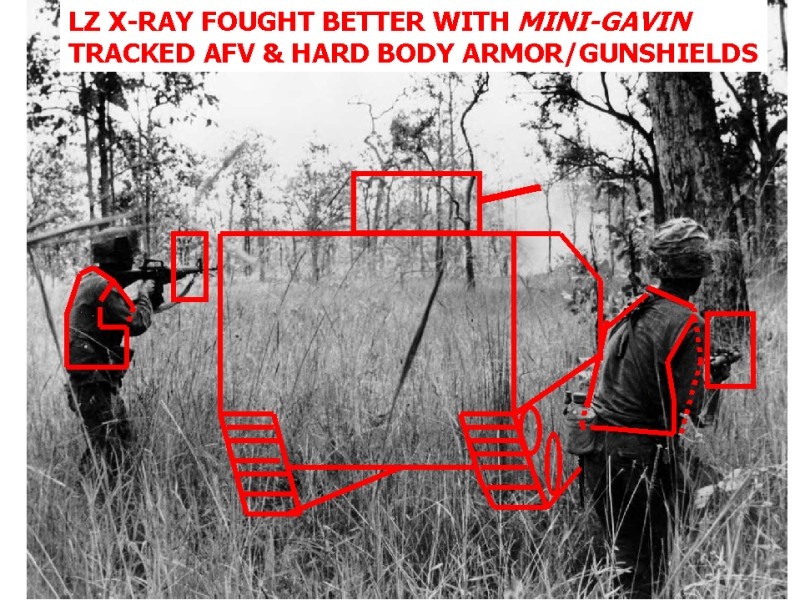
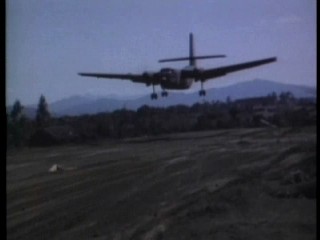
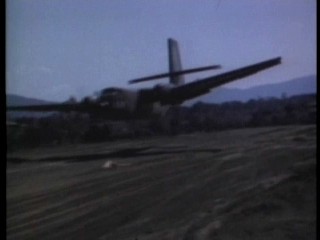
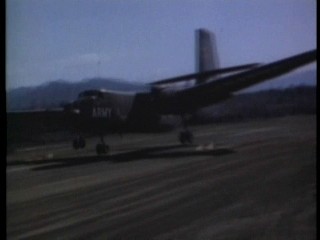
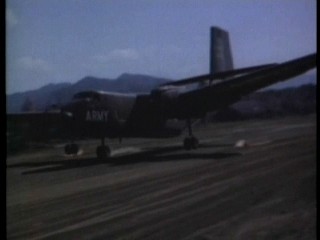
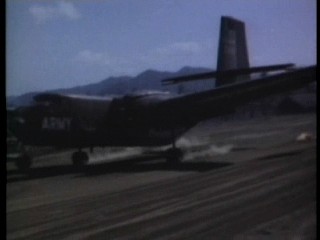
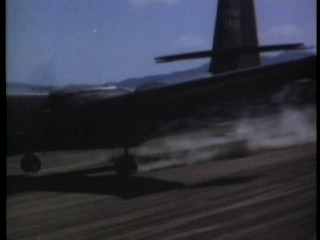
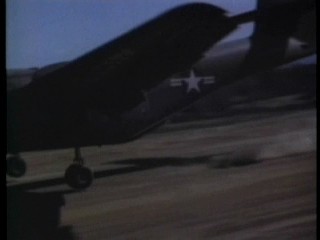
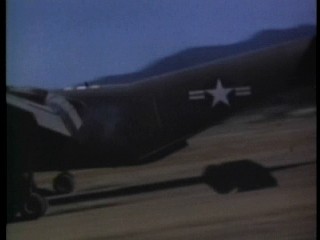
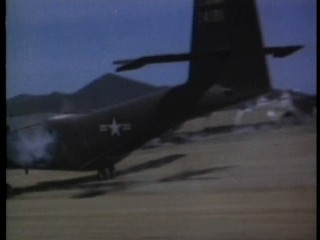
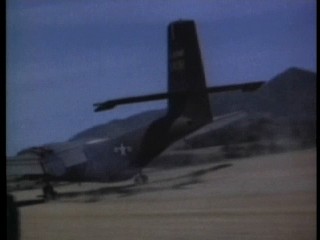
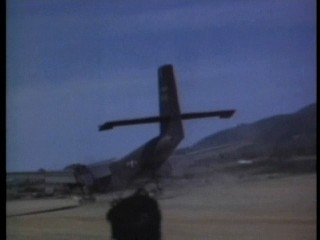
www.combatreform.org/airmobileCV2CARIBOUstoltransportandAIRBORNEoption.wmv
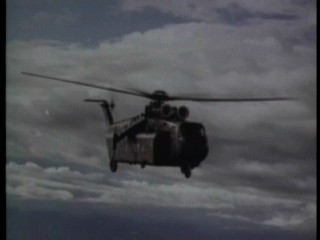
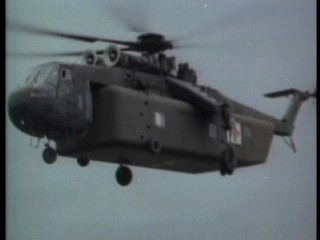
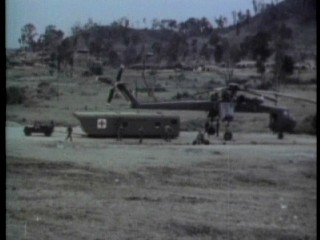
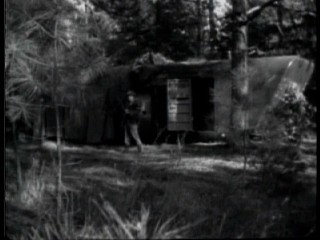
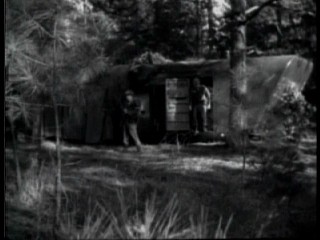
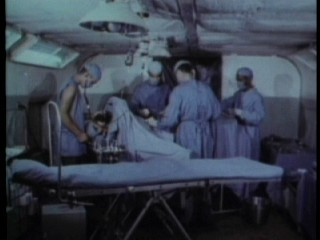
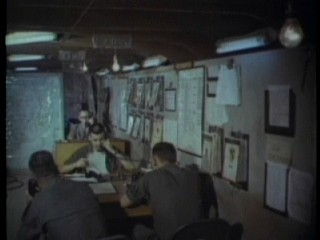
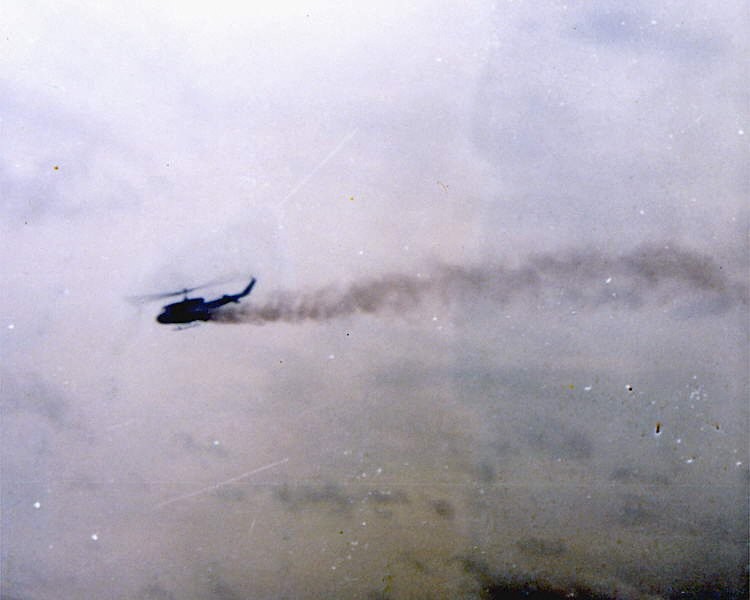
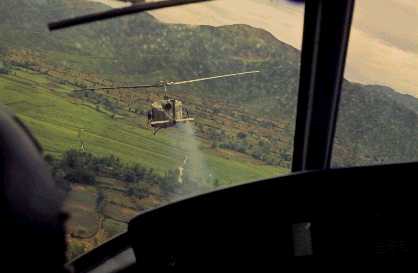
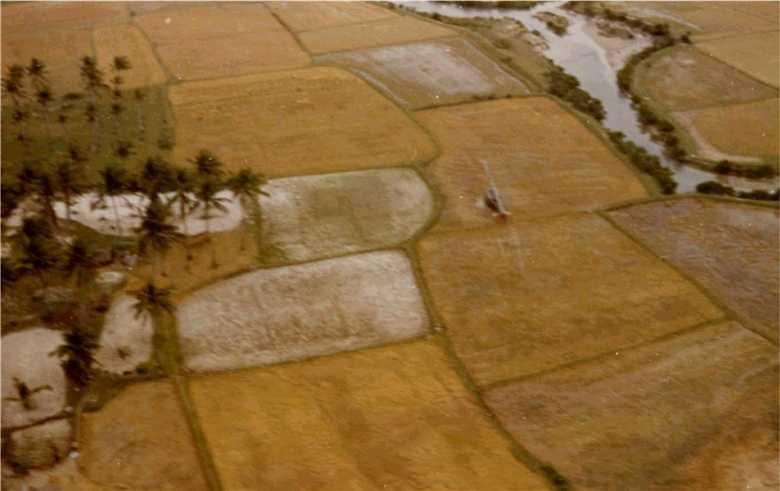
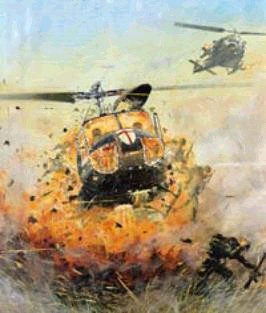

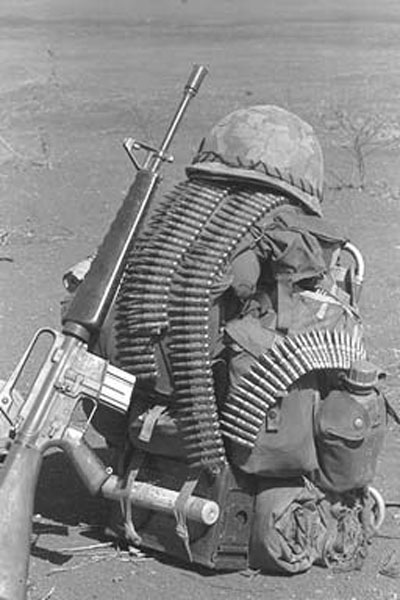


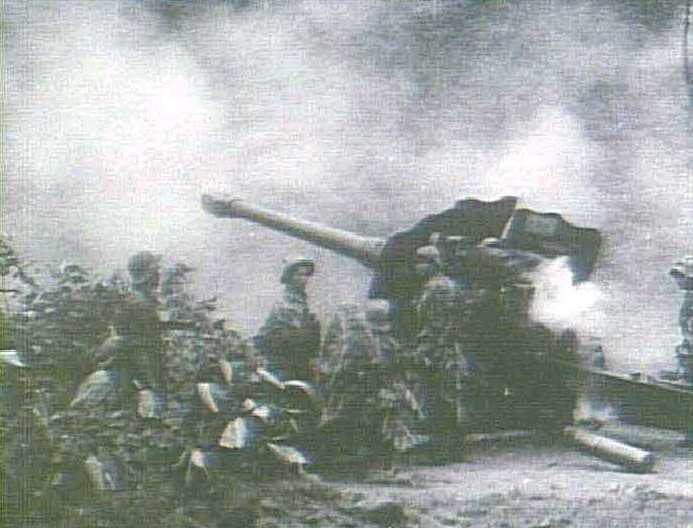
M46 130mm long range gun
American military commanders are taught to use generous volumes of firepower instead of manpower to accomplish their military objectives and to minimize their casualties [EDITOR: "send a bullet and not man" even if firepower without maneuver doesn't work to control the ground or defeat the enemy]. Thus the ideal tactical environment for the United States was to dot the landscape of South Vietnam with innumerable artillery firebases capable of achieving interlocking fields of fire. Fully aware of the tactical value of artillery, the American military would expend more than seven million tons of it on targets in Vietnam.
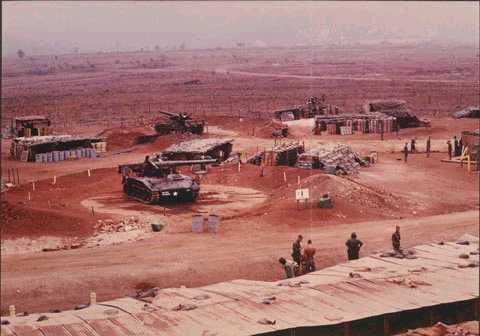
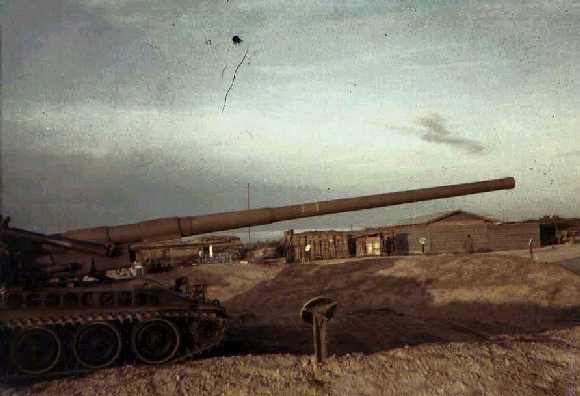
The only U.S. artillery that could match the M46 towed 130mm gun's range was the 175mm self-propelled gun that none of the Air Mobile light narcissists thought to make a lighter towed version of that would have been CH-47/CH-54/C-130 air transportable. 175mm SPGs had to be driven overland to get into position and there was no guarantee they'd make it through to a new location. Thus, we had no effective long-range artillery counter to the NVA's long range guns due to our own technotactical incompetence. Of course, after Vietnam, we retired all our 175mm SPGs.
By the beginning of 1972 most of the planned expansion and improvement of South Vietnam's armed forces had been completed, providing a formidable capability based on 11 infantry divisions fielding 120 infantry battalions. There were also 58 artillery battalions, 19 armored battalions of various types, and the appropriate engineer, signal, and other supporting arms and services. The Airborne Division and the Marine Division, along with 21 Ranger battalions, were the general reserve, while along the frontier 37 Ranger border defense battalions were positioned. The navy had grown to 1,680 craft of many types; the air force fielded over 1,000 aircraft. Most important of all, perhaps, were the Territorial Forces--the Regional Forces and Popular Forces--constituting at some 550,000 the bulk of the forces overall and providing the all-important close-in security by means of 1,679 RF companies and 8,356 PF platoons stationed throughout the provinces. Complementing the regular armed forces were the National Police, another 116,000 men, and the People's Self-Defense Forces, numbering more than four million.
The war in Iraq is at a major crossroads, somewhat similar to Vietnam in 1969. The Iraqi military is under the microscope, like the South Vietnamese, but on a much shorter leash and timeline. It will be on its own soon - and the sooner, the better. South Vietnam's Achilles heel was its dependence on the U.S. weaponry (later cut off by Congress) and way of waging war.
By October 1968, the marines noted that enemy attacks in their area of responsibility had fallen by more than 50 percent compared to preceding months. [EDITOR: I can see all the "spin" coming out how we were now "winning" the war"] Vandergrift Combat Base, built during the siege at Khe Sanh located west of Camp Carroll on Route 9, was dismantled by Army of the Republic of Vietnam (ARVN) forces. Salvaged materials from Vandergrift were used to construct a new ARVN combat base at Camp Carroll. In October, the marine base at the Rockpile was closed, leaving Camp Carroll as the westernmost major installation along Route 9. As the marines left the DMZ area, they passed control over to units of the U.S. Army and the ARVN. After a time, no U.S. forces were located in the western portion of northern I Corps; the North Vietnamese slowly began to rebuild their base areas along the Vietnam-Laos border. [EDITOR: we refuse to hold the ground by barriers or maneuver units because when we fight the NVA we get hurt. We failed to defeat their style of war decisively so we could stay and control the ground to keep South Vietnam free, so we left and told the ARVN to defend themselves from the NVA, a task we couldn't even do well]
1972: the Easter Offensive: NVA repulsed but 150, 000 of their troops stay in the South
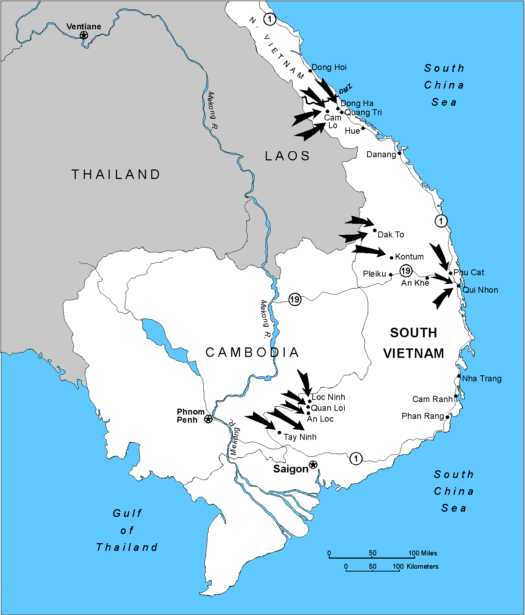
On March 30, 1972, the NVA launched its largest offensive so far in the Vietnam War. Nearly 30,000 Soldiers, with tanks, artillery and missiles, crossed the DMZ. Hundreds of rockets and artillery shells slammed into Camp Carroll and every other ARVN installation in the area. Carroll received more than 200 rounds of Soviet 130mm fire in the first hour of the attack. The U.S. Army adviser to the ARVN at Camp Carroll noted that the enemy incoming rounds caused tremendous morale problems because the South Vietnamese were not used to being on the receiving end of accurate artillery fire. Three regiments of NVA artillery continued to pound the ARVN firebases, firing more than 11,000 rounds in the first day of the Eastertide Offensive. As ARVN gun crews sought shelter, their counterbattery fire became less and less effective, and the NVA offensive continued to intensify. The only guns that could reach the NVA 130mm artillery were the 175mm guns at Camp Carroll and Dong Ha. Whenever the ARVN 175mm guns fired, the NVA countered with a heavier barrage. The ARVN artillerymen abandoned their positions.
Between 1973 and 1975 South Vietnam's military security further declined through a combination of old and new factors. Plagued by poor maintenance and shortages of spare parts, much of the equipment provided Saigon's forces under Vietnamization became inoperable. A rise in fuel prices stemming from a worldwide oil crisis further restricted ARVN's use of vehicles and aircraft. South Vietnamese forces in many areas of the country were on the defensive, confined to protecting key towns and installations. Seeking to preserve its diminishing assets, the South Vietnamese Army became garrison bound and either reluctant or unable to react to a growing number of guerrilla attacks that eroded rural security. Congressionally mandated reductions in U.S. aid further reduced the delivery of repair parts, fuel, and ammunition. American military activities in Cambodia and Laos, which had continued after the cease-fire in South Vietnam went into effect, ended in 1973 when Congress cut off funds. Complaining of this austerity, President Thieu noted that he had to fight a "poor man's war." Vietnamization's legacy was that South Vietnam had to do more with less.
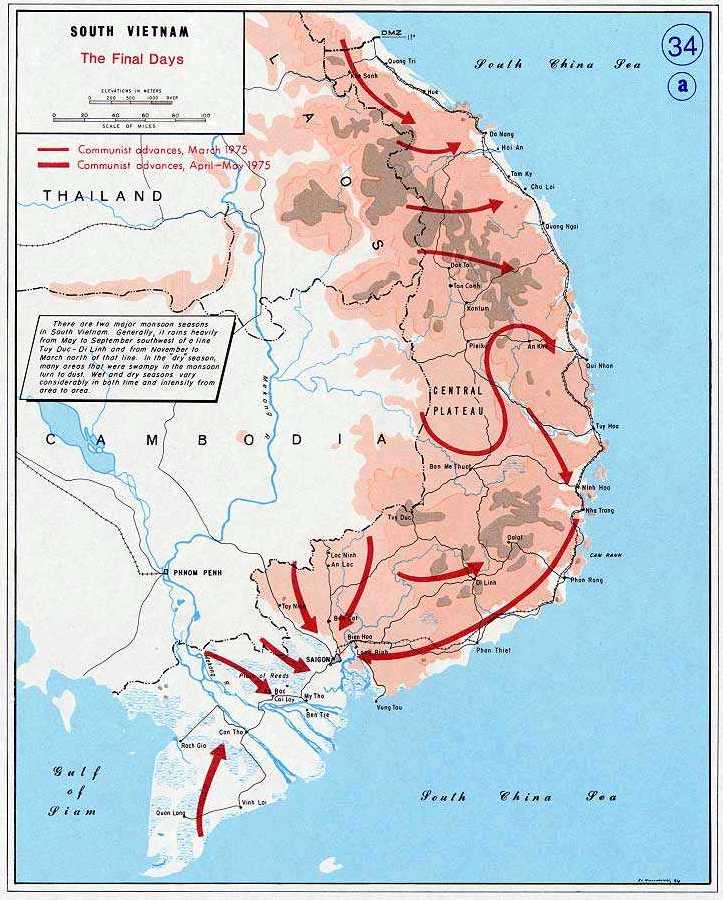
...the Central Highlands Ban Me Thuot had fallen, and the bloody evacuation along Route 19 from Pleiku to Qui Nhon had shaken the entire nation of South Vietnam. Prior to the evacuation, the Marine Division had been ordered to leave its operating area in Quang Tri to move down to defend Da Nang from the northern end of the Hai Van Pass southward. The Marine Division Headquarters had moved down to Non Nuoc Base in Da Nang. Only a light division headquarters element, under the command of Deputy Division Commander Colonel Nguyen Thanh Tri, was left up in the Hue area.
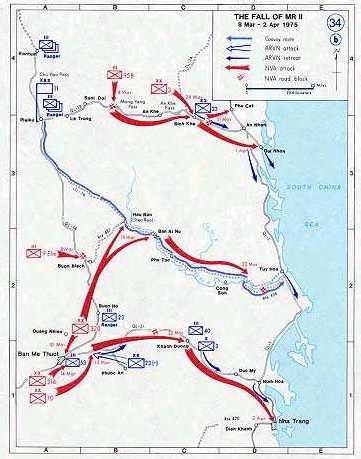
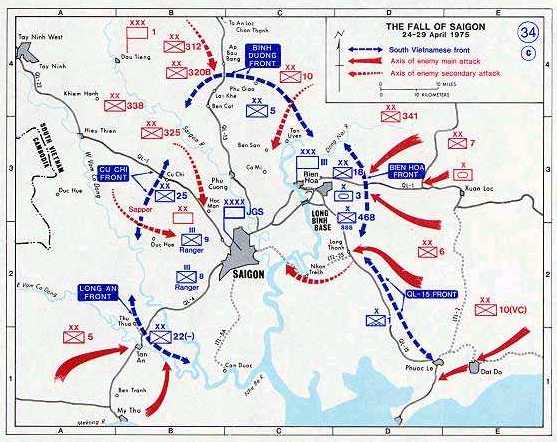
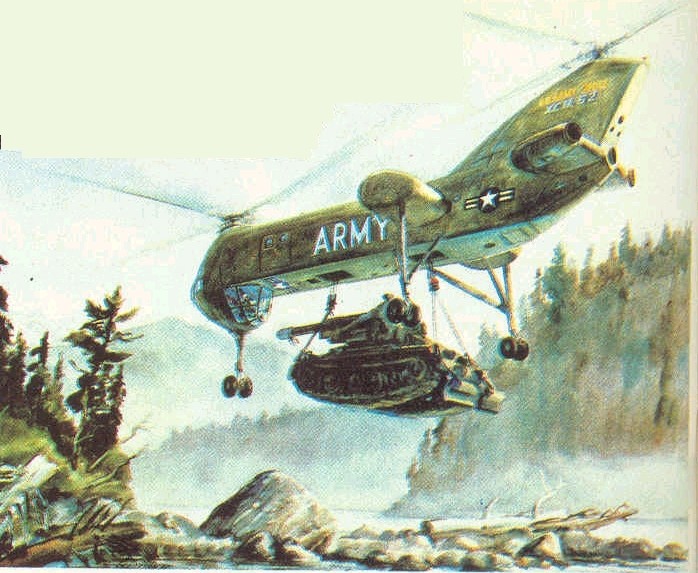
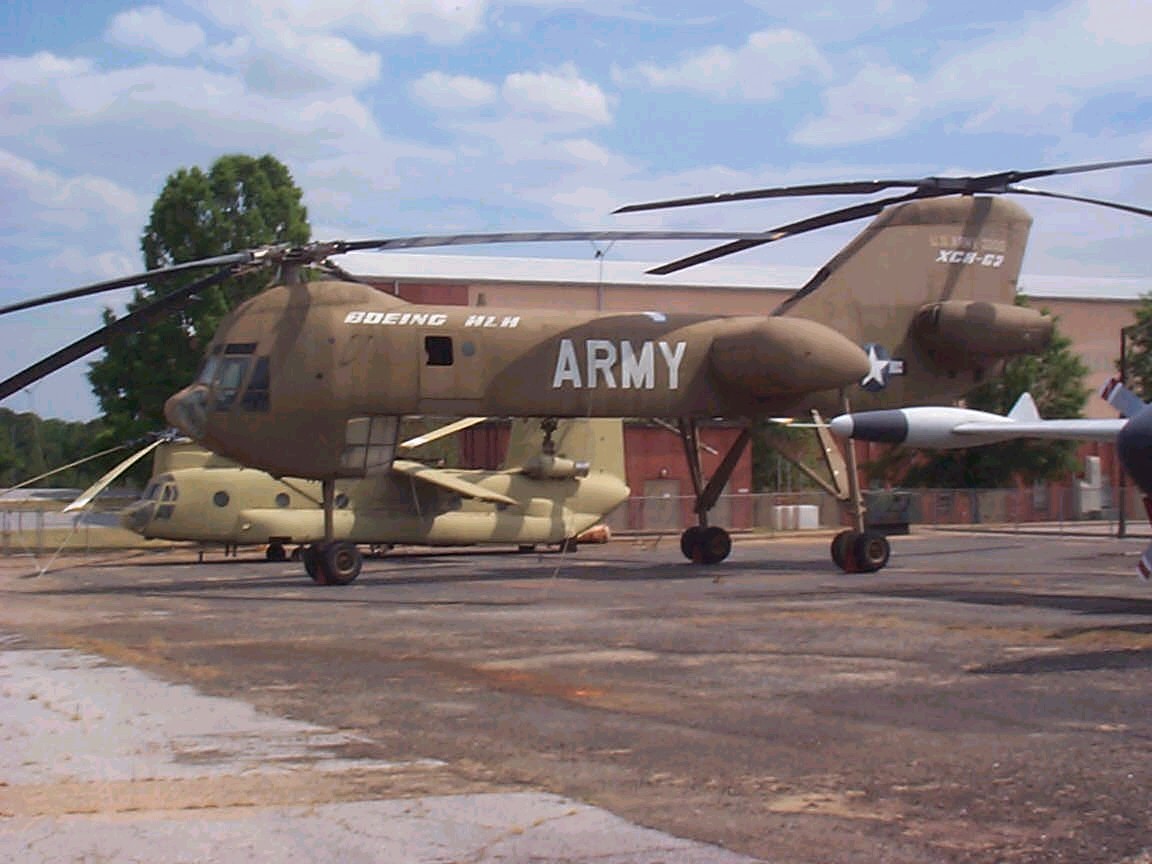
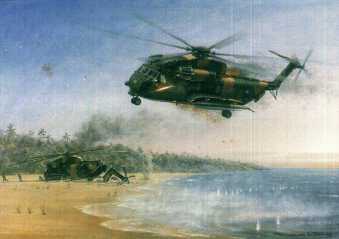
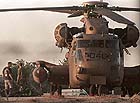
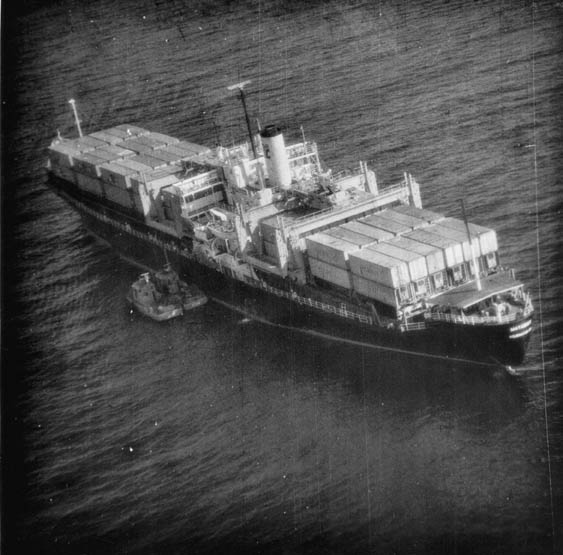
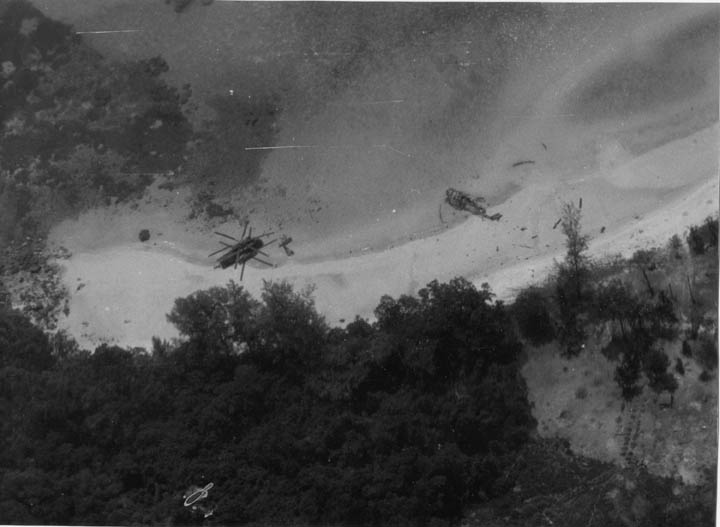
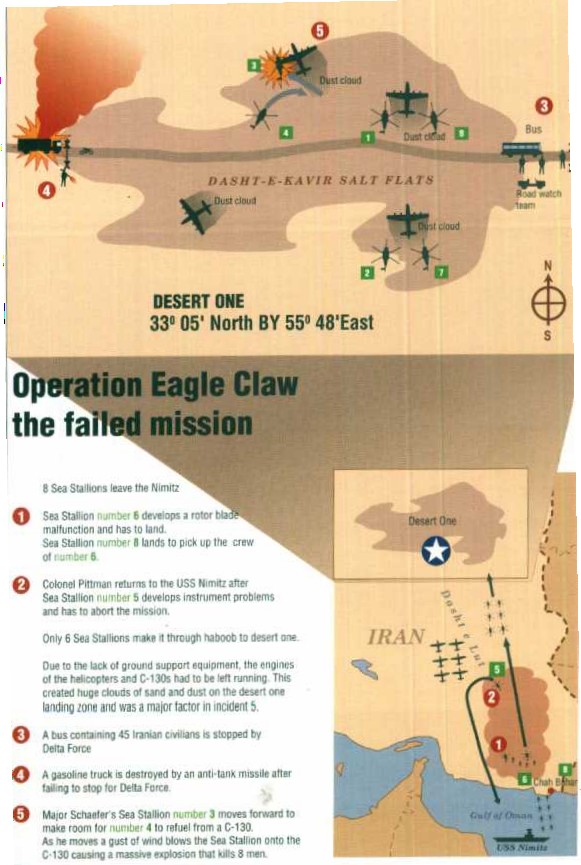
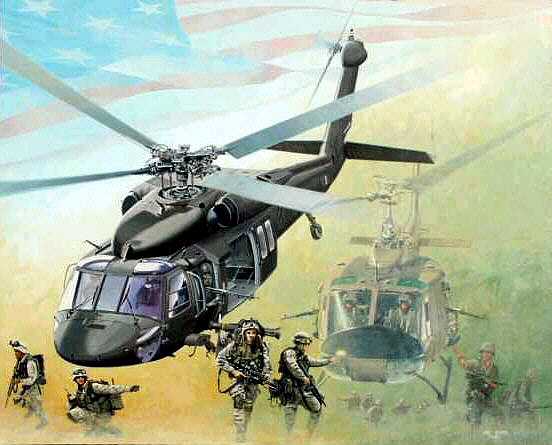
The failed dismounted infantry air assault mentality has been passed on to a new generation of light narcissists operating more complex and costly to operate helicopters absurdly painted in dark green to make a nice contrasting target for the enemy to fire on and shoot them down; the debacle in Somalia could have been prevented had light tracked AFVs been employed even separately from the 3D maneuver force...
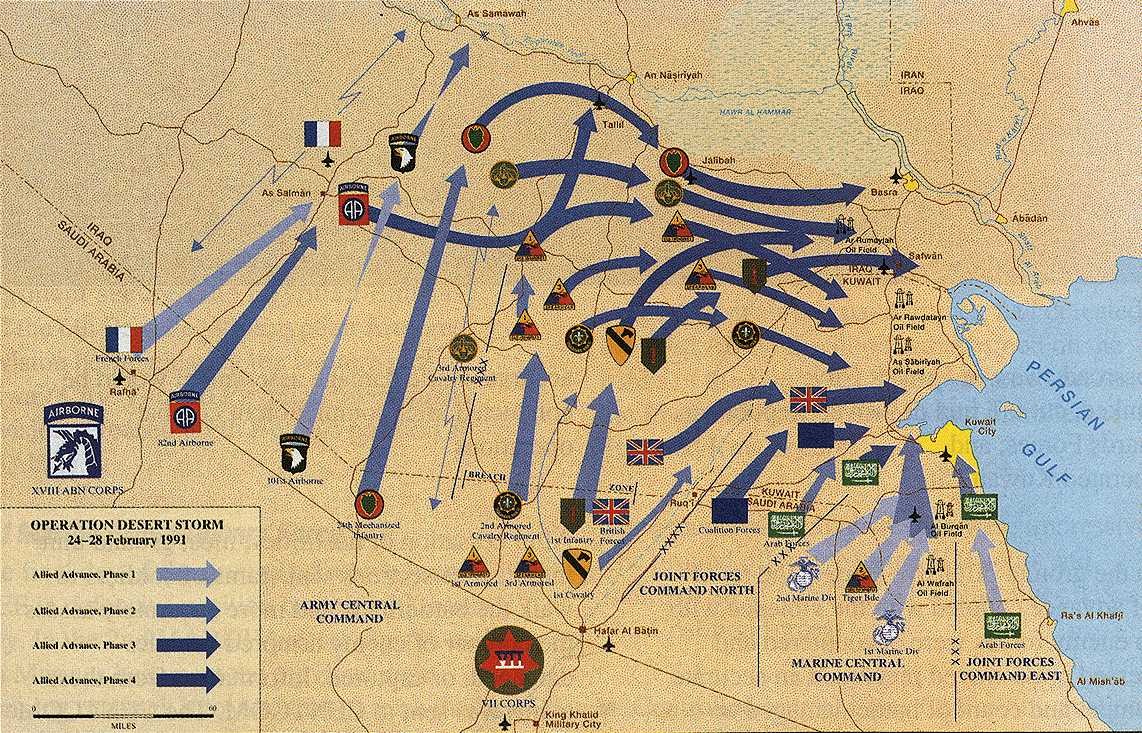
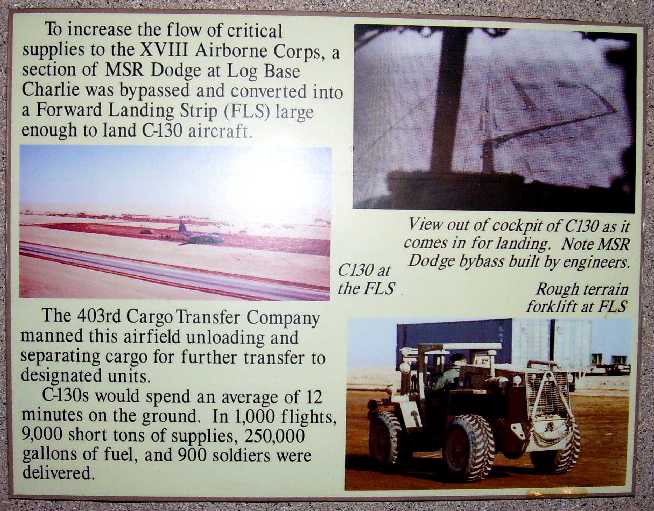
Unit: 3rd Battalion, 73rd Armor, 82nd Airborne Division
Operation: Desert STORM
Troopers: 900
Country: Saudi Arabia/Iraq
Drop/Landing zone: Log Base C
Aircraft: C-130E/H Hercules turboprop aircraft (1, 000 sorties)
Equipment airlanded: 45 x M551 Sheridan light tanks, Humvee trucks, 250,000 gallons of fuel, 9,000 tons of supplies
Type Air delivery: STOL airland
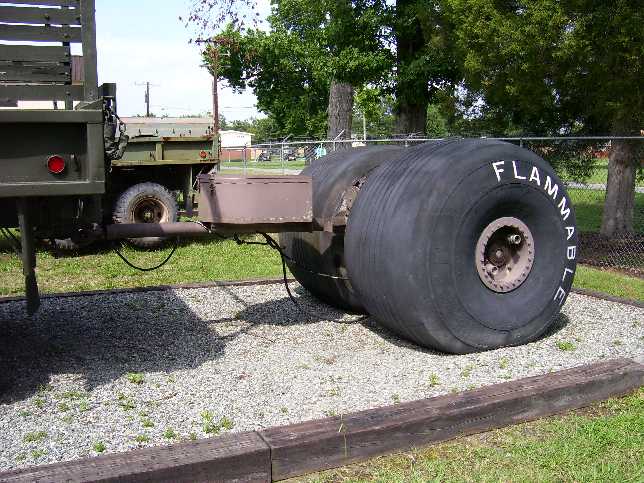
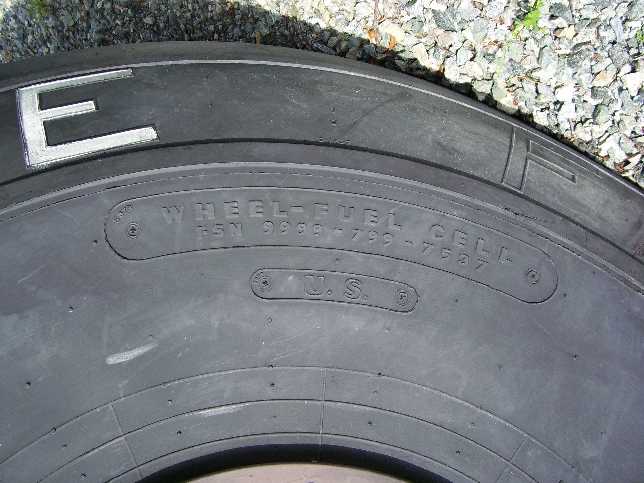
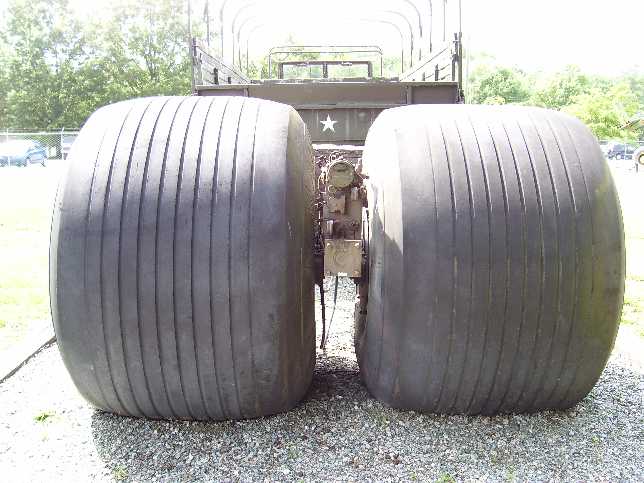
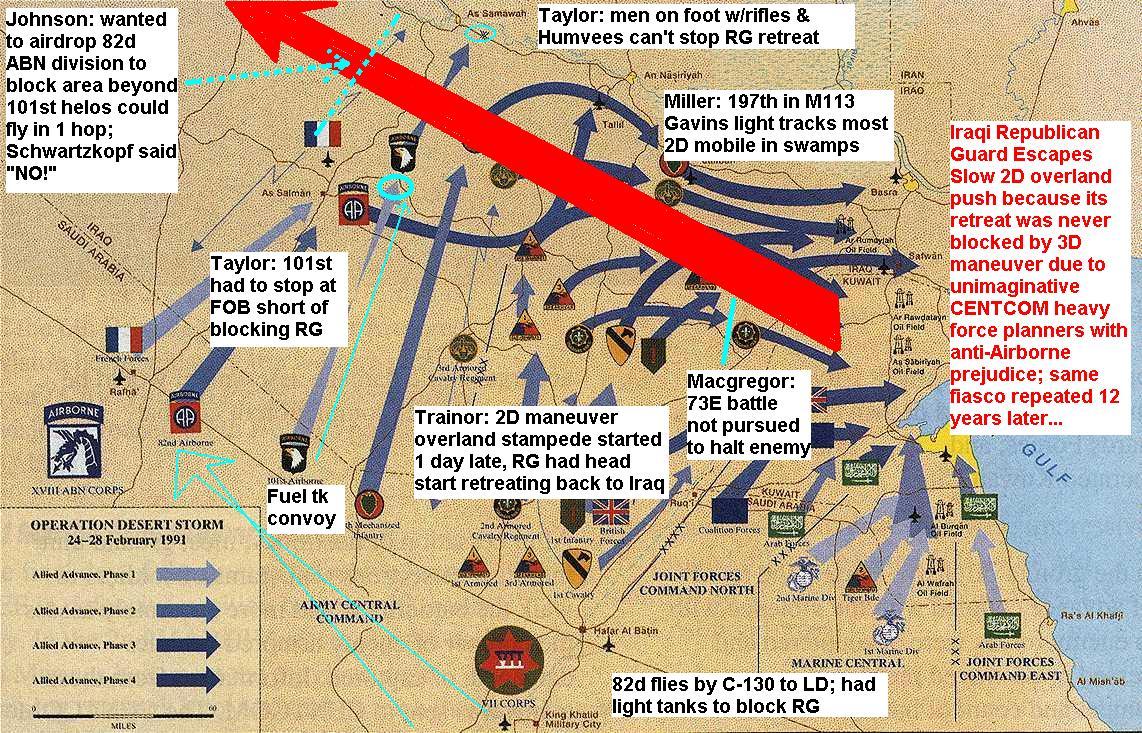
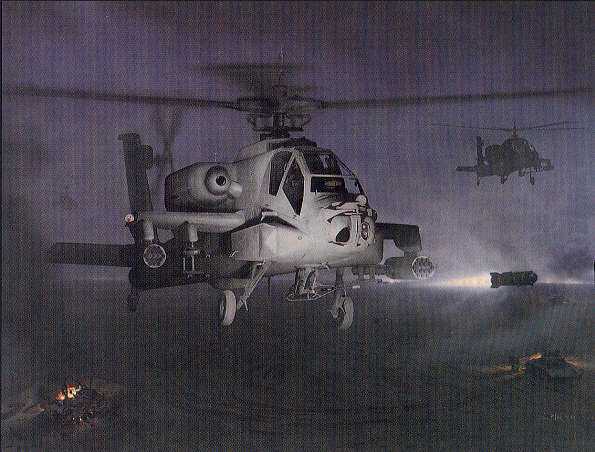
"Official" Version of Events vs. One View of the "On the Ground" Version of
Events
Another solution would be to air-mechanize the 101st with Mini-Gavins so they wouldn't have to depend on someone else with armor to help out and to make their helos fly faster and farther with Piasecki VTDP/wings. All covered in our AMS book. Another thing we need to do is conserve fuel and TOW helicopters on the ground if we don't need them to fly.
"During the last few days many pilots have come up to me and asked me if I had seen the movie 'Blackhawk Down'.
Star 41-44 Little Bird Assault
Super 62 - Trail Blackhawk
Super 65 (Me, Capt. Richard Williams)
Super 66 (CW3 Stan Wood, CW4 Gary Fuller)
Super 67 (CW3 Jeff Niklaus, CW2 Sam Shamp)

Super 63 C&C
Super 68 SAR
"NSDQ" Nightstalkers Don't Quit
Afghanistan: Chinook Down!
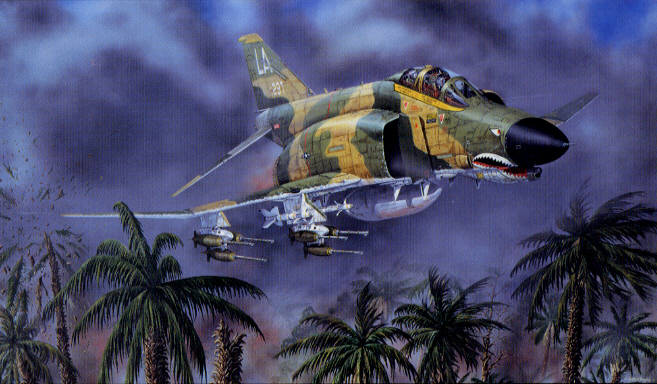
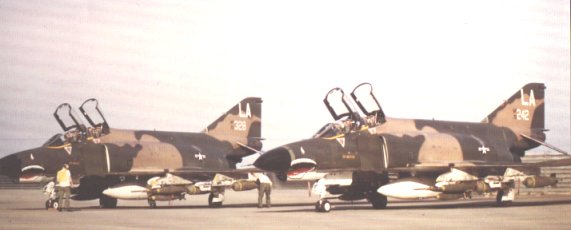
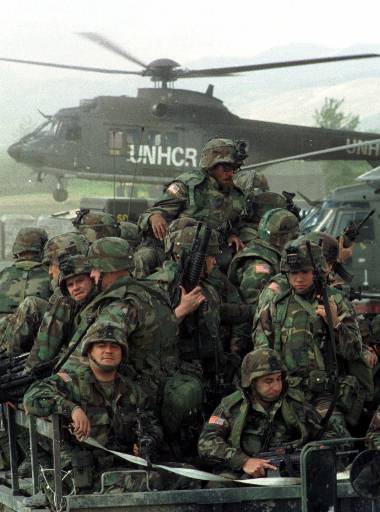
After all the American deaths and maimings in Iraq due to riding around in poorly armored wheeled trucks, "Death from a Truck" isn't so funny anymore, is it?
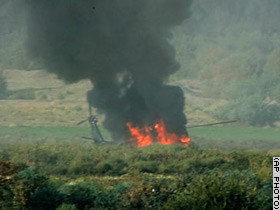
UH-60 burning after being shot down over Iraq; our own stupidity flying around in DARK GREEN when the sky is gray and the ground is tan is killing our men/women today
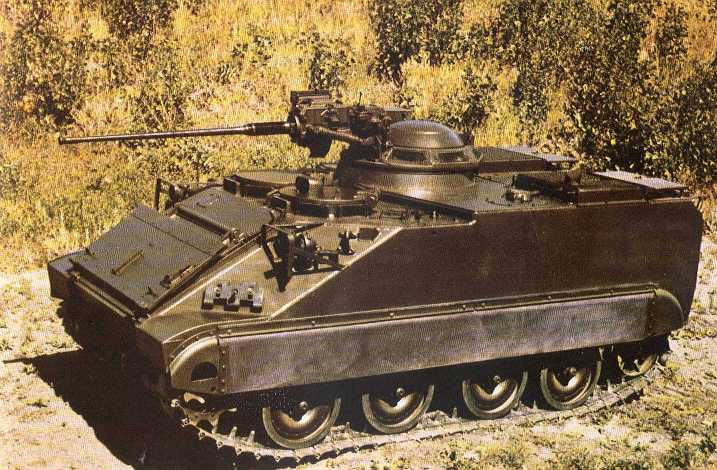
www.combatreform.org/asp30mmonFAVdunebuggy.wmv
ATK Phantom Works
(480) 324-8621
FAX: 8759
www.combatreform.org/m113combat.htm
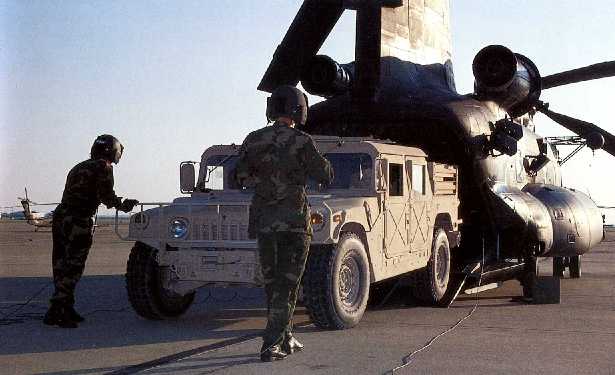
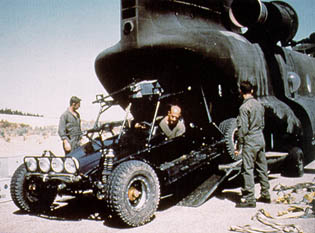
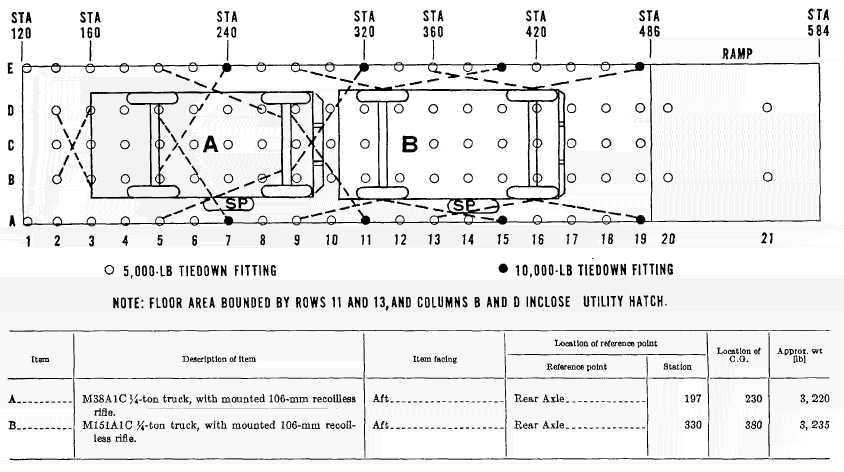
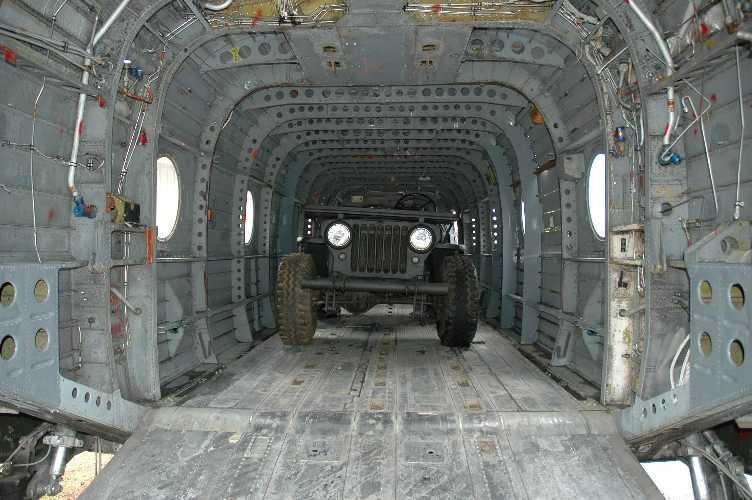
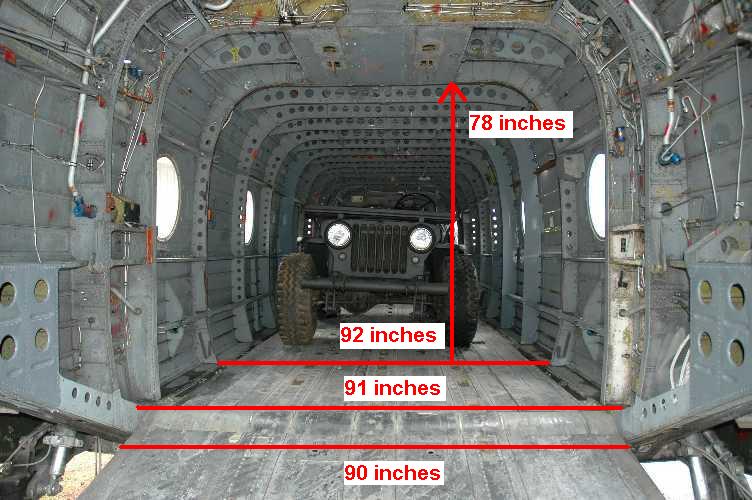
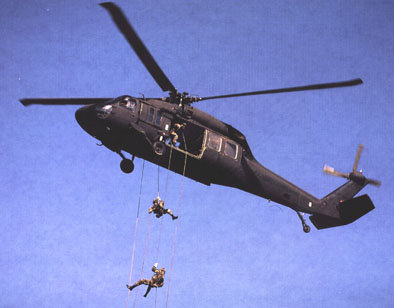

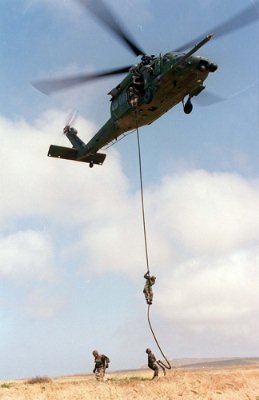
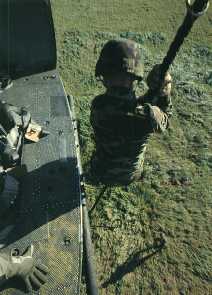
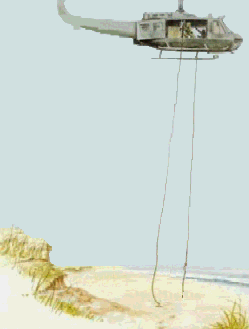
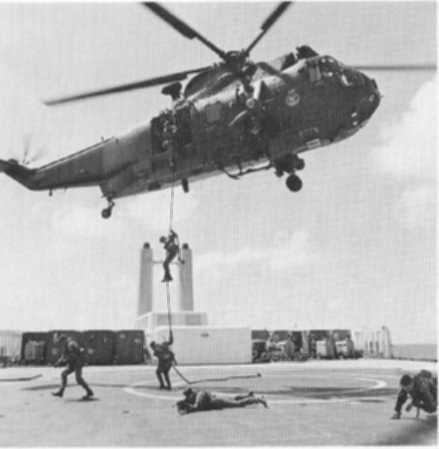
Hovering above the midships deck of the Canberra (passenger cruise ship converted into troop ship), 40 Commando Royal Marines "rapid rope" from a 846 Squadron SeaKing helicopter en route to combat in the Falklands in 1982..
P.O. Box 270, 145 Towery Street
Guntown, Mississippi 38849
1(800)821-4391 Fax: 1(601)348-5749
WEB site: http://www.columbianrope.com
NOTE: The following excerpt modified from FM 7-93 Long Range Surveillance Operations, Chapter 6 only describes FRIES INSERTION procedures even though its acknowledged as BOTH an Insertion and EXTRACTION system:
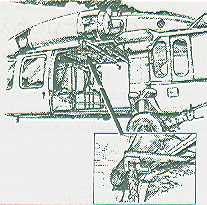
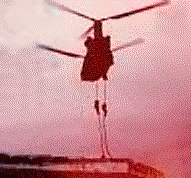
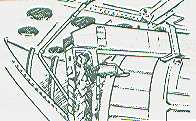
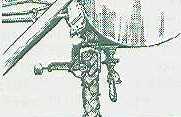
One of the things that hurt on Oct 3, 1993 in Somalia was the Quick Reaction Force (QRF) from the 10th Mountain Division (Light) was a conventional force that couldn't helicopter fast rope in to aid the surrounded Rangers and Delta force troops! The mobile reserve must be able to go exactly where the troops they are supporting can go. But the current mentality by DEFINITION is that only Pathfinders, 101st AA, 82d Airborne and SOF can fast rope. Regular infantry are not considered "mature" enough to fast rope. In fact, a Squad Leader in the 101st Airborne (Air Assault) writes:
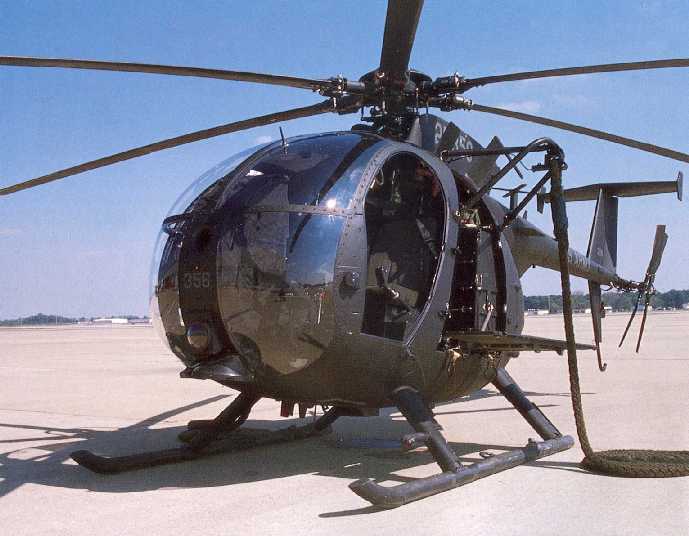
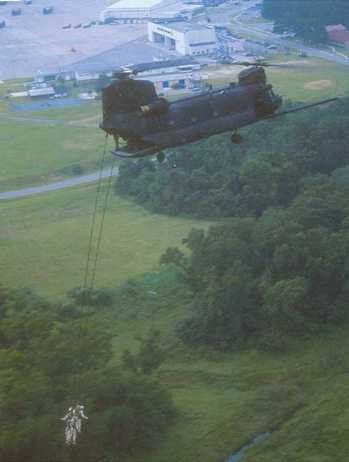

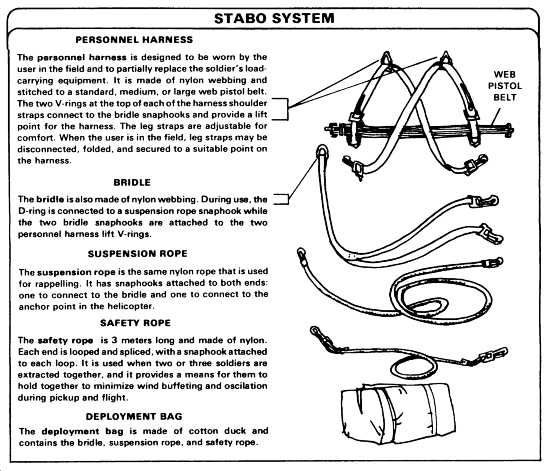
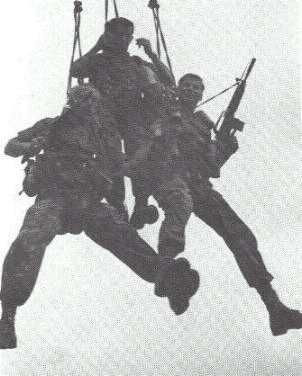
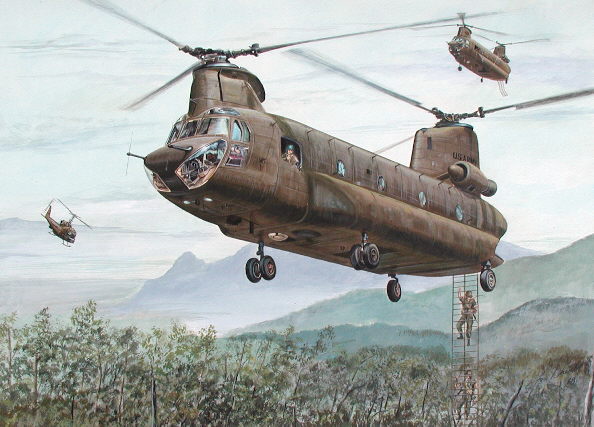
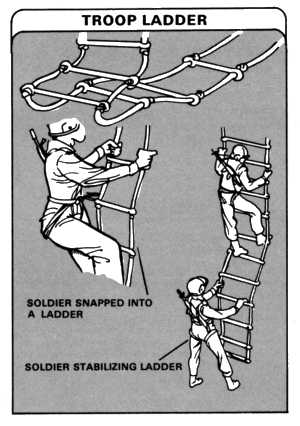
In early 1966, the North Vietnamese Army (NVA) began massing forces in the northern provinces of South Vietnam, and the marines were ordered north to face this threat. The area in the eastern Demilitarized Zone (DMZ) had been heavily infiltrated by the enemy. The 324B NVA Division had crossed the DMZ and was quite willing to tangle with the marines. Reconnaissance patrols were unable to stay in the field for more than a few hours -- and many for only a few minutes -- before it was necessary to extract them under heavy enemy fire. A new phase of the war in Vietnam was about to begin.
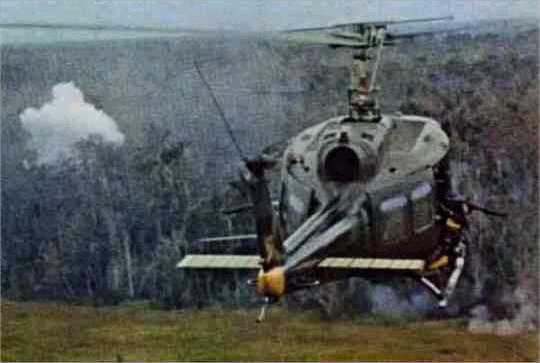
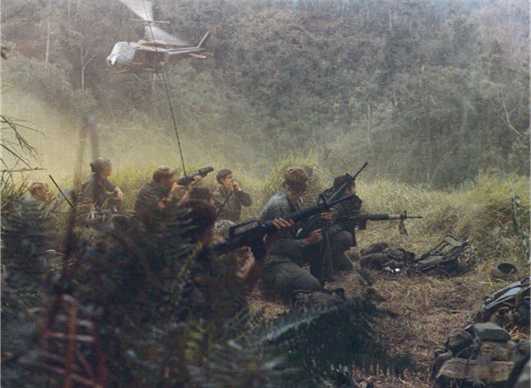
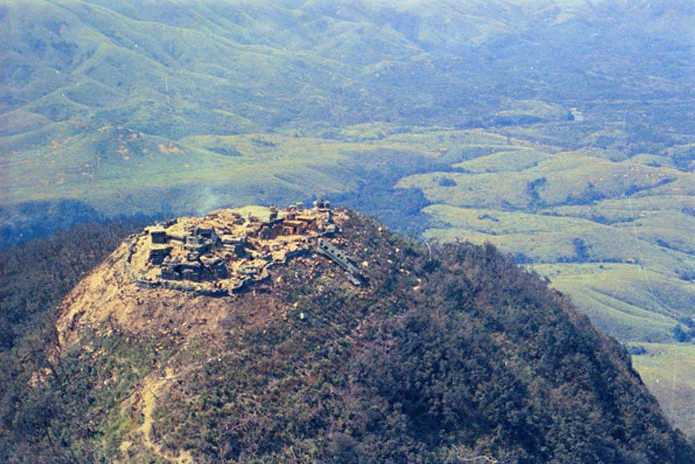
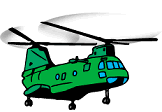 Photo #4005
Photo #4005
CH-46 Ladder Extract
Recon returning from a ladder extract An Hoa
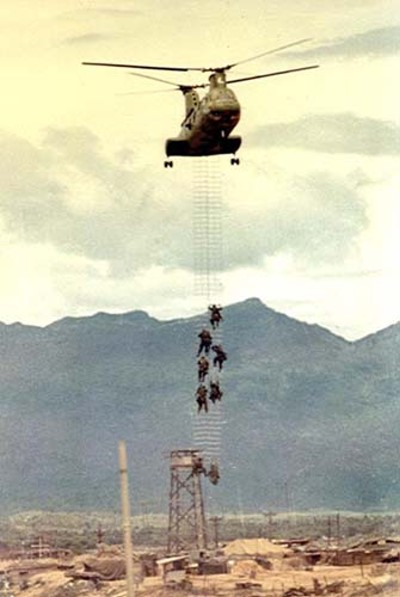
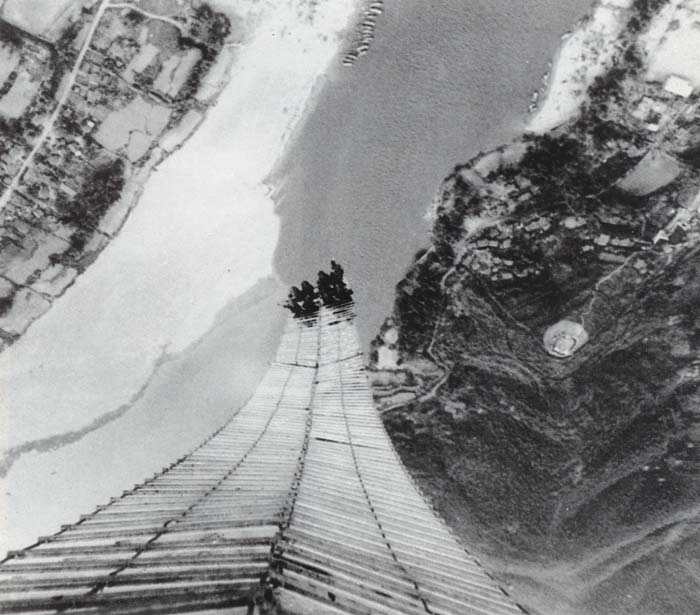
HMM-263 (1968-69 Marble Mountain)
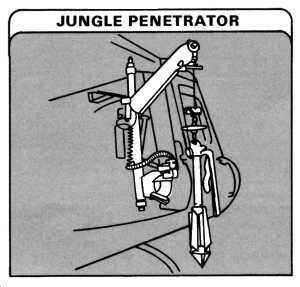
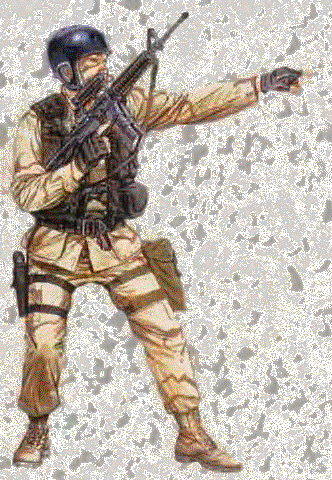

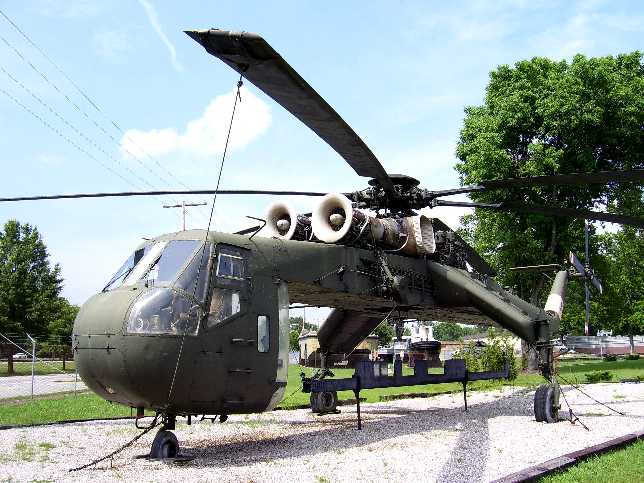
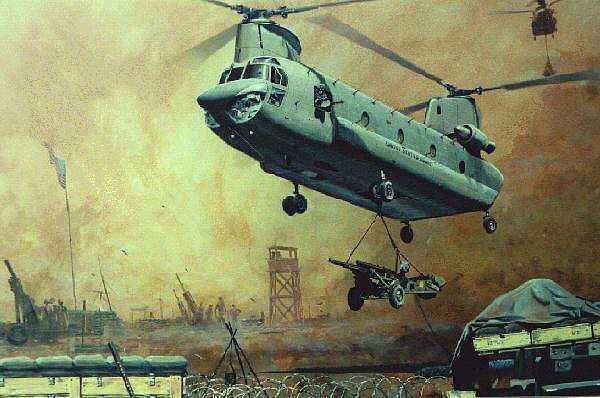
After Vietnam, the 101st simply replaced their short-range M102 105mm towed howitzers with another short-range 105mm howitzer, the M119 based on the British light gun of 1982 Falklands war fame. So much for doing something original and advancing capabilities; if confronted with enemies with Vietnam-era M46 130mm guns, today's "Air Assault" units if congregated in any kind of laager or firebase could be smashed.

But is it too much to expect that General Westmoreland, General Earl Wheeler, and their staffs might have better understood their professional obligations in the face of a novel challenge? No, that is not too much to expect. It is not too much to expect a professional Soldier to put his country's interests
above those of his service [hear that USMC?] or his personal reputation, and that was precisely the problem. Thanks to Nikita Khrushchev's famous speech about "wars of national liberation" as the new face of the anti-imperialist struggle, and to President Kennedy's conclusion that the United States needed to invest more resources
into our capabilities to fight counterinsurgencies, a furious argument broke out in the early 1960s within the middle ranks of the U.S. Army. While some major figures, such as General James Gavin, supported Kennedy's view, most senior Army brass resisted it firmly. General George H. Decker, Army Chief of Staff from 1960 to 1962, summarized this view with the comment that "any good Soldier can defeat a guerrilla."
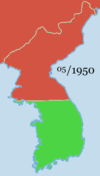
In the Korean conflict, American combat units lacked cavalry. Armor units, no matter what their unit designation, were too heavy and road-bound to be considered cavalry. Therefore, American forces were more likely to arrive on the battlefield "lastest with the leastest" than the more desirable "fustest with the mostest." Major General James M. Gavin, a senior officer with extensive airborne experience in World War II, vigorously made this point in his seminal piece of writing, "Cavalry-and I Don't Mean Horses," in 1954. He argued that America's lack of true cavalry in its military provided the common thread in explaining the nation's military defeats in the Korean War's early months.
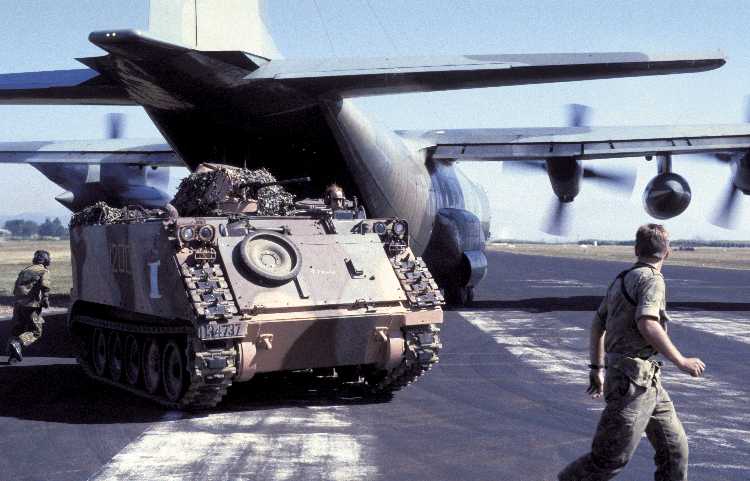
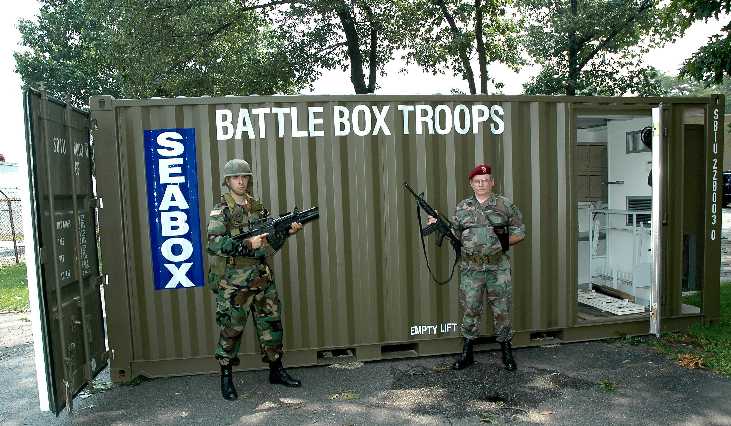
www.geocities.com/strategicmaneuver/battleboxes.htm
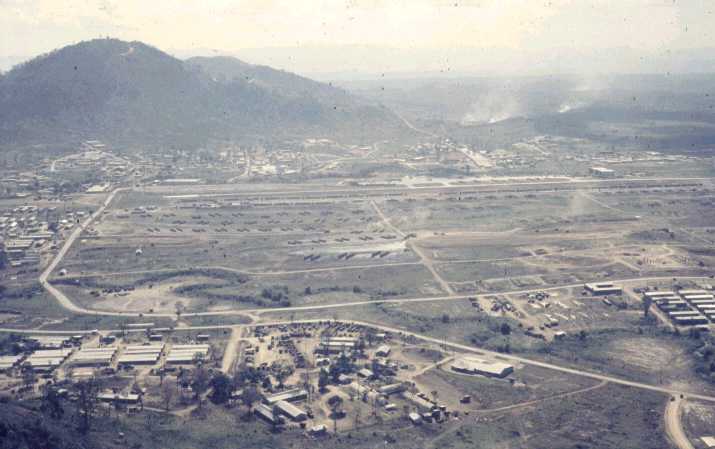
Notice the sprawling An Khe FOB is a clusterfuck of vulnerable static buildings.
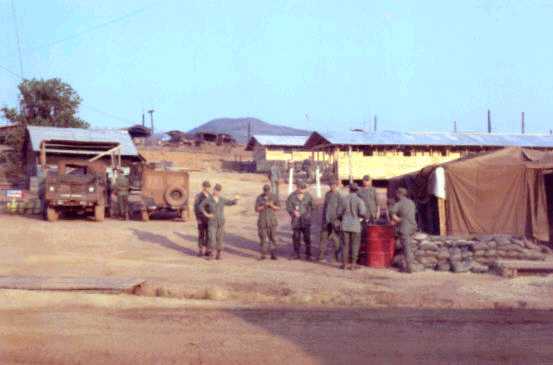
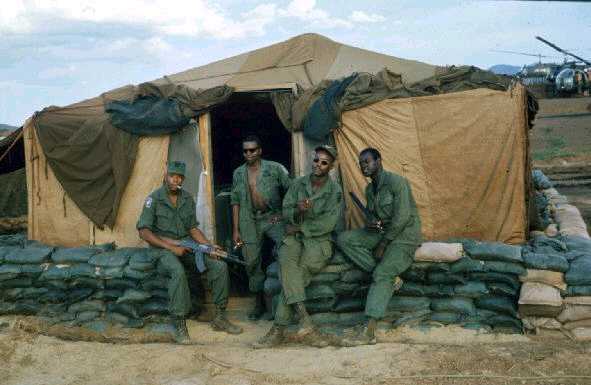
If 1st Air Cav had been ISO containerized in BATTLEBOXes they would have been combat-ready in 2 DAYS after arrival. And they would have been HARDENED by earth fill, sand bags, concrete (Old Ralph Zumbro trick: mix in with sand let rain do rest) etc. and even underground to withstand even the heaviest NVA bombardments. Once you have a rigid metal shape you can do miracles of combat fortifications...
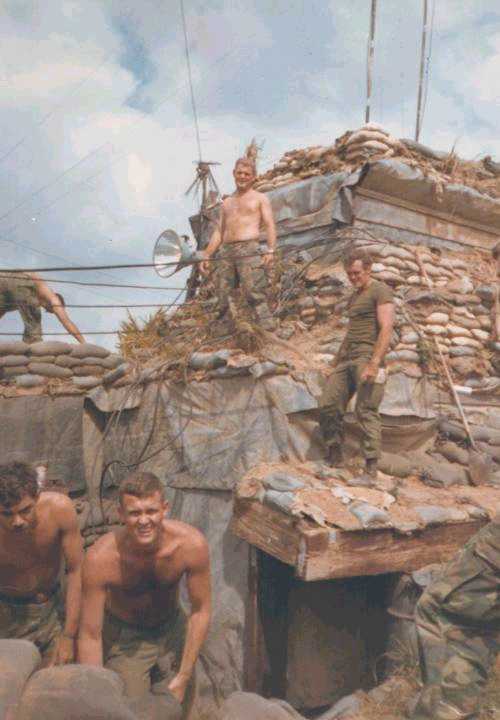
The weight of the hundreds of 30 pounds each sand bags alone could collapse these make-shift "bunkers".
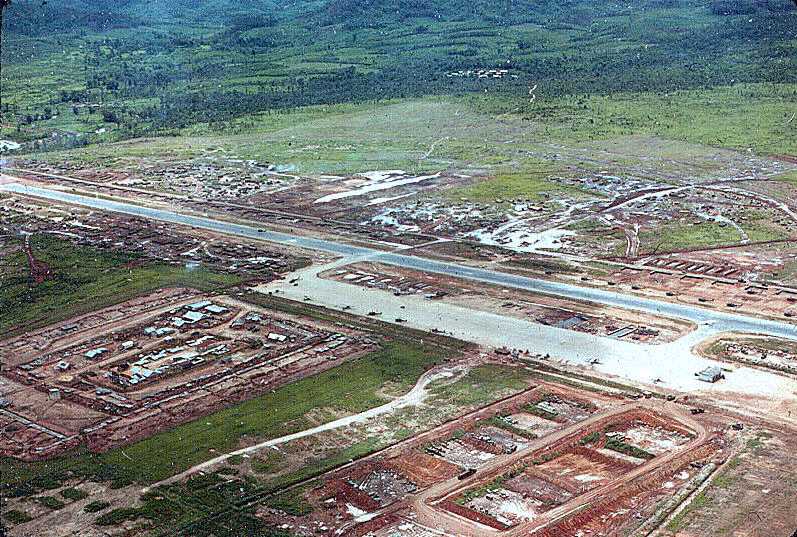
Dak To FOB: note the long runway for C-130s
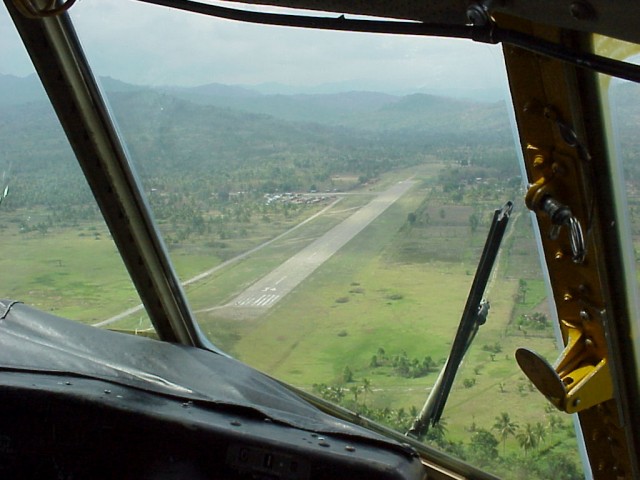
What a C-130 pilot sees from the air before landing...
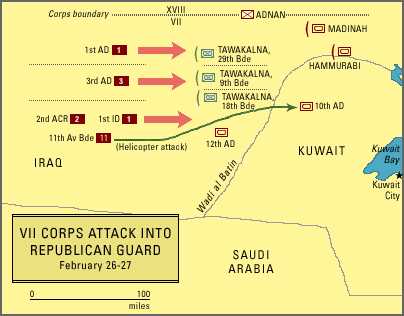
SHIELD AND SWORD
Grigory Kuznetsov, Candidate of Sciences (Technology)
May 13, 2002
Pg. 27
FIXING U.S. ARMY AIR ASSAULT FORCE STRUCTURE & DOCTRINE
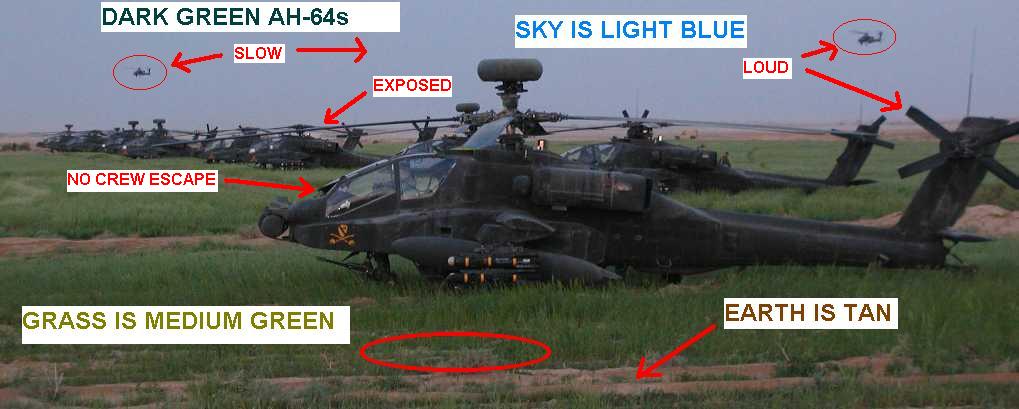
10. We need better Air and Ground Forward Air Control from both the USAF and the Army
NOTES
CSC 1988
SUBJECT AREA Aviation
2. Tactical/Strategic Errors
2. The Contradiction
B. Insurgency Destroyed
C. NVA Main Force Intervention
D. South Vietnam Falls
(b) New Look
(c) No Veto
(d) Operation Chopper
2. Glorified Strengths
3. Forgotten Vulnerabilities
2. Waiting Game
2. Village Operations
2. Casualty Rates
B. Counterinsurgency Strategy
C. American Leadership Retrospective
D. The Reformers
-The Strategic Bombing Campaign
-The Interdiction Campaign
-The Main Force Battle
-The Pacification or Village War
-Separation from villages retains insurgency infrastructure
-Necessarily small forces lifted can be counterattacked
-Enemy strike elements are unfamiliar with terrain
-Easily surrounded and defeated
-Ambushes easily employed against landings (15:27)
If the Army had followed a counterinsurgency strategy, both the human
and financial costs of the war would have been significantly lower.
This in turn would have assisted to some extent in maintaining
popular support within the United States for American participation
in the war. It would have placed the Army in a position to sustain
its efforts in a conflict environment certain to produce a protracted
war. True to its concept, the Army focused on technological and
logistical dimensions of strategy while ignoring the political and social dimensions that formed the foundation of the counterinsurgency
warfare. (6:233)
